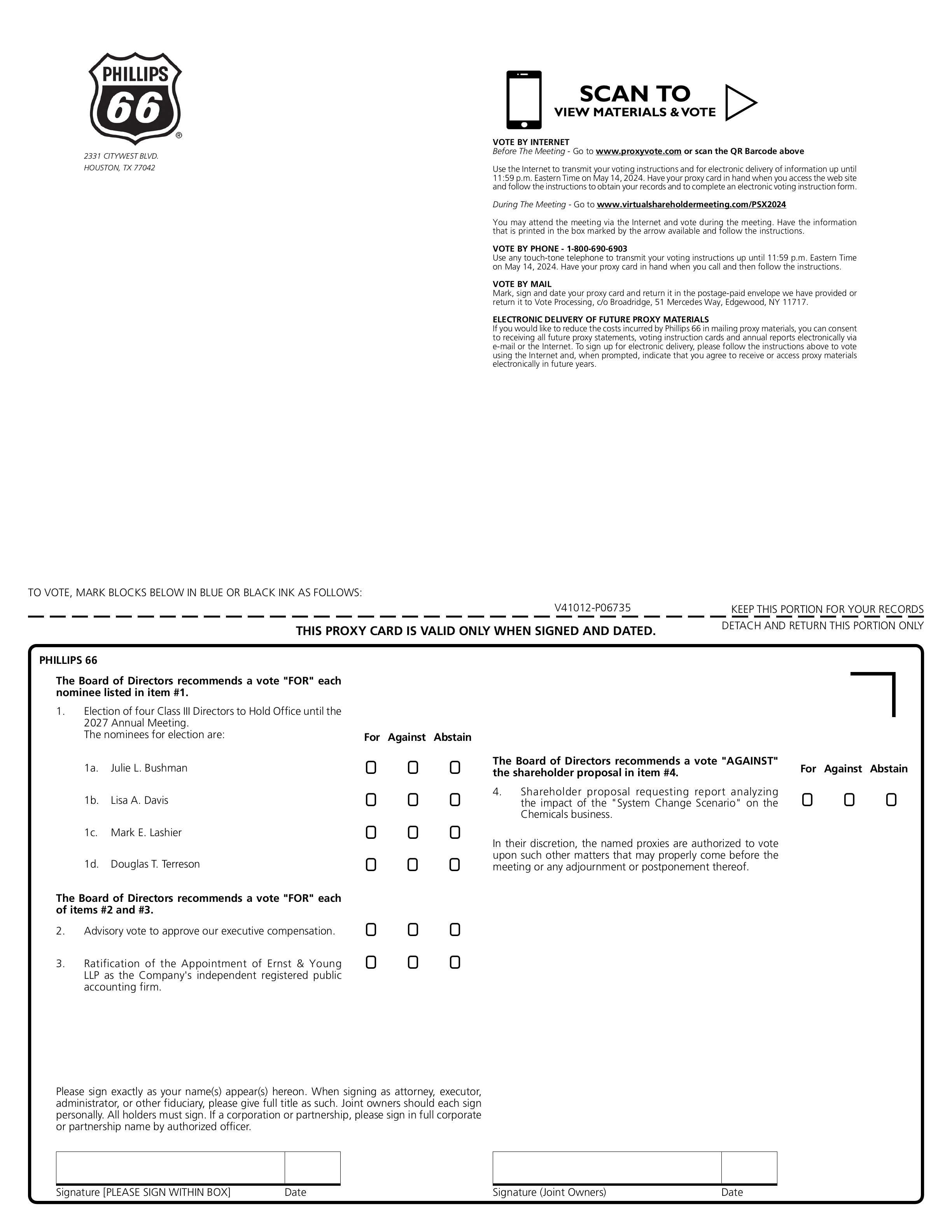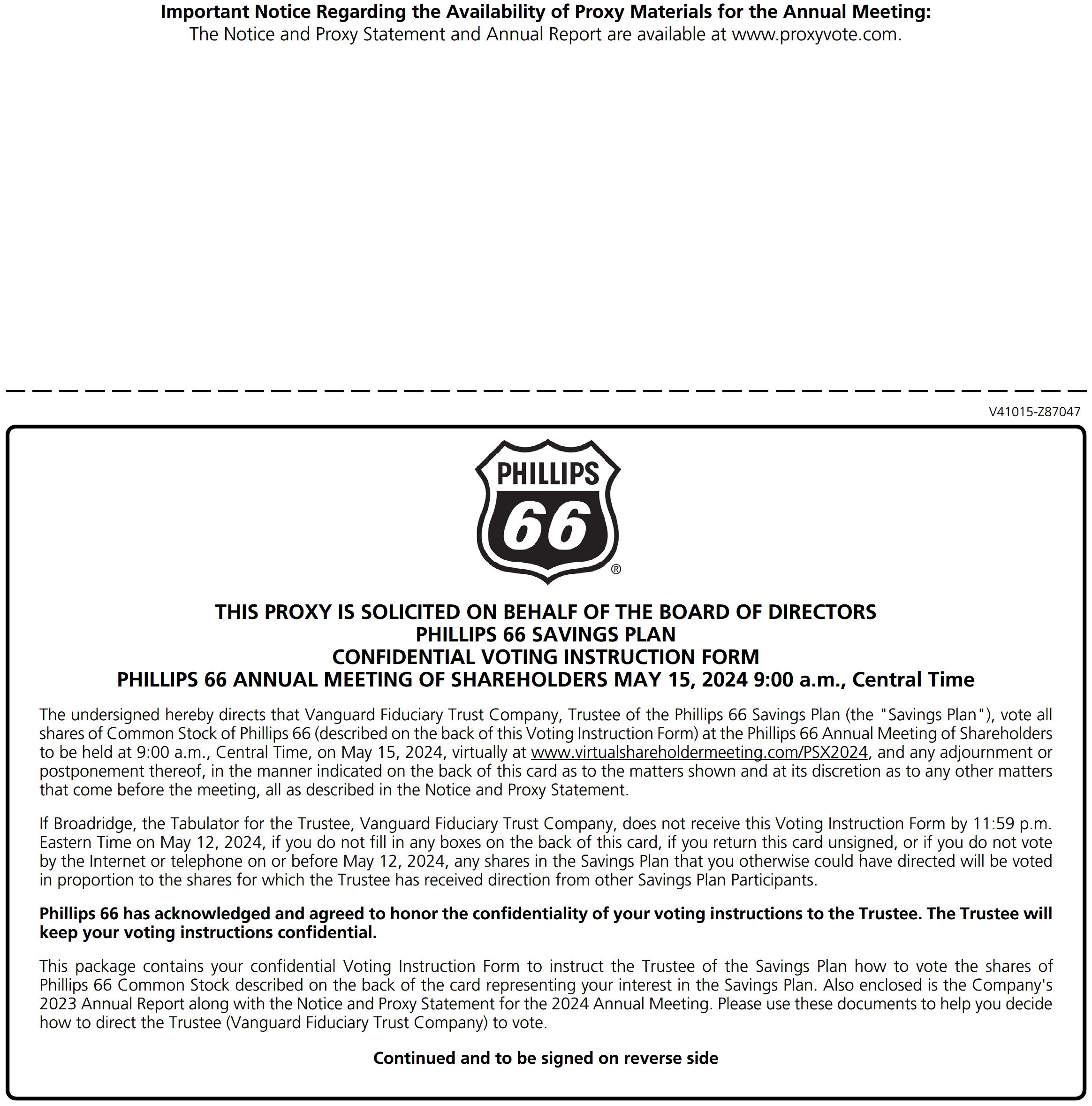| CHECK THE APPROPRIATE BOX: | ||||||
| ☐ | Preliminary Proxy Statement | |||||
| ☐ | Confidential, for Use of the Commission Only (as permitted by Rule 14a-6(e)(2)) | |||||
| ☑ | Definitive Proxy Statement | |||||
| ☐ | Definitive Additional Materials | |||||
| ☐ | Soliciting Material under §240.14a-12 | |||||

| ☑ | Filed by the Registrant | ☐ | Filed by a party other than the Registrant | |||||||||
| CHECK THE APPROPRIATE BOX: | ||||||
| ☐ | Preliminary Proxy Statement | |||||
| ☐ | Confidential, for Use of the Commission Only (as permitted by Rule 14a-6(e)(2)) | |||||
| ☑ | Definitive Proxy Statement | |||||
| ☐ | Definitive Additional Materials | |||||
| ☐ | Soliciting Material under §240.14a-12 | |||||


| PAYMENT OF FILING FEE (CHECK ALL BOXES THAT APPLY): | ||||||
| ☑ | No fee required | |||||
| ☐ | Fee paid previously with preliminary materials | |||||
| ☐ | Fee computed on table in exhibit required by Item 25(b) per Exchange Act Rules 14a-6(i)(1) and 0-11 | |||||

WHO WE ARE
Phillips 66 is a diversified energy manufacturing and logistics company. With a unique portfolio of assets and investments in the midstream, chemicals, refining, and marketing and specialties businesses, we process, transport, store and market fuels and products globally. At Phillips 66, we provide energy that improves lives and contributes to meeting the world’s growing energy needs. We also invest in, and research for, solutions supporting a lower-carbon future. Our focus areas include solid oxide fuel cells, photovoltaic polymers, next generation battery materials and renewable fuels.
 | ||
 | Chemicals | ||||
| 28 | global manufacturing facilities | 2 | research and development centers in the U.S. | ||
| Consists of our 50% joint venture interest in Chevron Phillips Chemical Company LLC (“CPChem”), which manufactures and markets petrochemicals and plastics worldwide. CPChem has cost-advantaged assets concentrated in North America and the Middle East. | |||||
 | ||
| ||
 | Marketing and Specialties | |||
| 7,110 | branded U.S. outlets | 1,700 | branded international outlets | |
| Markets refined petroleum products and renewable fuels, mainly in the United States and Europe. The segment also includes the manufacturing and marketing of specialty products such as base oils and lubricants. | ||||
As of Dec. 31, 2021
Notice of 2022 Annual Meetingof Shareholders
Date and TimeWednesday,May 11, 2022
9:00 a.m.Central Time
Placevirtualshareholdermeeting.com/PSX2022
Who Can VoteShareholders of record at the close of business on March 15, 2022, may vote at the meeting or any postponements or adjournments of the meeting.
How to cast your vote:
Onlinewww.proxyvote.com
By phone(800) 690-6903
Proxy cardComplete, sign and return your proxy card
At the meetingYou also may vote online during the annual meeting by following the instructions provided on the meeting website during the annual meeting.
To vote at the meeting, visit www.virtualshareholdermeeting. com/PSX2022
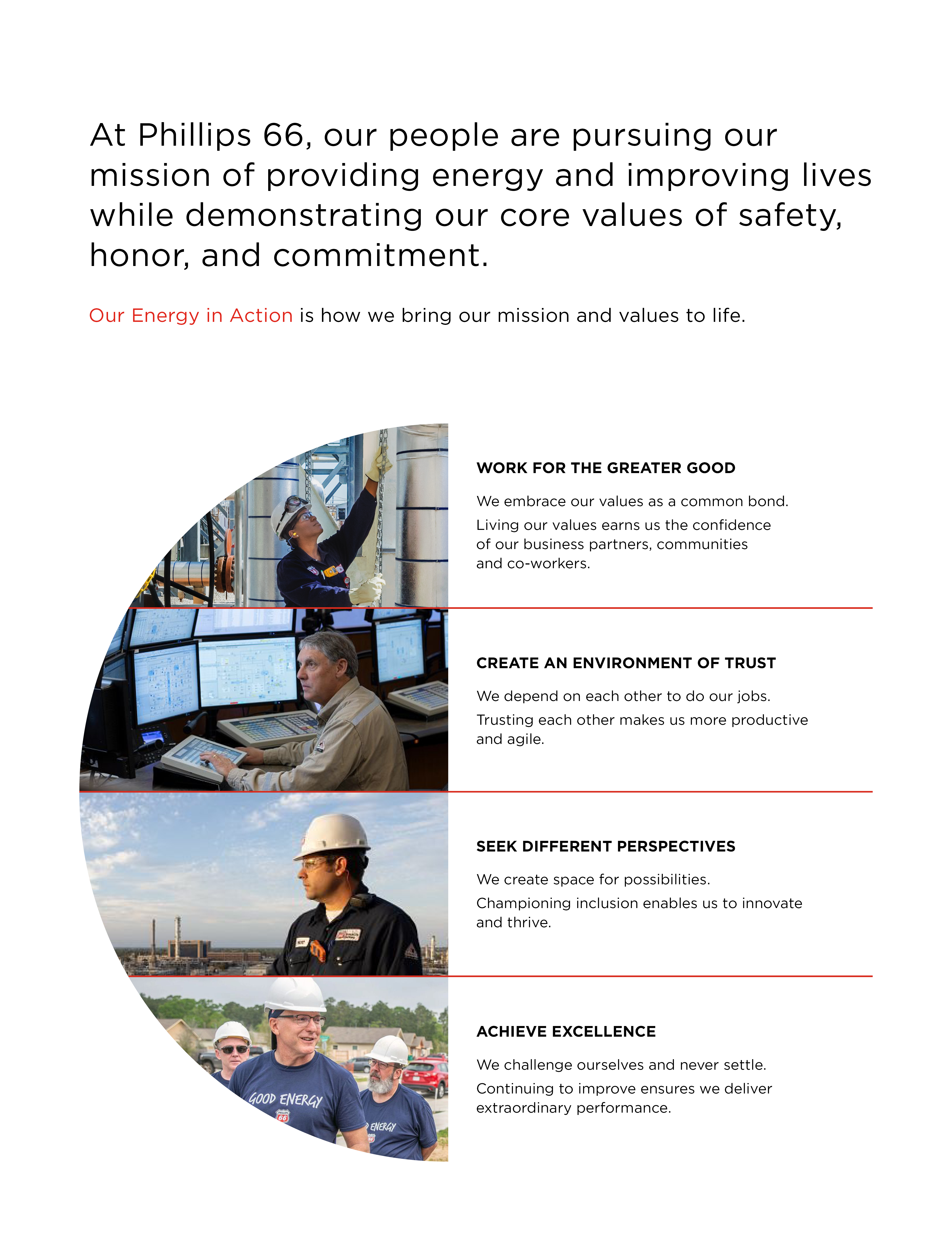
Date and time: Wednesday, May 15, 2024 9:00 a.m. Central Time Place: by live audio webcast at virtualshareholdermeeting.com/PSX2024 Who can vote: Shareholders of record at the close of business on March 20, 2024 may vote at the meeting and any adjournments or postponements of the Annual Meeting. How to vote: Online before the meeting www.proxyvote.com Online at the meeting See page 102 for instructions regarding how to vote online during the meeting at virtualshareholdermeeting.com/PSX2024. If you hold your shares in an employee benefit plan, you must vote your shares prior to the Annual Meeting. By phone Dial toll-free to (800) 690-6903 By mail Complete, sign and return your proxy card or voting instruction form in the provided postage-paid envelope. Important Notice Regarding the Availability of Proxy Materials for the Meeting: The Notice and accompanying Proxy Statement, Annual Report on Form 10-K for the year ended December 31, 2023, and form of proxy card are available at www.proxyvote.com. We are making these materials available beginning on or about April 3, 2024, to shareholders as of the record date. | Matters to be voted on: | ||||||||||||||||
| At the meeting, shareholders will be asked to vote on the following proposals: | |||||||||||||||||
| PROPOSALS | DETAILS | ||||||||||||||||
| 1 | Election of the four | Page | |||||||||||||||
| 2 | Page | ||||||||||||||||
| 3 | Ratification of the appointment of our independent registered public accounting firm, Ernst & Young LLP | Page | |||||||||||||||
| 4 | Page | ||||||||||||||||
Shareholders will also vote on any other business that is properly raised at the meeting.
The 2022 Annual Meeting will be held exclusively online at www.virtualshareholdermeeting.com/PSX2022. To join as a shareholder, you must enter the 16-digit control number on your proxy card, voting instruction form, or Notice of Internet Availability you previously received. During the meeting shareholders mayask questions, examine our shareholder list and vote their shares (other than shares held through employee benefit plans, which must be voted prior to the meeting). Other interested parties may join the meeting as a guest, in which case no control number is required. For more information, please see the section entitled ADDITIONAL INFORMATION in this Proxy Statement. We are making the Proxy Statement and the form of proxy first available beginning on March 31, 2022.
For the Board of Directors,

Vanessa Allen Sutherland
Corporate SecretaryMarch 31, 2022
If you are a beneficial owner and received a voting instruction form, please follow the instructions provided by your bank or broker to vote your shares.
IMPORTANT NOTICE REGARDING THE AVAILABILITY OF PROXY MATERIALS FOR THE SHAREHOLDER MEETING TO BE HELD ON MAY 11, 2022
The Notice of 2022 Annual Meeting of Shareholders, Proxy Statement and Annual Report on Form 10-K for the year ended December 31, 2021 are available at www.proxyvote.com.
We encourage you to carefully review the proxy materials and vote your shares promptly, even if you plan to virtually attend the annual meeting. For the Board of Directors, | ||||||||||||||
 |  Vanessa Allen Sutherland Executive Vice President, Government Affairs, General Counsel and Corporate Secretary April 3, 2024 | |||||||||||||
| Notice of 2024 Annual Meeting of Shareholders | 1 | ||||
| Letters from Leadership | |||
| From our Executive Chairman and President and Chief Executive Officer | ||||||||||||||
Dear Fellow Shareholders, With a relentless focus on operational excellence, we achieved strong operating, safety and financial results in 2023. Through our diversified, integrated portfolio, we generated $7.2 billion of net income and returned $5.9 billion to our shareholders through dividends and share repurchases. Consistent with our core values, we kept safety top of mind and finished the year with our lowest-ever combined employee and contractor total recordable incident rate. We began the year with a drive to make significant progress toward delivering on our multi-year strategic priority targets, and by October, we raised the bar and increased many of the targets we initially set in late 2022. We are pleased to report on our progress and our expectations for the future. •Deliver shareholder returns. In 2023, we honored our commitment to deliver value to our shareholders through a secure, competitive and growing dividend and share repurchases. Supported by our plan to return at least 50% of cash flows from operations to our shareholders, we raised our original shareholder distributions target, and now expect to return between $13 billion to $15 billion to our shareholders through dividends and share repurchases in the period from July 2022 through year-end 2024. •Enhance refining performance. The execution of our plan to enhance refining performance resulted in crude utilization rates above the industry average in each quarter of 2023. In addition, we completed high-return, low-capital projects to improve market capture. We remain focused on improving performance, increasing market capture and reducing costs to enhance earnings per barrel. •Maximize value from wellhead to market.In Midstream, we bolstered our NGL wellhead-to-market strategy with the acquisition of the public common units of DCP Midstream, LP (DCP). The team has done a remarkable job integrating DCP, and captured run-rate synergies of $250 million as of year-end 2023. We expect to capture an additional $150 million or more in synergies by 2025. •Execute our business transformation. Through our business transformation, we delivered $1.2 billion in run-rate cost and capital reductions in 2023. We are now targeting $1.4 billion in run-rate savings by the end of 2024 as our employees continue to challenge the status quo and leverage technology to improve our ways of working. •Maintain financial resilience. Our commitment to financial resilience includes a targeted net debt-to-capital ratio range of 25% to 30%. We prioritize our investment-grade credit ratings to enhance our long-term competitiveness and protect the integrity of our balance sheet. In alignment with our strategic priorities, we plan to monetize assets that no longer fit our long-term strategy and expect to generate over $3 billion in proceeds from these asset sales. •Pursue strategic growth.We selectively pursued growth opportunities that will provide attractive returns. Notably, through our Rodeo Renewed project, we advanced the conversion of our San Francisco refinery into one of the world’s largest renewable fuels facilities. We are confident that we are focused on the right priorities to maximize value for our shareholders, and we look forward to updating you on our progress throughout the year. We thank you for your continued support and investment in Phillips 66. In safety, honor and commitment, | ||||||||||||||
 |  |  |  | |||||||||||
Greg C. Garland Executive Chairman April 3, 2024 | Mark E. Lashier President and April 3, 2024 | |||||||||||||
| 2 | Phillips 66 2024 Proxy Statement | ||||
| Letters from Leadership | 3 | ||||
| Table of Contents | ||
This summary highlights information contained elsewhere in this Proxy Statement, but does not contain all of the information that you should consider. You should read the entire Proxy Statement before you vote. Director Other Greg C. Garland, 64 Chairman and CEO of Phillips 66 Gary K. Adams, 71 Former Chief Advisor - Chemicals for IHS Markit John E. Lowe, 63 Senior Executive Advisor to Tudor, Pickering, Holt & Co. Denise L. Ramos, 65 Former Chief Executive Officer, President and Director of ITT Inc. Charles M. Holley, 65 Former Executive Vice President and Chief Financial Officer of Walmart Inc. Denise R. Singleton, 59 Executive Vice President, General Counsel and Secretary of WestRock Company Glenn F. Tilton, 73 Former Chairman and Chief Executive Officer of UAL Corporation Marna C. Whittington, 74 Former Chief Executive Officer of Allianz Global Investors Capital Julie L. Bushman, 61 Former Executive Vice President of International Operations of 3M Lisa A. Davis, 58 Former member of Managing Board of Siemens AG and CEO for Siemens Gas and Power Douglas T. Terreson, 60 Former Head of Energy Research at Evercore ISI Advisory Approval of Executive compensation of the Company’s named executive officers. 30 future performance. The 14 members. Upon Greg Garland's retirement from the Board immediately prior to the Annual Meeting, the size of the Board will be automatically reduced to 13 directors. In accordance with our Certificate of Incorporation, as currently in effect, our Board is divided into three classes of directors. The Board has nominated 2027 or until such director’s successor has been duly elected or appointed and qualified, or until their earlier resignation or removal. All of the nominees are currently serving as directors. Lowe Terreson approximately 66. Commitment to Board Diversity skills and experience with the evolution of the Company's strategic priorities in its approach to refreshment, in order to ensure effective oversight of management's execution of its goals. The The Board has five standing 38 table below: Disclosures. Communications are distributed to the Board or to any individual Each year, the Board holds a multi-day strategy session with the Company's senior leaders to review the Company's short-term and long-term strategic plans and priorities, as well as challenges and opportunities that may develop under various future scenarios. LEVEL against our members also have opportunities to meet informally with members of management and high performers to learn more about our business. material interest. Fees Earned or Paid in Cash(1) Stock Awards(2) All Other Compensation(3) Total Advisory Approval of Executive Compensation OUR APPROACH TO EXECUTIVE COMPENSATION "The NEOs Options 2021-2023 PSP Our The 2021-2023 PSP In Restricted Stock Units The number of RSUs is determined based on the fair market value of Company stock on the date of grant. RSUs awarded to our NEOs in February 2021 cliff vest after three years. RSUs do not carry voting rights but do earn dividend equivalents during the vesting period. RSUs are typically granted in February each year. The Compensation Committee assesses the individual performance of each NEO and based on that assessment, may adjust an award by up to +/–30% of the target amount at grant. Stock Options These awards are inherently performance-based, as the stock price must increase before the executive can realize any value. We believe stock options drive behaviors and actions that enhance long-term shareholder value. Stock options are typically granted in February each year. The number of options awarded is calculated based on the Black-Scholes-Merton model. The exercise price of stock options is set at 100% of the fair market value of our common stock on the date of grant. Stock options granted to our NEOs in February 2021 vest ratably over a three-year period and have a ten-year term. Stock options do not have voting rights and are not entitled to receive dividends. Performance Share Program (PSP) Each PSP has a three-year performance period, and therefore three PSPs are in progress at any time. Programs in effect during 2021 were PSP 2019-2021, PSP 2020-2022, and PSP 2021-2023. The number of shares is determined by dividing the target value by the average of the stock’s fair market value for the 20 trading days prior to the start of the performance period, less anticipated dividends during the performance period. The Compensation Committee assesses the individual performance of each NEO and based on that assessment, may adjust an award by up to +/–50% of the target amount at grant. Performance adjustments to the number of target shares are applied at the beginning of the performance period, rather than the end, so that performance-adjusted compensation is subject to Company performance and market volatility throughout the performance period, aligning executive compensation with shareholder interests. ● Target shares may be adjusted during the performance period for promotions that occur during the performance period. ● NEOs hired after the start of the performance period may receive prorated target shares in ongoing PSP cycles, at the discretion of the Compensation Committee, so that their interests are immediately aligned with the Company’s long-term goals and shareholder interests. ● Awards under the PSP programs are denominated in shares but are paid in cash using the average stock fair market value for the last 20 trading days of the performance period. Relative TSR The Compensation Committee recognizes that relative TSR is the most common performance metric for comparisons to peers. Our performance is assessed as compared to our Performance Peer Group and the S&P 100 Index. Starting with the 2019-2021 program, we added a cap on the portion of the PSP earned based on relative TSR if absolute TSR is negative. We made this change in response to shareholder input and in order to better align pay with corporate performance and shareholder experience. Threshold Above 10th percentile of Performance Peers Target Median of Performance Peers Maximum Above 90th percentile of Performance Peers Relative ROCE Relative ROCE complements the Absolute ROCE metric by measuring the Company’s performance relative to ROCE of Performance Peers. Threshold Above 10th percentile of Performance Peers Target Median of Performance Peers Maximum Above 90th percentile of Performance Peers Absolute ROCE The Compensation Committee considers ROCE an important measure of Company growth, shareholder value creation and overall performance. Threshold 3.2% Delivers sustaining capital and shareholder dividend commitments over 3-year period Target 8.6% Delivers WACC +1.5% over 3-year period Maximum 10.1% Delivers WACC +3.0% over 3-year period Aligned with other peers’ practices, we have historically adjusted ROCE for “special items” that are not representative of our underlying operating performance. The Compensation Committee carefully evaluates all such adjustments to understand what impacts the adjustment would have on compensation outcomes and how the item factored into the Company’s operating and financial outcomes. High-Performing Organization Maintaining and enhancing a high-performing organization is critical to our success and is part of our human capital management strategy. Our employees promote our culture and are integral to achieving our strategic goals and maximizing long-term shareholder value. We measure our High-Performing Organization performance relative to the following: ● Culture: foster behaviors that promote our unique culture ● Capability: build depth and breadth in our skills ● Performance: deliver exceptional, sustainable results Environment For Environment, we set Agency Reportable Environmental Events targets based on historical performance with the goal of continuous improvement. It is important to note that targets will fluctuate year over year due to Company growth and regulatory changes. For 2021, we enhanced Environment to include two new metrics: Low-Carbon Priorities and Greenhouse Gas Priorities. These priorities reflected efforts to advance lower-carbon investments, optimization, and innovation as well as efforts to reduce manufacturing emissions intensity and setting GHG emissions intensity reduction targets. Safety & Operating Excellence For personal and process safety performance, we measure ourselves against the top performing companies in our industry. Generally, these companies fall within the top two quartiles of all companies reported. We then establish our threshold, target, and maximum goals based on the performance (25th, 50th, and 75th percentiles) of this group of companies. For asset availability, for which comparative data is not available, we establish our threshold, target, and maximum goals based on our operating plan and historical performance with the goal of continuous improvement, incorporating the segments of our business and weighting them by adjusted EBITDA. Adjusted Controllable Costs For Adjusted Controllable Costs, we measure our effectiveness in managing costs and set our threshold, target, and maximum based on our annual budget. Threshold Adjusted Controllable Costs should not exceed budget by more than 3% Target Adjusted Controllable Costs should achieve budget Maximum Adjusted Controllable Costs should be 3% under budget For 2021, the adjusted controllable cost target was above actual performance in 2020 as the budget in 2021 assumed partial return to normal operations after a strong response of cutting costs in 2020 due to challenging market conditions. The increase in the 2021 target vs. actual performance in 2020 is mainly the result of increased maintenance expenses and growth. Adjusted EBITDA Adjusted EBITDA measures our ability to create shareholder value. Our threshold is the EBITDA required to cover sustaining capital and shareholder dividend commitments, and target and maximum are set at EBITDA levels that equate to ROCE levels 1.5 and 3.0 percentage points above our WACC. Threshold Adjusted EBITDA required to cover our sustaining capital and shareholder dividend commitments Target Adjusted EBITDA equivalent to ROCE of WACC + 1.5 percentage points. Maximum Adjusted EBITDA equivalent to ROCE of WACC + 3.0 percentage points The 2021 adjusted EBITDA target decreased from $6.3 billion to $5.4 billion as a result of the Company’s WACC decreasing from 7.3% to 6.2% at the end of 2020 mainly as a result of lower risk-free rates and changes in our capital structure. Although the target decreased, the level of performance rigor required of management remained stable year over year. 161% of target. NEOs: A&FC. securities. at risk award acceleration including a new SEC-compliant clawback policy under our equity plan Proxy Statement. 2023. 2021. The following table lists outstanding Phillips 66 equity grants for each NEO as of December 31, The following table summarizes the value received from stock option exercises and stock grants vested during The following table lists the pension program participation and actuarial present value of each NEO’s defined benefit pension as of December 31, Our programs are designed to pay out amounts earned during employment unless the employee voluntarily resigns prior to becoming retirement-eligible or is terminated for cause. Although normal retirement age under our benefit plans is 65, early retirement provisions allow receipt of benefits at earlier ages if vesting requirements are met. For our incentive compensation programs (VCIP, RSU, Stock Options, and PSP), early retirement is generally defined as termination at or after the age of 55 with five years of service. term if the awards were granted at least six months prior. level, subject to the executive's execution of a release of claims. year, subject to the executive's execution of a release of claims. CEO, Mr. Lashier. $27,437. to Performance PROPOSAL 3 The representatives will have an opportunity to make a statement if they desire and will be available to respond to appropriate questions from shareholders. The 2023. Discussions with Independent Registered Public Accounting Firm. 2023. herein. (4) are at odds with Chevron Phillips TO SHAREHOLDER PROPOSAL REQUESTING REPORT ANALYZING THE IMPACT OF THE "SYSTEM CHANGE SCENARIO" ON THE CHEMICALS BUSINESS engagement efforts and prior annual meeting results indicate are supported by most of our shareholders, renders support for this proposal unnecessary. The following table sets forth information regarding persons who we know to be the beneficial owners of more than five percent of our issued and outstanding common stock as of March 15, This table lists the beneficial ownership of our common stock as of Section 16(a) of the Exchange Act requires our directors and executive officers and persons who own more than 10% of a registered class of our equity securities, to file reports of ownership on Form 3 and changes in ownership on Form 4 or 5 with the SEC and the NYSE. Such executive officers, directors and stockholders also are required by SEC rules to furnish us with copies of all Section 16(a) forms that they file. Why am I receiving these proxy materials? April 3, 2024. Who is entitled to vote at the meeting? How do I vote? If the Notice of Internet Availability or voting instruction form that you received does not indicate that you may vote your shares through the www.proxyvote.com website, you should contact your bank, broker or other nominee (preferably at least 5 days before the meeting) and obtain a “legal proxy” (which will contain a 16-digit control number that will allow you to attend, participate in or vote at the meeting). If you do not have a 16-digit control number, you may still attend the meeting as a guest in listen-only mode. To attend as a guest, please access 14, 2024. a majority of the votes cast in person or by proxy at the meeting. Brokers holding shares must vote according to specific instructions they receive from the beneficial owners of those shares. If Broker non-votes will be treated as shares present for quorum purposes, but they are not considered as votes cast or entitled to 4. proposal. The virtual meeting platform is fully supported across browsers and devices running the most updated version of applicable software and plug-ins. Please ensure that you have a strong internet connection wherever you intend to participate in the meeting. Please also give yourself sufficient time to log-in and ensure you can hear the streaming audio before the meeting starts. We have adopted a procedure approved by the SEC called “householding.” Under this procedure, shareholders of record who have the same address and last name and do not participate in electronic delivery will receive only one copy of the Notice of Internet Availability or proxy materials, unless contrary instructions have been received from one or more of these shareholders. This procedure will reduce our printing costs and postage fees. FOR THE 2025 ANNUAL MEETING 14, 2025. 14, 2025.From Our Chairman of the BoardCEODear Fellow Shareholders,Phillips 66 continued recovering from the impacts of the pandemic in 2021 and made significant progress advancing lower-carbon initiatives. We continued to honor our vision and values by keeping our people safe, providing energy and improving lives. We remained focused on our strategic priorities: growth, returns and distributions supported by a strong foundation of operating excellence and a high-performing organization. We take great pride in maintaining our commitments:·We are committed to disciplined capital allocation with an emphasis on returns. In 2021, we raised the quarterly dividend, continuing our trend to deliver a secure, competitive and growing dividend. Our strong cash flow generation allowed us to invest $1.9 billion back into the business, return $1.6 billion to shareholders and pay down $1.5 billion of debt. We continued to prioritize a strong balance sheet and our investment grade credit ratings.·We are committed to environmental responsibility. In 2021, we developed meaningful and achievable targets for reducing greenhouse gas emissions intensity that are tied to viable plans and specific projects consistent with our disciplined approach to capital allocation. We also expanded our commitment to environmental responsibility, setting a goal for all our refining sites to achieve top-third energy efficiency by 2030.·We are committed to being part of the solution for a lower-carbon future. Throughout the nearly 150- year history of Phillips 66, energy has been a business of transition and the people of Phillips 66 have been problem solvers. That spirit continues to this day and is reflected in opportunities we are pursuing toward a lower-carbon future. At our San Francisco Refinery, we began renewable diesel production and advanced the Rodeo Renewed project. We invested in NOVONIX to support the development of the U.S. battery supply chain and Shell Rock Soy Processing to secure feedstock for our growing portfolio of renewable fuels projects. We are collaborating with multiple parties to further develop sustainable aviation fuel, batteries, carbon capture and hydrogen opportunities.·We are committed to listening to our stakeholders. Last year, our shareholders asked us to set and publish GHG emissions reduction targets and report on climate lobbying. We responded by setting impactful, attainable and measurable targets to reduce GHG emissions intensity from our operations and energy products by 2030, and earlier this year we announced targets for 2050. We published our Lobbying Activities Report, which details our governance, compliance processes, policy development and transparent reporting on our climate-related lobbying activities. We also responded by incorporating two new and meaningful metrics to our annual bonus program: Low Carbon Priorities and Greenhouse Gas Priorities, which are explained in more detail in the Proxy Statement.·We are committed to inclusion and diversity. I encourage you to read our recently published 2021 Human Capital Management Report in which we provide data and insights on resilience through another year of the pandemic while reinforcing our commitment to inclusion and diversity and aligning benefits that meet the needs of today’s workforce. We also continued our Board refreshment by adding two new directors in 2021. These new directors add to our Board’s industry expertise, further increase our Board’s diversity, and broaden the depth and breadth of the skills and experiences our directors bring to the Board.On a final note, we believe as economic conditions show signs of improving there will be further opportunities for value creation across our traditional business lines and emerging energy opportunities. To ensure everyone’s health and well-being, the 2022 Annual Meeting will be held exclusively online. You can find information about how to attend in the attached Proxy Statement.Thank you for your continued support and investment in Phillips 66.In safety, honor and commitment,

Greg C. GarlandChairman and CEOMarch 31, 20223From Our Lead DirectorDear Fellow Shareholders,The independent directors and I join Greg in inviting you to attend our Company’s 2022 annual meeting of shareholders. The Board values input from our shareholders as the Company continues to execute our long-term strategy. As the Board’s Lead Independent Director, I meet regularly with investors. During most of those meetings, I am joined by the chair of our Human Resources and Compensation Committee, Dr. Marna Whittington. The input and feedback we receive from our investors are shared with the entire Board, which considers these viewpoints in our discussions and decisions.We appreciate the diversity of concerns“Adjusted VCIP Controllable Costs,” that are of interest to you, our shareholders. We heard interesting perspectives on the compensation of our executives and the metrics usednot determined in our compensation programs, GHG emissions reduction and other environmental issues, and human capital matters, among others. We think you will see in our various public disclosures that we take these perspectives seriously and attempt to address them through changes to our compensation programs and providing additional disclosures.I encourage you to read our 2022 Proxy Statement, our 2021 Annual Report on Form 10-K, and the other proxy materials. I also encourage you to read our 2021 Sustainability Report and our 2021 Human Capital Management Report, both of which are available on the Company website.Our Board remains committed to building long-term value in the Company and returning excess capital to our shareholders. We are also committed to guiding our Company to help address climate change through setting impactful, attainable and measurable emissions reduction targets, and investing in technologies that deliver lower-carbon solutions. On behalf of the directors, I join Greg and the entire executive management team in thanking you for choosing to invest in Phillips 66.It is a great pleasure to serve as your Lead Independent Director, and I look forward to hearing from many of you in the coming year. 
Sincerely,
Glenn TiltonLead DirectorMarch 31, 20224 Phillips 66 2022 Proxy Statement2021 OPERATIONAL AND FINANCIAL HIGHLIGHTS In 2021, Phillips 66’s management and employees exemplified the Company’s commitment to Operating Excellence, enabling the Company to recover following the uncertainties and challenging market conditions caused by COVID-19. Phillips 66 maintained its commitment to long-term capital discipline and was able to invest in the business, return cash to shareholders, and pay down debt as the Company experienced increased recovery in the back half of the year. A significant portion of 2022 growth capital invested in our business supports lower carbon opportunities, and we will continue to prioritize our investments in lower-carbon opportunities as we strive to meet the world’s changing energy needs.
Operating ExcellenceCommitted to safety, environmental stewardship, sustainability, reliability and cost efficiency while protecting shareholder value· Maintained strong industry-leading personal safety performance· Achieved best-ever Tier 1 and 2 process safety event rate· Established Greenhouse Gas emissions reduction targets
GrowthEnhancing our portfolio by growing our integrated Midstream and Chemicals businesses, as well as executing our returns-focused low-carbon strategy in Emerging Energy· Delivered record Midstream and CPChem pre-tax income· Completed C2G Ethane Pipeline project and advanced construction of Sweeny Frac4· Began production of renewable diesel at the San Francisco Refinery· Invested in renewable feedstocks and the battery value chain
ReturnsImproving returns by investing to optimize and enhance existing assets· Delivered record Marketing & Specialties pre-tax income· Acquired approximately 200 retail sites via US JV; upgraded 1,000+ sites globally· Advanced renewable fuels placement strategy
DistributionsCommitted to maintaining financial strength and disciplined capital allocation to reward shareholders through continued dividend growth and share repurchases· Returned $1.6 B in dividends to shareholders· Increased dividend· Paid down $1.5 B of debt
High-Performing OrganizationBuilding capability, pursuing excellence, and doing the right thing· Realized improvements in employee engagement, manager effectiveness and performance enablement· Advanced leader-led Inclusion & Diversity efforts· Recognized externally as a great place to work· Continued to support local communities where we operate· Continued to leverage digital advancements enabling the work force of the future5EARNINGS PERFORMANCE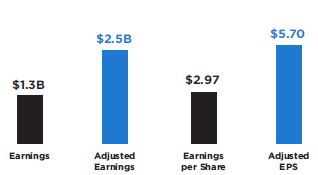
Record results in Midstream, Chemicals, and Marketing and SpecialitiesSTRONG CASH FLOW GENERATION 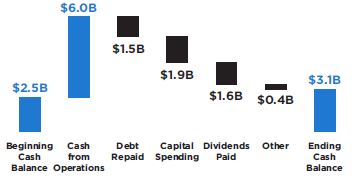
SUSTAINED COMMITMENT TO CAPITAL DISCIPLINE$1.5BRepaid Debt· In 2021, we paid down approximately $1.5 billion of debt.· Total debt at year-end was $14.4 billion, with a net debt-to-capital ratio of 34%.· As cash flow improves further, we will prioritize debt repayment and shareholder returns. We are on a path toward pre-COVID debt levels.$1.9BCapital Spending 2021· Within our capital allocation framework, we target a long-term 60/40 ratio, reinvesting 60% back into our business and returning 40% to shareholders. It can vary from year to year, and we will continue to adjust depending on the opportunities available.· Disciplined capital allocation and achieving strong returns on our investments are fundamental to our strategy.$1.9BCapital Budget 2022· Our 2022 capital program of $1.9 billion reflects our commitment to capital discipline.· Approximately 45% of our 2022 growth capital will support lower-carbon opportunities, including Rodeo Renewed, which is expected to initially have over 50,000 barrels per day of renewable fuel production capacity.· The 2022 capital budget includes $426 million for Midstream growth and $490 million to support Refining and Marketing growth projects, primarily related to the Rodeo Renewed project. Our proportionate share of capital spending by our major joint ventures is expected to be $1.1 billion, most of which is by CPChem, DCP Midstream, LLC (DCP Midstream), and WRB Refining LP and is expected to be self-funded.NON-GAAP FINANCIAL MEASURESPlease note that the discussion of our results in this proxy statement contains references to “adjusted earnings,” “adjusted EPS,” “adjusted EBITDA - as used in VCIP,” “Absolute ROCE,” “relative ROCE,” “adjusted ROCE - as used in PSP,” “net debt-to-capital ratio,” and “adjusted controllable costs as used in VCIP.” These are not measures of financial performance under GAAPaccordance with generally accepted accounting principles (GAAP) and may not be defined and calculated by other companies using the same or similar terminology. Please see Appendix BA, reconciliation of these non-GAAP financial measures used herein, including reconciliations to theirthe most directly comparable GAAP financial measure.”measure when practicable.64 2022 2024 Proxy StatementCORPORATE RESPONSIBILITY AND SUSTAINABILITYOur vision is to provide energy and improve lives, which we reinforce through our core Company values of safety, honor and commitment. Operational, financial, social and environmental sustainability is at the heart of how we deliver on our vision, all of which is anchored on a strong foundation of corporate governance. These tenets define our approach to progressing a sustainable future. Through strong operating excellence, we are committed to safety, reliability and environmental stewardship while delivering shareholder value.We also are committed to achieving a high-performing organization that is focused on culture, inclusion and diversity, as well as strengthening community through volunteerism, financial support, and engagement, including community awareness and education. Examples of our commitment in action during 2021 include: Community Involvement Resources and Engagement· Contributing $10.5 million to education and literacy programs supporting 16 local schools and school districts, 30 colleges and universities and 212 scholarship recipients· Donating $4.1 million, including $1.5 million in disaster relief, for community safety and preparedness supporting 38 local emergency responder departments and 11 food banks· Contributing $3.3 million supporting environmental and sustainability programs at 15 community parks and 37 conservation projects· Donating $3 million toward civic enrichment through 9 United Way campaigns and 14 inclusion and diversity programs· Volunteering 67,000 hours working in our communities through 1,800 employeesPolitical ActivitiesResources Corporate Governance Documents Lobbying ActivitiesSenior Financial OfficersCompany Reports https://www.phillips66.com/sustainability/esg-library under the heading "Reports" Company Policies, Guidelines & Position Statements https://www.phillips66.com/sustainability/esg-library under the heading "Policies and Positions" Publication Requests https://investor.phillips66.com/resources under the heading "Publication Request Form" Contacting the Board https://www.phillips66.com/contact under the heading "Board of Directors" Contacting the Corporate Secretary https://www.phillips66.com/contact under the heading "Corporate Secretary" Contacting Investor Relations https://investor.phillips66.com/corporate-governance under the heading "Investor Contacts" Defined Terms A&FC · We are committed to transparent, ethicalAudit and responsible engagement complying with all lawsFinance CommitteeAFPM American Fuel & Petrochemical Manufacturers API American Petroleum Institute CEO Chief Executive Officer DCP DCP Midstream, LP and regulations. We actively participateits subsidiariesE&Y Ernst & Young LLP ESG Environmental, Social and Governance GAAP Generally Accepted Accounting Principles in the political process with the goal of educating policymakers and stakeholders in support of laws and regulations that meet societal and business needs while promoting federal, state and local economies.United StatesGHG Greenhouse Gas N&GC Nominating and Governance Committee HRCC Human Resources and Compensation Committee LTI Long-Term Incentive NEO Named Executive Officer NYSE New York Stock Exchange PPSC Public Policy and Sustainability and Transition to Lower-Carbon FutureCommitteePSP · We continued advancing our Emerging Energy organization to focus on lower-carbon business opportunities.· We are conducting research on energiesPerformance Share ProgramRSU Restricted Stock Unit TSR Total Shareholder Return VCIP Variable Cash Incentive Program WACC Weighted-Average Cost of the future, including renewable fuels, photovoltaic polymers, current and next generation batteries, and solid oxide fuel cells.· We have a portfolio of renewable fuel projects in development that advance low carbon fuel standards.· We are leveraging our existing infrastructure, digital investments, supply network and capabilities to participate in lower-carbon opportunities. Resources and Defined Terms Performance Highlights 75Our Approach to SustainabilitySustainability is integral to our corporate strategy and designed to ensure a resilient portfolio. Our strategy is clear and consistent: operating excellence, growth, returns, distributions delivered through a high-performing organization. This strategy ensures a sustainable, viable business and creates long-term shareholder value.SUSTAINABILITY SUPPORTS LONG-TERM RESILIENCEProxy Summary 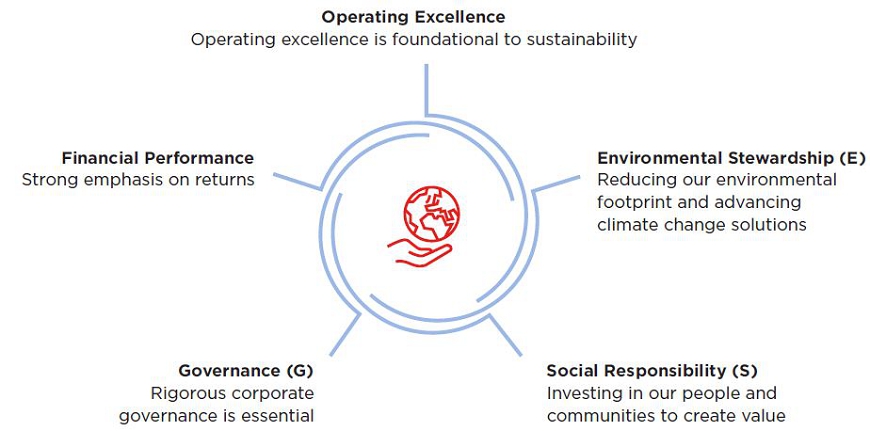
Stakeholder EngagementStakeholder relationships have always been a priority for us. They enable us to fulfill our purpose and execute our strategy. Our stakeholders include employees, shareholders, investors, customers, communities where we operate, indigenous people, legislators and energy consumers.We approach our stakeholder engagement from a position of mutual respect, respecting human rights, demonstrating our values through our actions and being a good neighbor. We conduct our operations in compliance with all applicable laws, in accordance with our Company values and policies, and consistent with the spirit of the United Nations’ Universal Declaration of Human Rights. Our processes provide a measured and responsive approach to stakeholder engagement.Spotlight on Climate Change/Energy TransitionPhillips 66 supports the ambitions of the Paris Agreement and is active in the energy transition while continuing to provide affordable, reliable, and abundant energy that drives human progress. In 2021, Phillips 66 announced its intention to reduce greenhouse gas (GHG) emissions intensity from our operations and energy products by 2030, setting impactful, attainable and measurable targets. The Company plans to reduce Scope 1 and Scope 2 emissions intensity from operations by 30% and Scope 3 emissions intensity of its energy products by 15%, below 2019 levels. Earlier this year, we announced a 2050 target to further reduce Scope 1 and Scope 2 emissions intensity by 50% below 2019 levels. Details on the projects planned and in development to achieve these targets can be found on the sustainability section of our website.In furtherance of the evolving energy economy, the Company formed an Emerging Energy organization that is focused on developing a lower-carbon sustainable business platform by leveraging our existing assets and capabilities and advancing investments in new energy technologies. Our Emerging Energy8 Phillips 66 2022 Proxy Statementfocus areas are renewable fuels, batteries, carbon capture and hydrogen. We are progressing our goal to become a leading producer of renewable fuels through our Rodeo Renewed project and alliances with Southwest Airlines and British Airways to supply sustainable aviation fuel. We are extending participation in the battery value chain through our investment in NOVONIX to advance the production and commercialization of next-generation anode materials for lithium-ion batteries. We have established a competitive position and scale in the high potential carbon capture market and are also pursuing opportunities in hydrogen fueling. These commercial ventures are supported by our Energy Research and Innovation group where research is focused on opportunities in renewable fuels, photovoltaic polymers, next generation batteries, and solid oxide fuel cells.Our Company’s commitment to sustainability is aligned with our compensation programs. The variable compensation incentive program (VCIP) is the annual bonus program that has 50% weighting on Operational Sustainability and 50% weighting on Financial Sustainability performance metrics. VCIP applies to all employees, from the CEO and NEOs throughout the workforce. In 2021, we increased the weighting of environmental factors in VCIP to 15 percent from 5 percent, and in doing so, added performance metrics for (1) advancing lower-carbon investments, optimization, and innovation and (2) reducing manufacturing emissions intensity and setting GHG emissions reduction targets.Our Board of Directors recognizes the importance of human capital management practices to the long-term success of the Company. They advise senior leadership on our key principles of human capital management and the executive leadership team is responsible for the deployment of our high-performing organization to deliver exceptional performance on a sustainable basis. Below are the key principles of our human capital management strategy. More information regarding how we operationalize our strategy can be found in our Human Capital Management Report on our website at www.phillips66.com/our-people.Our people are bonded by our vision of providing energy and improving lives and our core values of safety, honor and commitmentOur Company strategy depends on our high-performing organization, which is defined by our culture, capability and performanceOur commitment to safety and operating excellence makes us an industry leader in safety performanceOur inclusive environment attracts and retains exceptional and diverse talentOur investments in development and career growth start from the moment an employee joins Phillips 66 to when they retireOur incentives and benefits are competitive and appeal to our evolving workforceOur Energy In Action (OEIA) sets behavioral expectations that preserve what makes Phillips 66 great and challenge us to evolve in ways that make us betterOur employees, shareholders and communities are critical stakeholders with whom we proactively engageOur passion for innovation is a catalyst for growth and profitabilityFor more information on how our Board of Directors oversees Corporate Responsibility, Sustainability and Human Capital Management, see pp. 33-35 of this Proxy Statement.Performance Highlights 9
AGENDA ITEMS AND VOTING RECOMMENDATIONS PROPOSAL 1 Election of 4 Class III Directors
to Hold Office until the 2027 Annual Meeting
"“FOR” the four Class III director nominees.
nominees named in this Proxy Statement.PROPOSAL 1→ See page 17Our 11-member Board continued to be highly engaged in overseeing our strategy, strong governance practices, and human capital management, especially in light of the continuing COVID-19 pandemic. The Board continued its robust shareholder engagement dialogue and remained committed to being responsive to shareholder concerns. The addition of two new members in 2021 further added to the breadth of skills, perspectives, and diverse backgrounds represented on our Board. CORPORATE GOVERNANCE HIGHLIGHTS Majority voting for directorsShareholder right to proxy access (3% for 3 years, up to 20% of the Board)Demonstrated commitment to Board refreshmentRobust Lead Director dutiesDirector retirement age policy of 75PROPOSAL 2Clawback policy for incentive compensationMeaningful director and executive stock ownership guidelinesCommitment to diverse candidate poolsAnnual evaluation of the Board and committeesPolicy prohibiting pledging and hedging of Company stockBoard level oversight of corporate culture and human capital managementAnnual evaluation of CEO by independent directors10 Phillips 66 2022 Proxy StatementSHAREHOLDER OUTREACH AND RESPONSIVENESSSignificant Shareholder EngagementOngoing engagement with our shareholders is important to us. We communicate with our shareholders through a variety of means, including meetings, investor presentations, our website, and publications we issue. As part of our annual engagement program, we regularly reach out to shareholders for dialogue concerning their priorities. This year we significantly expanded the scope of our stockholder outreach regarding executive compensation and ESG topics.Following the outcome of our 2021 Annual Meeting, our Board sought to engage in meaningful discussions with our shareholders to understand their voting decisions, provide insight regarding Phillips 66’s practices, and preview potential responsive enhancements to the compensation programs. We conducted two rounds of engagement in fall 2021 to augment the conversations we held with shareholders leading up to the 2021 Annual Meeting. These conversations provide us with valuable feedback that directly informed Board deliberations.In September 2021, we spoke with investors representing 40% of shares outstanding with a focus on our compensation program design and the relative degree of alignment between Company performance and rewards. Many of these conversations were led by two of our independent directors. In November 2021, we had a second round of conversations with many of the same shareholders, including investors representing 40% of shares outstanding. This second round of conversations provided opportunity to discuss investor perspectives on climate and the Company’s approach to the energy transition, in addition to capturing any further perspectives regarding compensation matters. Additional detail regarding our outreach effort and the feedback we received can be found on page 30.Responsive to Shareholder FeedbackThis year, in direct response to the shareholder feedback we received through our significant engagement effort, the Compensation Committee implemented meaningful changes to our executive compensation program and related disclosures for 2022, as discussed on page 42.In connection with our 2021 Annual Meeting, our shareholders expressed their interest in the Company setting and publishing GHG emissions reduction targets. We responded in September by setting impactful, attainable and measurable targets to reduce GHG emissions intensity from our operations and energy products by 2030. Our targets are to reduce Scope 1 and Scope 2 emissions intensity from operations by 30% and Scope 3 emissions intensity of our energy products by 15%, below 2019 levels.Our shareholders also requested that we report on climate lobbying, and we responded by publishing our Lobbying Activities Report, which details our governance, compliance processes, policy development and transparent reporting on our climate-related lobbying activities. Additional detail about our ESG efforts can be found on page 30. Proxy Summary11Our certificate of incorporation requires a classified Board, meaning our Board is divided into three classes of directors, with each class elected for a three-year term.
Since Committee Memberships
Public
Boards Name and Primary Occupation Independent AFC HRCC NGC PPSC EC Current Nominees 
2012 
1 
2016 


1 
2012 




2 
2016 




2 Directors Whose Terms Expire in 2023 
2019 


2 
2021 


1 
2012 




2 
2012 




2 Directors Whose Terms Expire in 2024 
2020 


2 
2020 


4 
2021 


0 AFC Audit and FinancePPSC Public Policy and Sustainability Chair
ChairHRCC Human Resources and CompensationEC Executive Member
MemberNGC Nominating and Governance12 Phillips 66 2022 Proxy StatementOur Board seeks to achieve a diverse and broadly inclusive membership. Our Corporate Governance Guidelines reflect our commitment to an annual assessment of board member characteristics including diversity of skills, gender, age, ethnicity, background, professional experience and board tenures. Our directors bring varying perspectives to the Board based on their distinct backgrounds and experiences. In 2021, Denise Singleton and Douglas Terreson joined the Board. We believe that these new directors add to the breadth of experience and perspectives of our Board. As we recruit new members for our Board, we will adhere to our Corporate Governance Guidelines by actively seeking women and underrepresented candidates as well as candidates with diverse backgrounds, skills and experience to serve on our Board. We disclose the characteristics of our current Board members in this report with their consent. Our Nominating and Governance Committee is focused on Board refreshment and evaluates directors’ perspectives in the context of our Company’s evolving business and prioritizes diversity to ensure effective Board oversight. To more completely convey our Board’s composition, we have included a skills matrix under the Board Skills and Experience section of this Proxy Statement that our Nominating and Governance Committee uses to review and identify the competencies of directors and composition of the Board as a whole. 
Proxy Summary13 
CompensationPROPOSAL 2
PROPOSAL 3 Ratification of the Appointment of Ernst & Young 
PROPOSAL 4 
6 → SeeBUSINESS OVERVIEW AND PERFORMANCE HIGHLIGHTS 
Midstream Chemicals 72 thousand miles of U.S. pipeline systems 719 thousand BPD of fractionation capacity 30 global manufacturing facilities 2 research and development centers in the U.S. Provides crude oil and refined product transportation, terminaling and processing services, as well as natural gas and NGL transportation, storage, fractionation, gathering and processing and marketing services, mainly in the United States. This segment also includes our 16% investment in NOVONIX Limited. Consists of our 50% joint venture interest in CPChem, which manufactures and markets petrochemicals and plastics worldwide. CPChem has cost-advantaged assets concentrated in North America and the Middle East. Refining Marketing and Specialties 1.8 2 global facilities producing renewable fuels 7,260 branded U.S. outlets 1,670 branded international outlets Our 12 refineries in the United States and Europe refine crude oil and other feedstocks into petroleum products such as gasoline, distillates, aviation fuels and renewable fuels. Our Refining business focuses on operating excellence and margin enhancement. Markets refined petroleum products and renewable fuels, mainly in the United States and Europe. The segment also includes the manufacturing and marketing of specialty products such as base oils and lubricants. (1) As of January 1, 2024 Proxy Summary 7 FINANCIAL SAFETY & OPERATIONAL SUSTAINABILITY HIGH-PERFORMING ORGANIZATION 8 BOARD AND GOVERNANCE HIGHLIGHTS 40PAY FOR PERFORMANCE.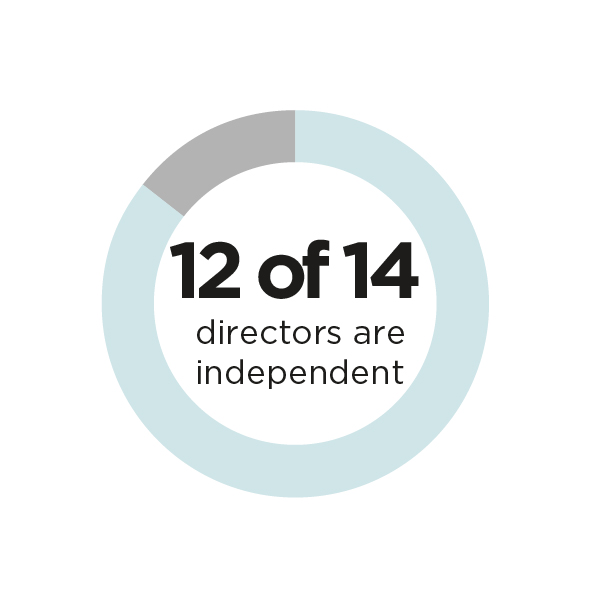
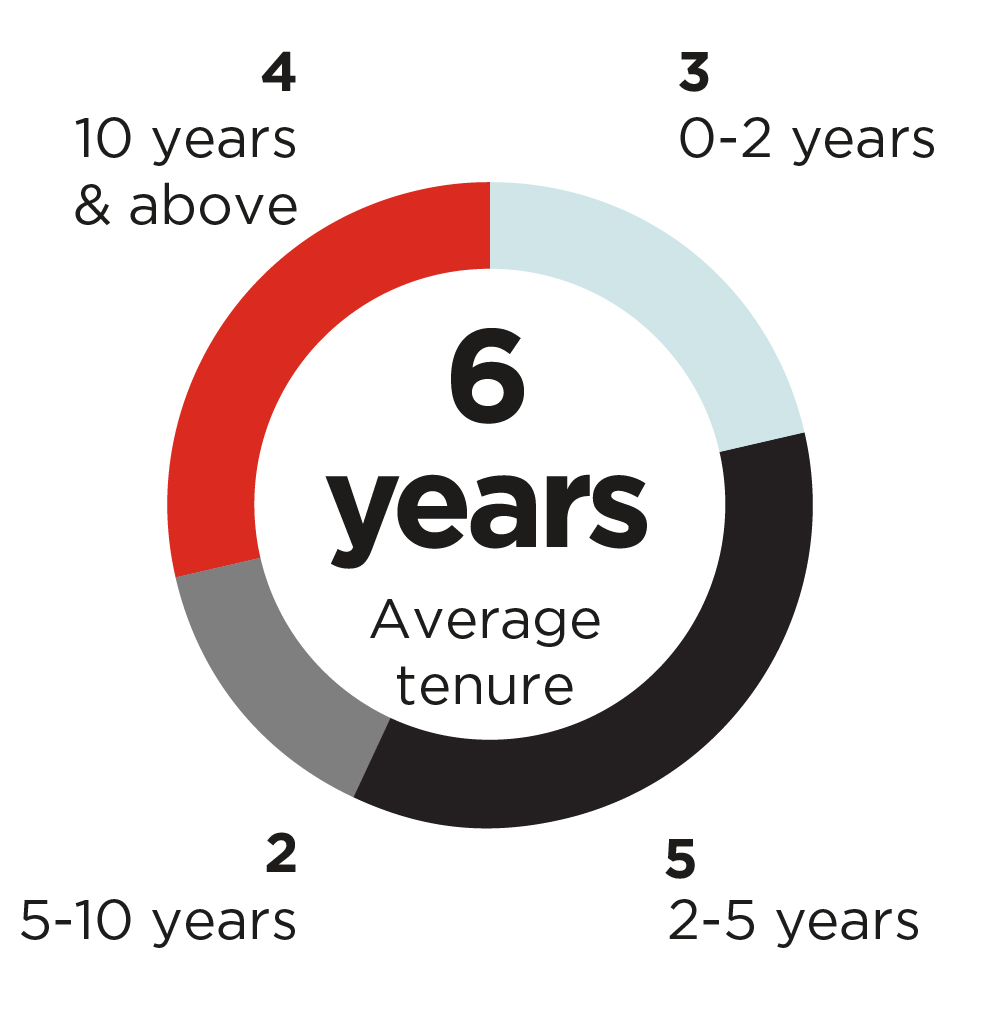
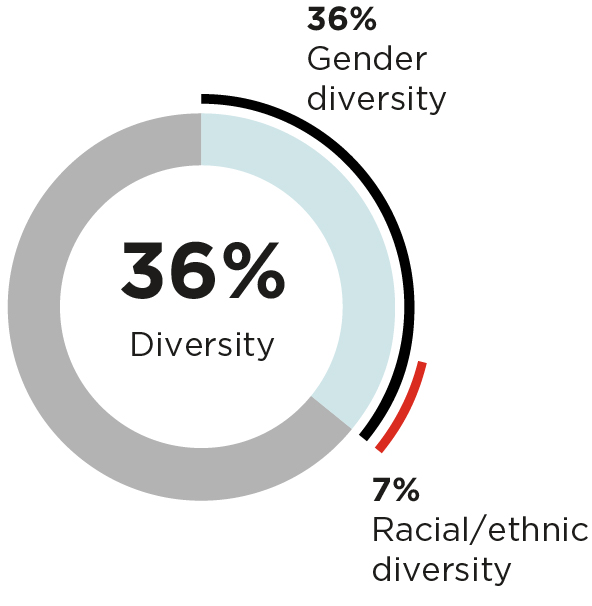
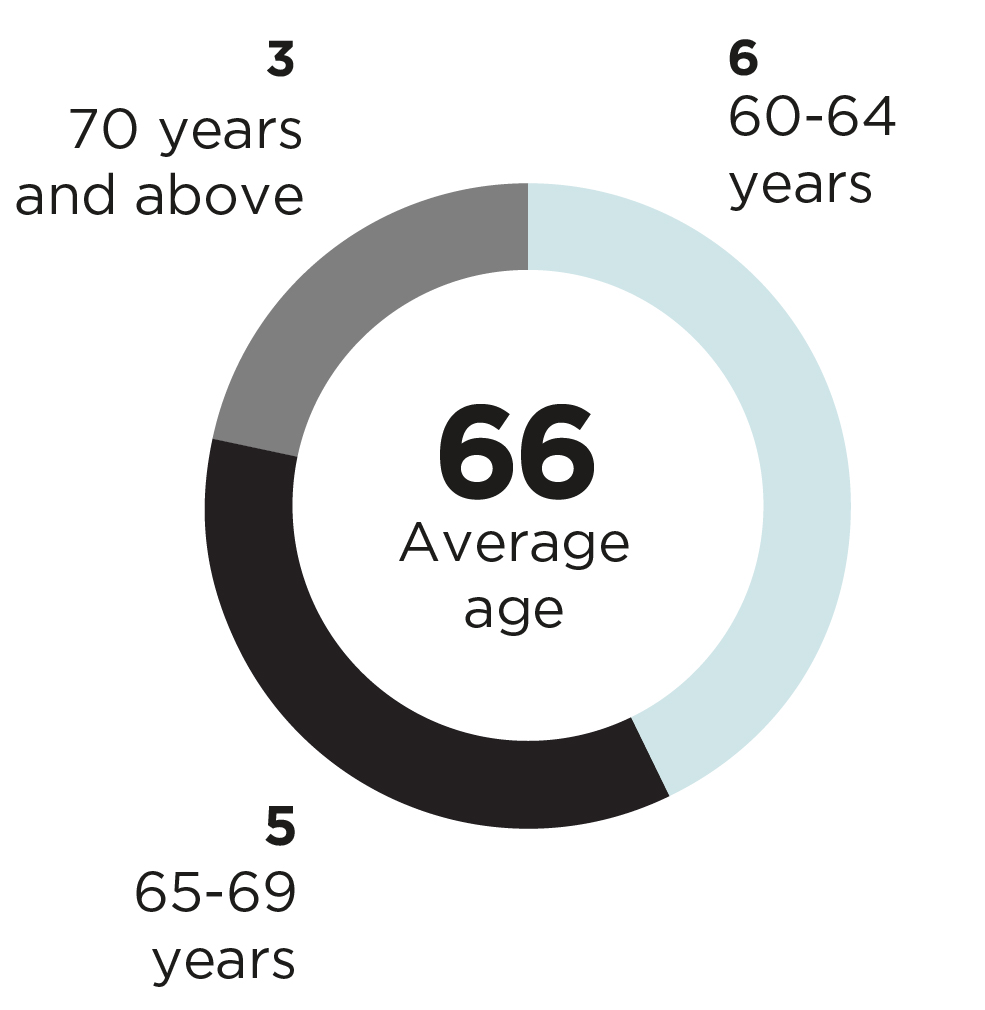
Proxy Summary 9 BOARD OVERVIEW
SinceCommittee Memberships Other
Public
BoardsIndependent A&FC HRCC N&GC PPSC EC Class III Directors, Current Nominees 
Former Executive Vice President of
International Operations of 3M2020 


2 
Former member of Managing Board
of Siemens AG and CEO for Siemens Gas and Power2020 


3 
2022 

0 
Former Head of Energy Research
at Evercore ISI2021 


0 Class I Directors, Whose Terms Expire in 2025 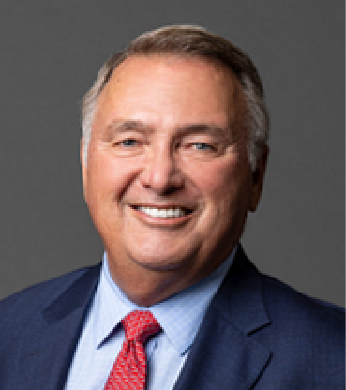
Former Chief Advisor - Chemicals for IHS Markit2016 


0 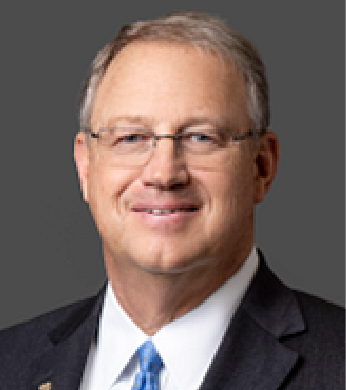
Executive Chairman and Former CEO
of Phillips 662012 

1 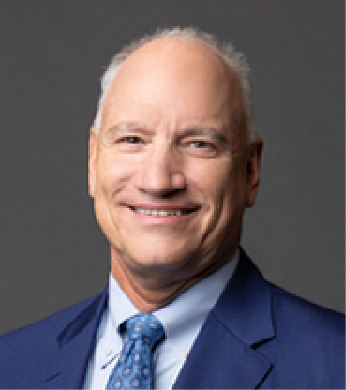
Former Senior Executive Advisor to
Tudor, Pickering, Holt & Co.2012 




1 
2024 



0 
Former Chief Executive Officer,
President and Director of ITT Inc.2016 




2 Class II Directors, Whose Terms Expire in 2026 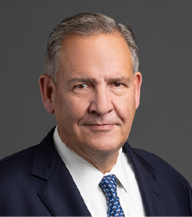
of RTX Corporation2022 



1 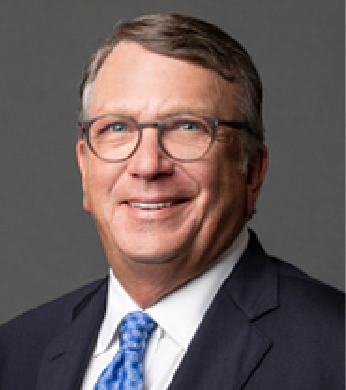
Former Executive Vice President and
Chief Financial Officer of Walmart Inc.2019 


2 
Executive Vice President,
General Counsel and
Secretary of WestRock Company2021 


1 
Former Chairman and Chief Executive
Officer of UAL Corporation2012 




1 
Former Chief Executive Officer of
Allianz Global Investors Capital2012 




2 10 EXECUTIVE COMPENSATION PROGRAM OVERVIEW programs areprogram is designed to pay for performance. We link compensation to Company performance and use metrics we believe will drivealigned with our strategy to incentivize long-term shareholder value and that are alignedcreation. The majority of executive compensation is provided in the form of long-term incentives with Company strategy.three-year performance periods. We align the interests of our executives with our shareholders through equity compensation, and we align all employees' interests with the execution of short-term priorities through our annual VCIP.all employees throughthe changing needs of the Company. Following these changes, our say-on-pay vote received support from approximately 88% and 92% of votes cast at our 2022 and 2023 annual cash bonus.RESPONDING TO SHAREHOLDER FEEDBACK ON PAYManagementmeetings, respectively. The HRCC believes that this strong support for the executive compensation program is evidence that the program is working as intended and membersmeets our shareholders' expectations.In 2024, the HRCC implemented several additional changes to our executive compensation program in response to recent shareholder feedback and evolving best practices in the market: Proxy Summary 11 Board engaged extensively with shareholders in 2021 to understand their perspectives onNEOs ensures that a significant portion of compensation is at risk. Please see the Compensation Discussion and Analysis section of this Proxy Statement for more information about our executive compensation practices and programs. As a result of the insights and feedback we received from our shareholders, we implemented the following actions in 2021:program.Compensation ChangesProxy Disclosure EnhancementsVCIP•Removed positive individual modifier from VCIP for all NEOs (started in 2021 program)•Rigor of VCIP and PSP goal-setting processPSP•Weighting and selection of VCIP metrics•Capped payout at 100% on TSR portion of PSP if absolute TSR is negative (started in 2019-2021 program)•Rationale for adjustments to PSP financial results•Require above median relative TSR performance for target payout (starts in 2022-2024 program)•Peer groups and peer selection14 Phillips 66 2022 Proxy StatementOur executives’ compensation includes base salary, an annual bonus opportunity under our Variable Compensation Incentive Program (“VCIP”), and equity-based compensation, including stock options, restricted stock units (“RSUs”) and awards under our Performance Share Program (“PSP”). The illustration below summarizes the principal elements of our executive compensation programs and the performance drivers of each element and shows the percentage each pay element comprises of target total direct compensation for 2021 for our CEO and other named executive officers (“NEOs”). Key Elements of Pay Delivered via CEO
NEOsDelivered viaPerformance Drivers(and Weightings)(1)Base Salary Cash Cash



Annual Incentive Variable Cash Incentive Program (VCIP) Operational Sustainability 50% 



Program (VCIP)Financial Sustainability 50% EBITDA (40%)• AdjustedVCIP Controllable CostsLong-Term Incentives (LTI)• Return on Capital Employed (50%)

Program (PSP) Restricted 

Unit (RSU)Options(2)Unit (RSU)Units (RSUs) 12 As outlined, equity compensation accounts for roughly 70%OUR STRATEGIC APPROACH TO SUSTAINABILITY executives’ pay,portfolio. At Phillips 66, our sustainability programs are focused on the core principles of Financial Performance, Operating Excellence, Environmental Stewardship, Social Responsibility and PSP accounts for roughly 50% of that total. The PSPGovernance.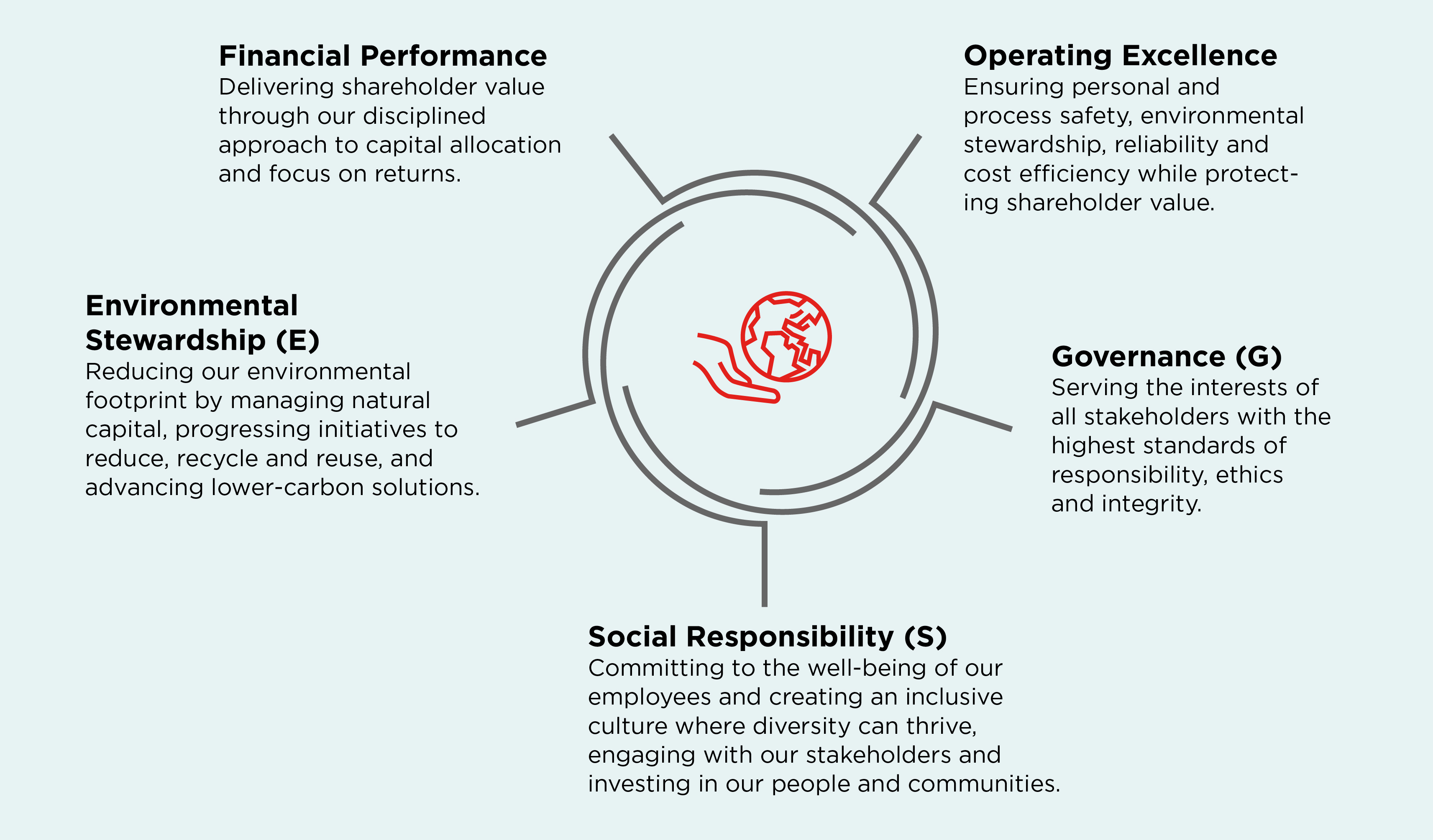
COMMUNICATING WITH STAKEHOLDERS REGARDING SUSTAINABILITY designed to align the interestsa key aspect of our leadersoverall approach to sustainability. Our stakeholders include employees, shareholders, customers, the communities where we operate, indigenous peoples, legislators, financial institutions, and energy consumers. We approach our stakeholder engagement from a position of mutual respect, by respecting human rights, demonstrating our values through our actions and being a good neighbor. We conduct our operations in accordance with thatour Company values and policies, and consistent with the spirit of the United Nations’ Universal Declaration of Human Rights.Proxy Summary 13 Manufacturing-related emissions intensity
Scope 1 and 2 from operated assets by 2030Products manufactured and sold emissions intensity
Scope 3 from operated assets by 2030Manufacturing-related emissions intensity
Scope 1 and 2 from operated assets by 2050In 2022, we saw an 8% reduction in Scope 1 & 2 GHG emissions intensity and a 3% reduction in Scope 3 emissions intensity from 2019 levels. Data regarding our 2023 GHG emissions intensity performance will be available in the fall of 2024. SHAREHOLDER OUTREACH AND ENGAGEMENT through TSRare brought back to the boardroom and ROCE,inform the Board's decision making.We also engage with our shareholders by conducting periodic roadshows, participating at investor conferences, responding to individual investor inquiries and taking questions during our quarterly earnings calls and at our annual meetings of shareholders. 14 FORWARD-LOOKING STATEMENTS, WEBSITE REFERENCES AND LINKS share price appreciationgoals and statements about our future financial performance and business. Forward-looking statements may be identified by the use of words like “plans,” “expects,” “will,” “anticipates,” “believes,” “intends,” “projects,” “targets,” “estimates” or depreciation over the 3 year- performance period. The metrics defined in 2019-2021 PSP deliveredother words of similar meaning. Forward-looking statements are based on certain assumptions and expectations of future events which may not prove accurate or be realized, and involve risks and uncertainties, many of which are beyond Phillips 66’s control. Risks and uncertainties that could cause our actual results below target, resulting in a below-target payout of 61%. The share price depreciated over that same performance period, which resultedto differ significantly from management’s current expectations are described in our executives realizing 56%2023 Annual Report on Form 10-K. In addition, our sustainability goals are aspirational and may change. Statements regarding our goals are not guarantees or promises of the initial target value.VCIP, which accounts for roughly 15%inclusion of our executives’ pay, is designed to create line-of-sight from our corporate strategy to execution of short-term prioritiesforward-looking and align payouts with corporate results. Performance under the VCIP is equally weighted between operational sustainability and financial sustainability. Newother sustainability-related statements in 2021 was the addition of two new metrics to the program: Low Carbon Priorities and Greenhouse Gas Priorities. These changes were made to reinforce our commitment to the energy transition and further align our compensation program with shareholder interests. The metrics defined in the 2021 program delivered a combined result above target, resulting in a payout of 155%. The individual performance modifier for all NEOs was removed in 2021, and therefore no additional compensation above the Company payout was delivered to the NEOs.More information can be found in the Compensation Discussion and Analysis section of this Proxy Statement is not an indication that these statements are necessarily material to investors or required to be disclosed in our filings with the Securities and Exchange Commission ("SEC"). We undertake no duty to update any forward-looking statement that we may make, whether as a result of new information, future events or otherwise, except as may be required by applicable law.Proxy Summary Proxy Summary15

RatificationAppointmentof Ernst & Young
2027 Annual Meetingproposal to ratify theappointment of Ernst & Young LLPPROPOSAL 3→ See page 83
Approvalelection of the 2022 OmnibusStock and PerformanceIncentive PlanThe Board recommends that you vote “FOR” the proposal to approve the 2022Omnibus Stock and Performance Incentive Plan.
four Class III director nominees.PROPOSAL 4→ See page 86
Two Shareholder Proposals,if properly presentedThe Board recommends that you vote “AGAINST” eachshareholder proposal.PROPOSALS5 - 6→ See page 93DIRECTOR NOMINEES16Phillips 66 2022 Proxy Statement
Election of DirectorsThe Board recommends that you vote "FOR” the following director nominees.PROPOSAL 1Greg C. Garland, Gary K. Adams, JohnJulie L. Bushman, Mark E. Lowe,Lashier, Lisa A. Davis, and Denise L. RamosDouglas T. Terreson to stand for election as Class III directors for a three-year term that expires at the annual meeting of shareholders to be held in 2025.MAJORITY VOTE STANDARD & DIRECTOR RESIGNATION POLICY Directors areEach director nominee has consented to serving as a director if elected and the Board expects that the four nominees will be available to serve until their successor is duly elected and qualified. Ifas directors. However, if a nominee is unavailable for election, proxy holders may vote for another nominee proposed by the Board or the Board may reduce the number of directors to be elected at the Annual Meeting. No family relationship exists among any of our directors, director nominees or executive officers. There is no arrangement between any director or director nominee and any other person pursuant to which he or she was, or is to be, selected as a director or director nominee.Greg C. Garland DIRECTOR EXPERIENCE, QUALIFICATIONS AND CORE SKILLS 
C-Suite 

Risk Management 
International/
Global Business
Environmental 
Industry 

Business
Transformation
Investment
Banking/Finance
Public Policy
& Government Affairs16 CLASS III DIRECTOR NOMINEES STANDING FOR ELECTION Julie L. Bushman 


Proposal 1: Election of Directors 17 Lisa A. Davis 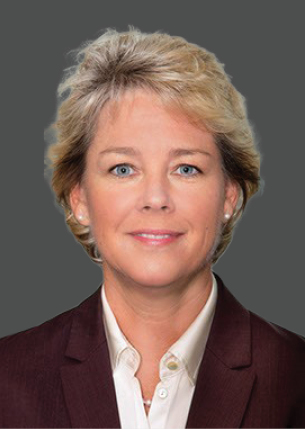
64
602012
2020Executive (Chair)
Career Highlights:•ChairmanCEOExperience Supporting Oversight of Phillips 66 (2012 to present)Experience66:Key Skills:Mr. Garland brings extensive knowledge of all aspects of our businessgovernment affairs, and industry, having servedrisk management developed in executive positions at ConocoPhillips, as president and chief executive officer of Chevron Phillips Chemical Company, and as the chairman and chief executive officer of Phillips 66 Partners. Through his more than 35her 30 years of service and experience in the energy industry Mr. Garlandthrough roles at Exxon, Texaco, and Royal Dutch Shelleachto guide our governance and oversight practices to continually evolve and remain at the forefront of our industrykey skills we seek inlargest industrial manufacturing operations globallydirector.





C-SuiteexperienceFinancialexperienceGlobalexperienceRiskManagementexperienceEnvironmentalexperienceIndustryexperienceglobal group of energy and petrochemical companies 18 Mark E. Lashier 

Proposal 1: Election of Directors 19 Douglas T. Terreson 

Amgen
Head of Global Energy (2009 to 2021)20 17CONTINUING DIRECTORS Gary K. Adams 
Age: 71Director since: 2016Committees:Compensation;Public Policy andSustainabilityCareer Highlights:•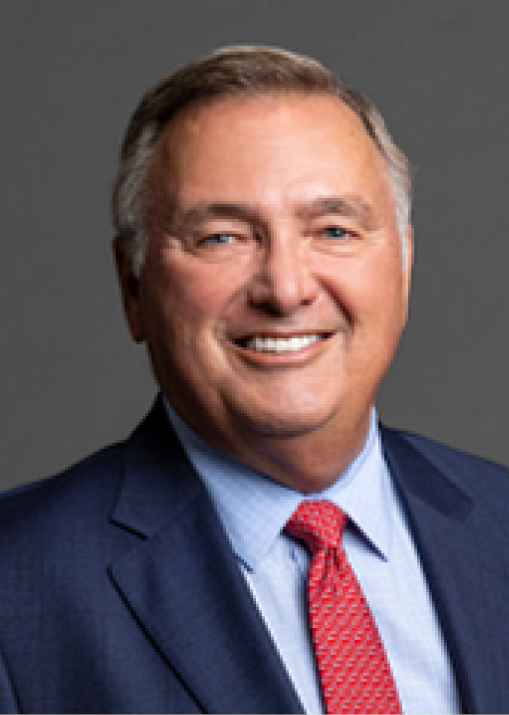
—- Chemicals for IHS Markit (2011 to 2017)
•Director of Westlake Chemical Partners LP (2014 to 2016)•Director66 Partners LP (2013 to 2016)Experience and Key Skills:66: hasbrings over 40 years of operations and advisory experience in within theglobal petrochemicals and plastics industries, along with broader industry experience contributing to the Board’s oversight of our businesses15 yearstrade organizations, government, and private-sector audiences around the world Union Carbide, where he began his career. Through various management positions, including as president, chief executive officer and chairman of Chemical Markets Associates Inc. ("CMAI”) before its(CMAI) and IHS Markit following their acquisition, by IHS,he served as a trusted strategic advisor to the leadership teams of major chemicals corporations, providing guidance on complex financial and investment-related matters including competitive positioning, capital deployment, analytics, and syndicated financealsospent 15 years in operational roles at Union Carbide, developing significant expertise within the chemicals supply chain which has been beneficial to the Board’s oversight of that aspect of our businessProposal 1: Election of Directors 21 Gregory J. Hayes 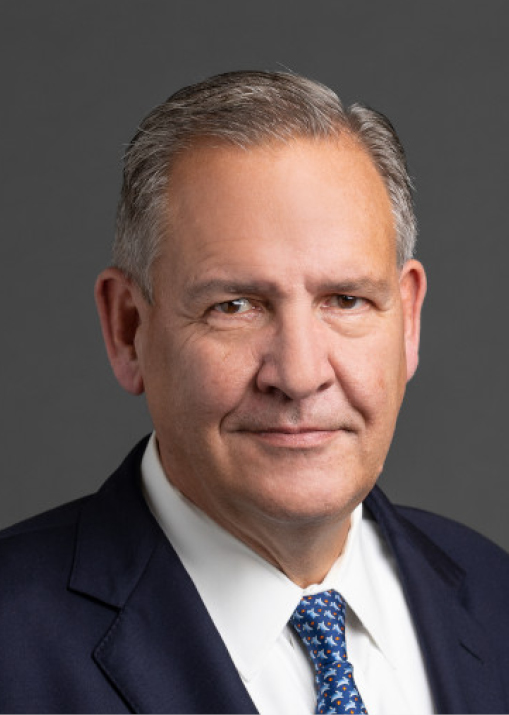

with operating responsibilities, and financialin strategic planning, M&A, global operations, and risk management, which are critical to effective execution of Phillips 66’s strategic prioritiesforof human capital and management succession planning initiatives during this critical time in the Company’s business transformation journeyglobal business.deep understanding of cyclical, commodities-focused industries through his former service on the board of Nucor Corporation, the largest steel producer in the U.S. 




C-SuiteexperienceFinancialexperienceGlobalexperienceRiskManagementexperienceIndustryexperience22 Charles M. Holley 

Trecora ResourcesIndependent Senior Advisor, Chief Financial Officer Program (2016 to 2019) Proposal 1: Election of Directors 23 John E. Lowe 

63
65Audit;Nominating andGovernance;Public Policy andSustainability;
N&GC
Career Highlights:Mr. Lowe’s 30-year career with ConocoPhillips and Phillips Petroleum Company included Executive Vice President roles overseeing exploration and production; commercial operations; and planning, strategy and corporate affairs which enhances his oversight of our Company present)•Director of Agrium Inc. (2010 to 2015)Experience2022)Key Skills:Mr. Lowe had a 30-year career with ConocoPhillips and Phillips Petroleum Company, including several executive positions with ConocoPhillips, providing him extensive industry experience. Mr. Lowe also has financial and risk oversight, international and environmental experience through the series of executive positions he has held and his service on the boards of publicly tradedproduction company specializing in crude oil and natural gasenergy companies.





C-SuiteexperienceFinancialexperienceGlobalexperienceRiskManagementexperienceEnvironmentalexperienceIndustryexperienceProduction (2007 to 2008) 24 Robert W. Pease 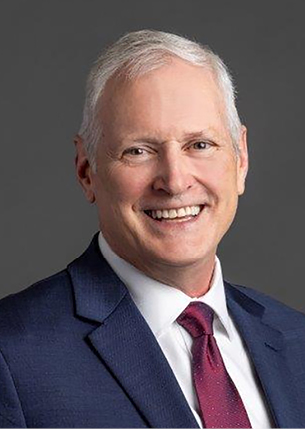

•TC EnergyAPA Corporation (Non-Executive Chairman)Director of U.S. Operations (2017 to 2018) 18Proposal 1: Election of Directors Phillips 66 2022 Proxy Statement25Denise L. Ramos 
Age: 65Director since: 2016Committees:Audit;Nominating andGovernance;Public Policy andSustainability (Chair);ExecutiveCareer Highlights:•
directorDirector, ITT Inc.
(2011, a diversified manufacturer of engineered components and customized technology solutions for the transportation, industrial, and energy markets, where she developed skills in executive leadership, human capital, business transformation, innovation and technology that enable her to 2018)•Directorbe an active contributor to a range of Praxair, Inc. (2014Phillips 66’s committees and oversight activities2016)Experienceour Board and Key Skills:the A&FC on financial planning, accounting and risk management, particularly in matters relating to our consumer-facing Marketing and Specialties business has gained significant experience in the oil and gas industry including through her more than 20 years in various finance positions at Atlantic Richfield Company. Having also served as CEOCompany, a former producer, refiner, and marketer of ITToil and chief financial officer at ITT as well as Furniture Brands International and Yum! Brands,gasextensive senior leadership, risk managementboard-level insights to issues facing complex, regulated global public companies and global business expertise to the Board.specific oversight experience in finance, audit, corporate governance, public policy, and sustainability matters 





C-SuiteexperienceexperienceGlobalexperienceRiskManagementexperienceEnvironmentalexperienceIndustryexperience Officer (2007 to 2011) Bank of America Julie L. Bushman 
Age: 61Director since: 2020Committees:Audit;Public Policyand SustainabilityTerm Expires 2024Career Highlights:•Former Executive Vice President of International Operations of 3M (2017 to 2020) and Senior Vice President of Business Transformation and Information Technology of 3M (2013 to 2017)•Director of Johnson Controls (2012 to 2016)Experience and Key Skills:As a former executive of 3M, Ms. Bushman brings executive management experience, as well as experience in international business, risk management and financial oversight. Ms. Bushman also brings environmental experience through her roles leading occupational health and environmental safety divisions at 3M.





C-SuiteexperienceFinancialexperienceGlobalexperienceRiskManagementexperienceEnvironmentalexperienceInformationTechnologyOther Current Public Company Directorships:•Adient plc•Bio-Techne CorporationProposal 1: Election of Directors19Lisa A. Davis 
Age: 58Director since: 2020Committees:Compensation;Public Policy andSustainabilityTerm Expires 2024Career Highlights:•Former member of Managing Board of Siemens AG and CEO for Siemens Gas and Power (2014 to 2020)Experience and Key Skills:Ms. Davis brings significant industry experience to the Board through her roles at Siemens, as well as over 25 years in engineering and management roles at large integrated oil companies including ExxonMobil, Texaco and Shell, including executive vice president strategy and portfolio at Shell.




C-SuiteexperienceFinancialexperienceGlobalexperienceRiskManagementexperienceIndustryexperienceOther Current Public Company Directorships:•Air Products and Chemicals•Kosmos Energy•Penske Automotive Group•C3.aiCharles M. Holley 
Age: 65Director since: 2019Committees:Audit;Public Policyand SustainabilityTerm Expires 2023Career Highlights:•Former Executive Vice President and Chief Financial Officer of Walmart Inc. (2010 to 2015)Experience and Key Skills:Mr. Holley served as Executive Vice President and Chief Financial Officer at one of the largest U.S. corporations, providing him with expertise in finance, senior management, risk and asset management, strategic planning and capital markets. From 2016 to 2019, Mr. Holley served as an independent senior advisor, U.S. CFO Program, Deloitte LLP. He also has extensive experience in international operations and technology platforms.




C-SuiteexperienceFinancialexperienceGlobalexperienceRiskManagementexperienceInformationTechnologyOther Current Public Company Directorships:•Amgen•Carrier Global20Phillips 66 2022 Proxy StatementDenise R. Singleton 
Age: 59Director since: 2021Committees:Audit;Public Policyand SustainabilityTerm Expires 2023Career Highlights:•

Senior Vice President, General Counsel and Corporate Secretary of IDEX Corporation (2015 to MarchFebruary 2022)Senior Vice President, General Counsel, Corporate Secretary, and Chief Compliance Officer at SunCoke Energy, Inc. (2011 to 2015)Experience and Key Skills:Ms. Singleton was named Executive Vice President, General Counsel and Secretary of WestRock Company in March 2022. Previously, she was Senior Vice President, General Counsel and Corporate Secretary of IDEX Corporation, a position she held from 2015 to 2022. Prior to joining IDEX, Ms. Singleton served as Senior Vice President, General Counsel, Corporate Secretary and Chief Compliance Officer at SunCoke Energy, Inc. and its controlled company SunCoke Energy Partners, L.P., where she was on the board of directors, from 2011 to 2015. Prior to joining SunCoke Energy, Ms. Singleton held several positions at PPG Industries, Inc., and was a partner at Shaw Pittman LLP, a law firm.




C-SuiteexperienceFinancialexperienceGlobalexperienceRiskManagementexperienceEnvironmentalexperienceTeledyne Technologies Incorporated Douglas T. Terreson 
Age: 60Director since: 2021Committees:Compensation;Public Policy andSustainabilityTerm Expires 2024Career Highlights:•Former Head of Energy Research at Evercore ISI (2016 to 2021)Experience and Key Skills:Mr. Terreson is a former Senior Advisor at Evercore, a position he held from April 2021 through July 2021. He previously served as the Head of Global Energy at Evercore ISI, from 2016 until April 2021. Mr. Terreson joined International Strategy & Investment Group (ISI), which was acquired by Evercore in 2014, in 2009, after 15 years at Morgan Stanley, where he managed the Global Energy Group. Prior to that, he managed Putnam Investments' energy mutual fund. Mr. Terreson began his career as an engineer with Schlumberger Limited.



FinancialexperienceGlobalexperienceRiskManagementexperienceIndustryexperienceProposal 1: Election of Directors 2127Glenn F. Tilton 
Age: 73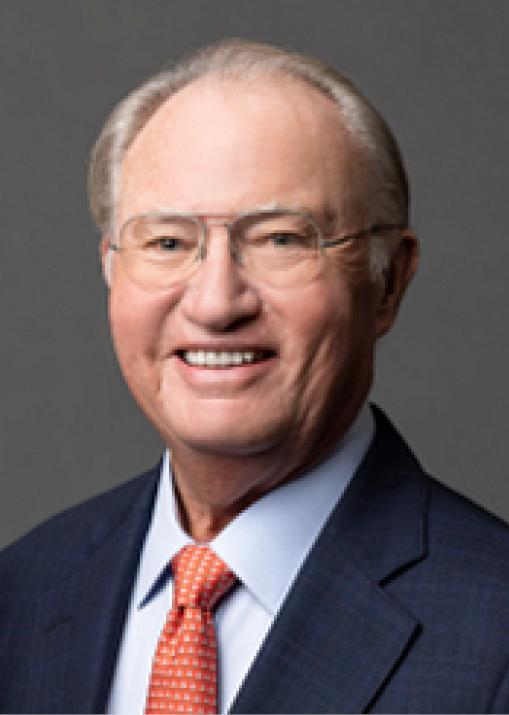
since: 2012Committees:Compensation; Nominatingand Governance (Chair);Public Policy andSustainability;ExecutiveTerm Expires 2023Career Highlights:•Former Chairman of the Midwest, JPMorgan Chase (2011 to 2014)•Former Non-Executive Chairman, United Continental Holdings (2010 to 2012)•Phillips 66 (2002 to 2010)
Key Skills:Mr. Tilton previously served as chairman and chief executive officerChief Executive Officer of UAL Corporation, the parent company of United Air Lines,Airlines, as well as chairmanChairman of the Midwest of JPMorgan Chase, & Co. Mr. Tilton's career has provided him with strong management experience overseeing complex multinational businesses operating in highly regulated industries as well as expertise in financefinancial reporting, risk management, environmental issues, business transformations and capital markets matters. , which assist in his oversight of Phillips 66’s management team and financial strategyhasprovides Phillips 66 with extensive experience in the energy industry through his following a career spanning more than 30 years in increasingly senior roles with Texaco, Inc.including serving as Chairman and Chief Executive OfficerchairmanLead Independent Director at AbbVie, Vice Chairman at Chevron, Chairman of United Continental Holdings following the merger between United and chief executive officer.Continental Airlines, and a member of the Special Committee at TXU Corporation which negotiated the sale of the company as part of the then-largest leveraged buyout on record, provides him with deep knowledge of corporate governance and board oversight across a range of complex situations





C-SuiteexperienceFinancialexperienceGlobalexperienceRiskManagementexperienceEnvironmentalexperienceIndustryexperience28 •Abbott Laboratories•AbbVie Inc. (Lead Director)Marna C. Wllittington Whittington
Age: 74Director since: 2012Committees:Compensation (Chair);Nominating and Governance;Public Policy andSustainability;ExecutiveTerm Expires 2023Career Highlights:•
(2002 to 2012)
and Key Skills:Supporting Oversight of Phillips 66: Whittington hasWhittington’s many years of leadership experience and expertise as a former senior executive in the investment management industry, including as chief executive officerChief Executive Officer of Allianz Global Investors Capital. She has extensive knowledge of andCapital, provides our Board with substantial experience in international business, financial reporting, risk management and in financial, investment and banking mattersprovides valuable insight investment oversight which are key to supporting our strategic priorities and progress toward achieving themher previousa management succession planning and executive compensation perspective at a critical time in the Company’s evolutionmember.member gives her valuable industry experience as well as knowledge across a range of corporate governance and oversight approaches




C-SuiteexperienceFinancialexperienceexperienceRisk
Investors Capital, a global investment management firmexperienceIndustryexperience, an American active investment management firm Macy's, Inc•Oaktree Capital Group LLC 22Phillips 66 2022 Proxy StatementThroughout the year, the Board continued its proactive assessment of board succession planning and refreshment. The Nominating and Governance Committee and full Board work to ensure we maintain a Board that embodies a broad and diverse set of experiences, qualifications, attributes and skills to provide effective oversight of management and the Company. When seeking new candidates, the Board considers a diverse pool of qualified candidates who could potentially serve as Board members. We view diversity in terms of skills, as well as gender, age, race, ethnicity, background, professional experience and perspectives.As the needs of the Company change, the Board revisits the skills and experiences it seeks. Included in the matrix below are the core skills and experiences of C-suite, environmental, risk management, international/ global and industry experience, as well as additional skills and experiences the Board currently considers, for our continuing directors. Adams Bushman Davis Garland Holley Ramos Singleton Tilton Whittington Age* 71 61 58 64 65 63 65 59 60 73 74 Gender M F F M M M F F M M F Independence ● ● ● ● ● ● ● ● ● ● Other Public Company Boards 1 2 4 1 2 2 2 1 0 2 2 C-Suite Experience ● ● ● ● ● ● ● ● ● ● Financial Experience ● ● ● ● ● ● ● ● ● ● ● International/Global Business ● ● ● ● ● ● ● ● ● ● ● Risk Management ● ● ● ● ● ● ● ● ● ● ● Environmental ● ● ● ● ● ● Industry Energy ● ● ● ● ● ● ● Pipeline/Transportation/Logistics ● ● ● ● Refining ● ● ● ● ● Chemicals ● ● ● ● ● Midstream ● ● ● ● Information Technology ● ● Business Transformation ● ● ● ● ● ● ● ● ● Investment Banking/Finance ● ● ● ● ● ● ● ● ● ● Public Affairs ● ● ● ● ● ● ● Government Affairs ● ● ● ● ● ● * As of March 15, 2022Proposal 1: Election of Directors 2329 













CORE COMPETENCIES 0 2 3 1 1 2 0 1 0 2 1 0 1 2 ü ü ü ü ü ü ü ü ü ü ü ü ü ü ü ü ü ü ü ü ü ü ü ü ü ü ü ü ü ü ü ü ü ü ü ü ü ü ü ü ü SKILLS ALIGNED WITH PHILLIPS 66’s STRATEGY ü ü ü ü ü ü ü ü ü ü ü ü ü ü ü ü ü ü ü ü ü Energy ü ü ü ü ü ü ü ü ü Refining ü ü ü ü ü ü ü Chemicals ü ü ü ü ü ü Midstream ü ü ü ü ü ü ü ü ü ü ü ü ü ü ü ü ü ü ü ü ü ü ü ü ü ü ü ü ü ü ü ü ü ü ü ü ü ü ü ü ü ü ü ü DEMOGRAPHICS Age 73 63 60 66 63 67 62 65 65 67 61 62 75 76 Gender M F F M M M M M M F F M M F Racial/ethnic diversity ü 8 4 4 12 2 5 2 12 0 8 3 3 12 12 ü ü ü ü ü ü ü ü ü ü ü ü ContentsApril 3, 2024.DIRECTOR QUALIFICATIONS AND NOMINATION PROCESSAnnual Assessment of Size, Composition and Structure30 BOARD COMPOSITION AND QUALIFICATIONS 56 years, representing an appropriate balance of tenures. The Board does not maintain term limits, as the Board believes that continuity of service can provide stability and valuable insight. Our Corporate Governance Guidelines include a mandatory retirement that provides that no director may serve past the annual meeting immediately following his or her 75th birthday. The average age of our directors is 64.8.ensures refreshmentviews diversity in terms of skills, gender, age, race, ethnicity, background, professional experience and continuedperspectives and assesses its effectiveness through evaluation, nomination, and other policies, processes and practices. For example:●The Nominating and Governance Committee annually reviews with the Board the qualifications for Board members and the composition of the Board as a whole.●The Nominating and Governance Committee annually reviews each director nominee’s continuation on the Board and makes recommendations to the full Board.●The Company’s Corporate Governance Guidelines provide that any director whose principal outside responsibilities have changed since election to the Board should volunteer to resign to give the Board the opportunity to review the appropriateness of continued Board membership under the circumstances.Self Assessment1 Oversight of annual evaluationEach committee of the Board performs an annual self-assessment, and the Nominating and Governance Committee and Lead Director oversee an annual self-assessment of the full Board.2 Survey and individual discussionsThe self-assessment includes an evaluation survey and/or individual discussions between the Lead Director and each other director.3 Presentation of resultsA summary of the results of each committee’s self-assessment is presented to the committee and discussed in executive session. The Lead Director presents a summary of the results of the Board evaluation to the Board in executive session.4 Incorporation of feedbackAny matters requiring further action are identified and action plans developed to address the matter.RECENT BOARD REFRESHMENTIn 2021,in this regard as part of the annual Board assessment. As the needs of the Company change, the Board appointed Denise R. Singleton and Douglas T. Terreson torevisits the Board. Ms. Singleton brings significant c-suite, financial, global, risk management and environmental experience to the Board. Mr. Terreson brings significant financial, global, risk management and industry experience. These directors’ skills and perspectives further enhance our diversity and expertiseexperiences it seeks in the boardroom. Their appointments were informed by the Board’s continued focus on its composition,new members, taking into consideration gaps that may arise as a result of director retirements, as well as insights provided throughthe evolving needs of the Company in terms of strategy and emerging opportunities and risks.annual self-evaluation process. Our current board composition providesability to maintain a diversitybalanced mix of thoughtshorter- and longer-tenured directors, which is necessary for the Board to maintain a mix of fresh perspectives and a broaddeep understanding of the Company's business. Maintaining a mix of shorter- and longer-tenured directors is particularly important in our industry, in light of the cyclical nature of many aspects of our operations, as well as the range of skillscomplex macroeconomic and perspectives aligned withgeopolitical factors we face, which make our strategy. longer-tenured directors' depth of experience particularly valuable.Board changes since 2019:●Five new highly-skilled directors have joined the Board●Skills enhanced:●Increased gender and racial/ethnic diversity of the Board●Environmental●Industry●Information Technology●Finance24 Phillips 66 2022 Proxy StatementIdentification and Consideration of New NomineesThe Board is responsible for nominating directors and filling vacancies that may occur between annual meetings, based upon the recommendation of the Nominating and Governance Committee. The Nominating and Governance Committee process for identifying and recommending candidates includes:1 ReviewThe Nominating and Governance Committee considers the Company’s current needs and long-term and strategic plans to determine the skills, experience and characteristics needed by our Board.2 IdentifyThe Nominating and Governance Committee identifies candidates through the use of a search firm or the business and organizational contacts of directors and management.3 EvaluateIn evaluating potential candidates for nomination to the Board, the Nominating and Governance Committee and the Board consider several factors:●all directors are expected to possess the highest personal and professional ethics, integrity and values and be committed to representing the long-term interests of the Company’s shareholders;●candidates should possess skills and experience complementary to those of existing directors; and●additionally, directors are expected to devote sufficient time and effort to their duties as a director.4 RecommendThe Nominating and Governance Committee recommends director candidates to the Board of Directors with the goal of creating a balance of knowledge, experience and diversity.The core skills and qualifications considered in evaluating director nominees and Board composition as a whole are described below. 
C-Suite experience
Financial experience 
Global experienceExecutive management experience provides valuable insights and practical understanding of companies, and the methods to drive change and growth within an organizationFinance and financial reporting experience provide knowledge necessary to evaluate our performance by reference to financial targets and to oversee financial reportingGlobal business or international experience provides valuable perspectives on our operations and enables the oversight of our strategic initiatives 
Risk management experience
Environmentalexperience
Industry experienceExperience in managing risk ensures capabilities necessary for risk oversight responsibilities, bringing background and experience that increase directors’ effectivenessExperience in environmental regulation helps in effective evaluation and oversight of our strategy to provide energy and improve lives while ensuring a healthy and safe environmentEnergy experience brings pertinent background and knowledge to provide perspective on issues specific to the Company’s industry, business, operations and strategyProposal 1: Election of Directors 25The Nominating and Governance Committee believes that the Board should reflect a range of talents, ages, skills, experiences, diversity, and expertise sufficient to provide sound and prudent guidance with respect to the Company’s strategic and operational objectives. directors. We havedirectors, and incorporated this commitment into ourits Corporate Governance Guidelines.Proposal 1: Election of Directors 31 Shareholder RecommendationCandidatesNominatingBoard collectively possesses a significant depth of industry experience across each of Phillips 66's segments, which is complemented by leadership across areas critical to the execution of our strategy including international operations, information technology and innovation, business transformation, accounting, banking and capital markets ,risk management and public policy and government affairs.32 Review of current skills to identify needs or gaps The N&GC considers the Company’s current and long-term needs and strategic plans to determine the skills, experiences and characteristics that may enhance the Board's composition and effectiveness. This includes consideration from multiple perspectives including the needs of the overall Board as well as its committees. Identify a pool of director candidates The N&GC identifies a pool of diverse candidates through a variety of methods, including third-party search firms, suggestions from shareholders, and the business and organizational contacts of directors and management. Evaluate the director candidates and assess their potential contributions Recommend candidates to the Board The N&GC recommends director candidates to the Board with the goal of creating a balance of knowledge, experience and diversity. 2023 Board Self Assessment Process Oversight of the evaluation process The N&GC oversees the annual self-assessment of the Board, and annually considers the evaluation method process. The Lead Independent Director oversaw the annual self-assessment of the full Board. In 2023, the self-assessment included an evaluation survey, which provided an opportunity for candid feedback on the Board's performance, followed by one-on-one conversations between the Lead Independent Director and each other director. During these conversations, the Lead Independent Director sought input on the effectiveness of the Board, its committees, and the individual directors, among other topics. Presentation and discussion of results All comments from the written questionnaire were compiled and shared with the full Board on an unattributed basis. The Lead Independent Director presented a summary of the results to the N&GC and to the full Board in executive session. Incorporation of feedback Any matters requiring further action that may enhance the Board's performance are identified and action plans may be developed to address the matter. Proposal 1: Election of Directors 33 CommitteeGuidelines specify that each director is expected to be able to devote sufficient time and effort to his or her duties as a Company director.Nominating and Governance CommitteeN&GC should follow the procedures described under Submission of Future Shareholder Proposals and Director Nominationsbeginning on page 108. In addition, the shareholder should provide such other information deemedit deems relevant to support the Nominating and Governance Committee’s evaluation.N&GC’s evaluation of the candidate. Candidates recommended by the Company’s shareholders are evaluated on the same basis as candidates recommended by the Company’s directors, management, third-party search firms or other sources.BOARD INDEPENDENCE.34 Corporate Governance BOARD LEADERSHIP STRUCTURE Corporate Governance 35 36 BOARD INDEPENDENCE NYSE.New York Stock Exchange ("NYSE"). These standards assist the Board in determining the independence of the Company’s directors. The Board of Directors has affirmatively determined that each director, other than Mr.Messrs. Garland and Lashier, meets our independence standards. Mr.Messrs. Garland isand Lashier are not considered independent because he is an executive officer ofthey are employed by the Company.sites, from the Company.sites. In all cases, it was determined that there are no relationships or transactions that are material to the Company or the director and accordingly, there are no relationships that would affect the independence of any director other than Mr. Garland.Messrs. Garland and Lashier.26 Phillips 66 2022 Proxy StatementBOARD COMMITTEES Chairman and CEO RolesThe Board of Directors believes that currently, it is in the best interests of the Company and shareholders to combine the roles of Chairman and CEO. However, there is no Company policy regarding whether the roles should be combined or separated, and our Corporate Governance Guidelines state that the Board will retain flexibility and periodically consider whether the roles should be separated and, if so, whether the Chairman should be an independent director or an employee. The Board believes that Mr. Garland’s extensive industry experience and direct, day-to-day involvement in managing the Company as the CEO makes him best suited to also serve as Chairman and guide the Board in setting Company priorities and addressing Company risks and challenges.Independent Director LeadershipOur Corporate Governance Guidelines state that when the Chairman of the Board is an employee of the Company, the non-employee directors will name a Lead Director. Glenn Tilton was appointed to serve as our Lead Director in 2016. As Lead Director, Mr. Tilton chairs executive sessions, coordinates the activities of the non-employee directors and performs other duties and responsibilities as determined by the Board, including:●advising the Chairman on Board meeting schedules, seeking to ensure that the non-employee directors can perform their duties responsibly without interfering with operations;●providing the Chairman with input on agendas for Board meetings to assure there is sufficient time for discussions;●advising the Chairman on the quality, quantity and timeliness of the flow of information from management to allow directors to perform their duties effectively and responsibly, including specifically requesting certain materials be provided to the Board;●recommending to the Chairman the retention of consultants who report directly to the Board of Directors;●interviewing Board candidates and making nomination recommendations;●assisting in assuring compliance with and implementation of the Corporate Governance Guidelines;●ensuring that he, or another appropriate director, is available for engagement with shareholders when warranted;●calling meetings of the non-employee directors as needed, developing the agenda for and chairing any such meetings and executive sessions;●acting as principal liaison between the non-employee directors and the Chairman on sensitive issues;●participating with the Human Resources and Compensation Committee in the periodic discussion of CEO performance;●leading the Board’s annual self-assessment and meeting with the CEO to discuss the results of the annual self-assessment; and●working with the Nominating and Governance Committee to recommend Board committee membership and committee chairs.The Board of Directors believes that its current structure and processes encourage its non-employee directors to be actively involved in guiding its work. The chairs of the Board’s committees review their respective agendas and committee materials in advance of each meeting, communicating directly with other directors and members of management as each deems appropriate. Moreover, each director may suggest agenda items and raise matters that are not on the agenda at Board and committee meetings.27CONSIDERATIONS IN SELECTING THE CURRENT LEAD DIRECTORMr. Tilton has been elected annually as the lead independent director since February 2016 and was re-elected by our Board on February 9, 2022, to continue to serve as lead independent director. The Board believes Mr. Tilton is imminently qualified to serve as our lead independent director in light of his experience as the lead independent director for AbbVie and his recent service as chairman of the Midwest for JPMorgan Chase & Co. and non-executive chairman of the board of United Continental Holdings, Inc. Through these roles and other executive positions he has held, Mr. Tilton has demonstrated strong leadership skills that well-position him to lead our independent directors. Mr. Tilton also has vast management experience in overseeing complex multinational businesses operating in highly regulated industries, as well as expertise in finance and capital markets matters.committees, as described below.committees. The charterscharter for each of the committeescommittee may be found in the “Investors” section on the Phillips 66 website (www.phillips66.com) under the “Corporate Governance” "Corporate Governance"caption. Shareholders may also request printed copies of these charters by following the instructions locatedin Additional Information beginning on page 102.OVERVIEW OF BOARD COMMITTEES AND PRIMARY RESPONSIBILITIES Additional Information. Other than our Executive Committee,New York Stock Exchange or SEC rules) was amended in early 2024 to require that all members of our Board’s committees meet the independence standards under our Corporate Governance Guidelines,Board serve on the NYSE listing standards,PPSC, which underscores the significance of the matters discussed at the PPSC to the full Board.SEC rules or regulations, as applicable.chair rotations. The tables below show the composition and primary responsibilities of the committees are described below. The Committee composition is shown as of March 15, 2022.December 31, 2023.Audit and Finance CommitteeCorporate Governance (the “Audit Committee”) ,2021: 92023: 10●Company'sCompany’s capital structure, complex financial transactions, financial risk management, retirement plans and tax planning.●management'sinformation technology risks, and management’s processes for identifying, monitoring, controlcontrolling and reporting ofon such exposures.●risks. Audit CommitteeA&FC MembersSEC'sSEC’s criteria for "audit“audit committee financial experts.” Additionally, the Board has determined that each member is financially literate within the meaning of the NYSE listing standards.28 Phillips 66 2022 Proxy StatementHuman Resources and Compensation Committee(the "Compensation Committee”)
(Chair),2021:2023: 6●including those relevant tofor the Company's senior officers.●CEO'sCEO’s overall compensation.●of ourrelated to the Company's human capital strategies, including in the areas of inclusion and diversity, management succession planning and talent management.the Compensation Discussion and Analysis.Compensation Committee Interlocks and Insider ParticipationNone of the members of the Compensation Committee during fiscal year 2021 or as of the date of this Proxy Statement is or has been an officer or employee of Phillips 66 and no executive officer of Phillips 66 servedbeginning on the compensation committee or board of any company that employed any member of Phillips 66's Compensation Committee or Board.Nominating and Governance Committee,2021:2023: 5●individuals to become Board members,and recommend nominees for election to the Board.Boardperiodic rotation of committee assignments.●assignments and committee chairs. ●Recommendpoliciesguidelines and procedures.●Board'sthe Board’s annual self-evaluationself-assessment of its performance and monitor Board composition.●Jointly with Compensation Committee evaluate potential successorsPublic Policy and Sustainability Committee,2021: 52023: 4●●●matters.
matters, and the Company's communications strategies regarding the foregoing.contributionscontributions.oversee allreceive reports from management on such candidate contributions, independent expenditures and the administration of anyother political action committees.Corporate Governance 29Executive Committee,
in 2021:2023: None●To ensure continued Board effectiveness, the Nominating and Governance Committee periodically considers committee rotations, including in the event of a change in the composition of the Board. In 2020 the Public Policy Committee changed its name to the Public Policy and Sustainability Committee. This name change was in connection with revisions to the committee’s charter that broadened the scope of its responsibilities to specifically include oversight of the Company’s sustainability program and initiatives.SHAREHOLDER OUTREACH AND RESPONSIVENESSFor several years, Corporate Governance 39 SHAREHOLDER OUTREACH AND RESPONSIVENESS has conductedmaintains a formalyear-round shareholder outreachengagement program to listen to investor perspectives on our business strategy; corporate governance;strategy, executive compensation programs; environmental, socialprogram and governance (“ESG”);sustainability and otherESG matters that are important to our investors. Information and feedback received through our engagement activities are shared with our executive leadership team and the Board of Directors, which help inform their decisions and oversight, respectively. We have a year-round shareholderOur engagement program is focused on identifying and understanding shareholder concerns and being responsivedemonstrating responsiveness to shareholders.In 2021, we engaged with representatives of many of our top institutional shareholders and discussed executive compensation,these concerns.energy transition and our sustainability efforts, among other ESG topics of importance.Our multi-phase engagement effort in 2021 was a year-long process that involved three distinct rounds of engagement:(1)Lead-Up to2021 Annual MeetingChair of the HRCC(2)Compensation-Focused Engagement (September 2021)(3)Broader ESG Engagement (November 2021)20212023 Annual Meeting, we undertook a significant effort to speak with our shareholders and heargather their feedback on our compensation program, among other topics of interest. We leveraged those valuable insights to help build a set of potential compensation programs changes for 2022. Following the outcome of the 2021 Annual Meeting, we conducted extensive engagement to better understand shareholder perspectives and solicit feedback on our compensation programs and the potential enhancements under consideration. In November 2021, we followed up with a second round of engagement focused on broader ESG topics, including climate and our approach to the energy transition. Outreach in the second round of engagement included nearly all investors contacted in the first round of engagement. This approach enabled us to meet twice with a number of our shareholders during fall 2021 for discussions that provided us with valuable feedback that informed board deliberations. 30 Phillips 66 2022 Proxy StatementGlenn Tilton (Lead Director and member of the Compensation Committee) and Marna Whittington (Chair of the Compensation Committee) led select engagements with shareholders representing a combined 34% of shares outstanding. Members of management participated in all shareholder engagements. More information on Shareholder Outreach and Responsiveness can be found in the Compensation Discussion and Analysis.Lead-Up to 2021
Annual MeetingCompensation-Focused
Engagement
(September 2021)Broader ESG Engagement
(November 2021)Lead-Up to 2022
Annual MeetingContacted Contacted Contacted 59% 49% 48% of shares outstanding of shares outstanding of shares outstanding Significant shareholder
engagement ongoingEngaged Engaged Engaged 31% 40% 40% of shares outstanding of shares outstanding of shares outstanding Our significant multi-phase engagement effort in 2021 is described below: 
Corporate Governance 31This year, we heard that our shareholders were generally supportive of the planned changes made to our executive compensation program, which had recently evolved in response to shareholder input. We continued to engage with shareholders after the 2023 Annual Meeting to discuss our strategic priorities and disclosures, GHG emissions reductions targets,a variety of ESG-related topics.climate lobbying disclosures, allChair of which were responsive to feedback received over the last year. Shareholders were interested inN&GC, and supportiveincluded the participation of Dr. Whittington, the Chair of our Board refreshment efforts andHRCC. Select areas of focus for our attempts to declassify2023 engagement meetings is shown in the Board. We also heard that investors are interested in additional disclosures on human capital management.KEY DISCUSSION TOPICS AND FEEDBACK Governance Compensation Human Capital Management Sustainability Business Strategy & Operations 40 
* 2018 2019 2020 2021 2022 2023 Disclosures and SASB is the Sustainability Accounting Standards BoardCommunications to the non-employee directors should be addressed to “Board of Directors (independent members).”Mailing Address:Corporate SecretaryPhillips 662331 City West Blvd.Houston, TX 77042Phone: (281) 293-6600Internet: “Investors" section of the Company's website (www.phillips66.com) under the “Corporate Governance" captiondirectors,director, as appropriate, depending on the facts and circumstances outlined in the communication. In that regard, the Board has requested that items unrelated to its duties and responsibilities not be distributed, such as: business solicitations or advertisements; junk mail and mass mailings; new product suggestions; product complaints or inquiries; résumés and other job inquiries; spam; and surveys. Material that is considered hostile, threatening, illegal or similarly unsuitable also will be excluded.32 Phillips 66 2022 Proxy StatementCorporate Governance 41 BOARD OVERSIGHT OF OUR COMPANYKey Areas of Board OversightThe Board provides oversight and advice in the following key areas:
Strategy 
RiskOversight 
CorporateResponsibility/Sustainability
Human Capital Management 
SuccessionPlanningStrategic OversightRisk Oversightbusinessesbusiness and operations, including management of risks the Company faces.risk management. To help it fulfill this responsibility, our management has established an enterprise risk management (“ERM”) program. The ERM program is designed to identify and facilitate the management of significant and emerging risks facing the CompanyCompany. The Board is responsible for satisfying itself, in its oversight role, that the risk management processes designed and implemented by the Company’s management are functioning as wellintended, and that necessary steps are taken to foster a culture of risk-adjusted decision making throughout the organization. The Board has delegated authority to its standing committees to manage various aspects of risk management, as discussed below. The Board has empowered the approachesA&FC to addressingfacilitate appropriate coordination among the Board's committees with respect to oversight of the Company's risk management. The A&FC meets on a periodic basis with management (and no less than annually) to discuss the Company's major risk exposures and policies and the steps management has taken to ensure appropriate processes are in place to identify, manage and control business risks.OF DIRECTORS●Has broad oversight responsibility over the ERM program and receives management updates on the development and implementation of the program.●Responsible for satisfying itself, in this oversight role, that the risk management processes designed and implemented by the Company’s management are functioning as intended, and that necessary steps are taken to foster a culture of risk-adjusted decision making throughout the organization.●●fallingthat fall within each committee’s area of oversight and expertise.●Responds to the increasingly important aspect of cybersecurity to the Board’s risk oversight role by adding two members with information technology expertise and appointing them to the Audit Committee, which oversees cybersecurity risk management.Corporate Governance 33BOARD COMMITTEESAudit Committee● Has primary responsibility for overseeing the ERM program.● DiscussesA&FC HRCC N&GC PPSC tothat govern the process by which ERM is handled and has been delegated responsibility to facilitate coordination among the Board's committees with respect to the Company's risk management programs.● Throughout the year, the Audit Committee's meeting agendas, include discussions of individual risk areas, as well as an annual summary of the ERM process.● Oversees information which are fully integrated into the overall ERM program.CompensationCommittee● Considers the risksboth executive compensation and company-wide compensation practices generally as well as corporategenerally.Nominating andGovernance Committeeincluding management succession planning● Reviewsin the areas of corporate governance and is responsible for overseeing compliance with guidelinesdirector qualifications through the nomination process. Additionally, the NominatingBoard succession mattersGovernance Committee is responsible foremergency CEO succession planning.Public Policy andSustainabilityCommittee● Assists the Board in identifying, evaluatingreviewing social, political risks and environmental trends, including lobbying activities and related risks.● Reviews management's proposed actions to anticipate and adjust to such trends and manage risks to achieve the Company's long-term business goals.● Considers risks relating to: (i)political spendingmatters; (ii) lobbying priorities and activities; (iii) public policy, including political spending policies and practices; (iv) corporateriskssustainability; and (v) emerging issues potentially affecting the reputation of the energy industry and the Company.sustainability programsCorporate Responsibility/Sustainability OversightCorporate responsibility and ethics are the foundation at every level and aspect of our organization. Rigorous, consistent42 practices contribute positively to shareholder value. Sustainability is integral to our corporate strategy and designed to ensure a resilient portfolio that creates long-term shareholder value.We embrace engagement as an important tenet of good governance and value the views of our shareholders and other stakeholders. We believe that positive dialogue builds informed relationships that promote transparency and accountability. Although our Lead Director or other members of the Board periodically participate in meetings with shareholders as appropriate, management has the principal responsibility for shareholder communication.Our board regularly reviews evolving corporate governancesustainability best practices, changing regulatory requirements and feedback from our shareholders to evolve our corporate responsibility and makes changes itsustainability programs and practices in ways that the Board believes are in the best interest of Phillips 66 and its shareholders. Recognizing the growing importance of sustainable business practices, the Board expanded the remit of the public policy committee which includes all independent members of the Board, changed its name in 2020 toand named it the Public Policy and Sustainability Committee (PPSC)("PPSC"). It also revised its charterThe Board expanded the committee's oversight responsibilities to include the reviewCompany's sustainability programs and initiatives that support a lower-carbon future. The PPSC, composed of all of the Company’s sustainability programmembers of the Board of Directors, oversees climate-related risks and initiativesopportunities to further emphasize oversight of these matters and the transition to a lower-carbon future.In furtherance of our commitment to help the world address climate change, both the PPSC and Board actively oversee climate and other environmental mattersbusiness and regularly receivereceives updates on management's progress 34 Phillips 66 2022 Proxy StatementESGsustainability goals. Over the last year, our Board was involved in the target-setting process of our new company-wide GHG emissions reduction targets. The Board was also involved in the publication of our new climate Lobbying Activities Report, which details our governance, policy development and transparent reporting on climate-related lobbying activities.We believe that engagement and good governance involve participating in political or public policy activities that advance the Company’s goals, are consistent with Company values, and improve the communities where we work and live. The PPSC also oversees political contributions, independent expenditures and the administration of any political action committees, including the publication of our Lobbying Activities Report.Human Capital Management Oversightvision.mission, vision and values. The ability of Phillips 66 to attract, retain and develop talentedhigh-performing employees, and create a workplace where they can innovate and thrive, is an integral part of our competitive strategy to drive long-term value and mitigate risk.To that end, our Through its committees, the Board routinely engages with senior leadership on matters such as talent pipeline,succession planning, retention and turnover, workplace culture, and inclusion and diversity. Each committee collaborates with senior leadershipstay informed, measure progress against goals, identify potential risksour human capital programs, policies and develop meaningful solutions.statistics, demonstrates the value Phillips 66 places on its people. Results of employee surveys and metrics on talent and diversity initiatives are reviewed by the Board on a regular basis. Board members also periodically visit our sites and meet with employees to stay connected to our corporate culture.In addition,Compensation CommitteeHRCC in its regular meetings.This human capital oversight responsibility sits with the full Board. The full Board’s engagement across the breadth of human capital management topics demonstrates the value Phillips 66 places on our people.Succession OversightManagement succession planning isas a critical tocomponent of ensuring business continuity and performance. Our Compensation CommitteeThe Board has assigned our HRCC responsibility to oversee our management succession planning a role it shares withand the Nominating and Governance Committee in the case ofN&GC to oversee CEO succession.succession planning. Our succession planning includes quarterlyactivities include sessions with executives to monitor and guide leadership development for our key corporate positions.executive leadership team. The Compensation CommitteeHRCC provides the oversight necessary to ensure we develop corporate leaders who are prepared for their roles in both the ordinary course of business and in unexpected circumstances.COMMUNITY INVOLVEMENT AND ENGAGEMENTWe are committed to creating value for our communities through economic development, philanthropy, volunteerism and advocacy, and by operating our business in a socially and environmentally responsible way. The communities in which our assets are located and where our employees live are critical stakeholders. We consistently and regularly engage with our local communities and seek their feedback. Our refining operations have community advisory councils or panels that include both Company representatives and community members. Many panels include adjacent operations from our midstream and lubricants businesses. These panels meet at least quarterly with refinery management to provide feedback, discuss topics of local concern and share insights on plans and activities. Our pipeline business units have year-round community awareness, education and listening panels to stay connected with those involved with and living near our extensive pipeline network.Corporate Governance 3543 Board Meetings
MEETINGS AND ATTENDANCE 
The Board of Directors met seventen times in 2021. In addition to the regularly scheduled meetings of the Board, in October of each year, the Board holds a two-day strategy session with members of management to review the impact of different economic scenarios and strategic options on the long-term direction of the Company.2023. All of our directors attended at least 75%more than 90% of the meetings of the Board and committees on which they served. Recognizing that director attendance at the Company'sCompany’s annual meeting can provide the Company'sCompany’s shareholders with an opportunity to communicate with the directors about issues affecting the Company, the Company actively encourages directors to attend the annual meetings of shareholders. All of our directors who werethen serving as such as of the date ofattended our 2021 Annual Meeting attended the meeting.2023 annual meeting virtually at our headquarters.BOARD EDUCATION provides information onincludes an intensive two-day immersion into the CompanyCompany’s business at the Company’s headquarters, including a detailed review of each business segment, sustainability programs and its businesshuman capital management practices, as well as the responsibilitiesBoard’s expectations of each director. At meetings throughout the year, board members.RELATED PERSON TRANSACTIONS party transaction.person transaction under Item 404 of Regulation S-K. The transaction or relationship is reviewed by the Company’s management and the appropriate committee of the Board to ensure that it does not constitute a conflict of interest and is appropriately disclosed.Nominating and Governance CommitteeN&GC conducts an annual review of any related partyperson transactions between each director, their family members and controlled entities and the Company and its subsidiaries in making recommendations to the Board regarding the continued independence of each director. Since January 1, 2021,2023, there have been no related partyperson transactions (as defined under Item 404 of Regulation S-K) in which the Company or a subsidiary was a participant and in which any director, director nominee, executive officer, a greater than 5% beneficial owner of the Company at the time of the applicable transaction, or any of their immediate family members had a direct or indirectNominating and Governance CommitteeN&GC will also consideredconsider any relationships that, while not constituting related partyperson transactions where a director had a direct or indirect material interest, nonetheless involved transactions between the Company and an organization with which a director is affiliated, either directly or as a partner, shareholder or officer. The Nominating and Governance CommitteeN&GC determined that there were no such transactions impairing the independence of any member of the Board.
with related persons in 2023.3644 2022 2024 Proxy StatementDirector Compensation for non-employee directors is reviewed annually by the Nominating and Governance Committee, with the assistance of such third-party consultants as the Nominating and Governance Committee deems advisable, and set by action of the Board of Directors.OBJECTIVES AND PRINCIPLES Board’s goal in designing suchdirector compensation is to provideprogram provides a competitive package that will enable itenables the Board to attract and retain highly skilled individuals with relevant experiencethat possess the talent and reflects the time and talentskills required to serve on the board ofoversee a complex, multinational corporation. The Board seeks to provide sufficient flexibility in the form of payment to meet individual needs while ensuring that a substantial portion of director compensation is linked to the long-term success of the Company. In furtherance of our commitment to be a socially responsible member of the communities in which we participate,operate, the Board believes that it is appropriate to extendalso extends the Phillips 66 matching gift program to charitable contributions made by individualour directors.Compensation for non-employee directors is reviewed annually by the N&GC and set by action of the Board. The N&GC may from time to time receive the assistance of a third-party consultant in reviewing director compensation, as it deems advisable. 
Equity CompensationNON-EMPLOYEE DIRECTOR COMPENSATION ADDITIONAL ANNUAL CASH COMPENSATION 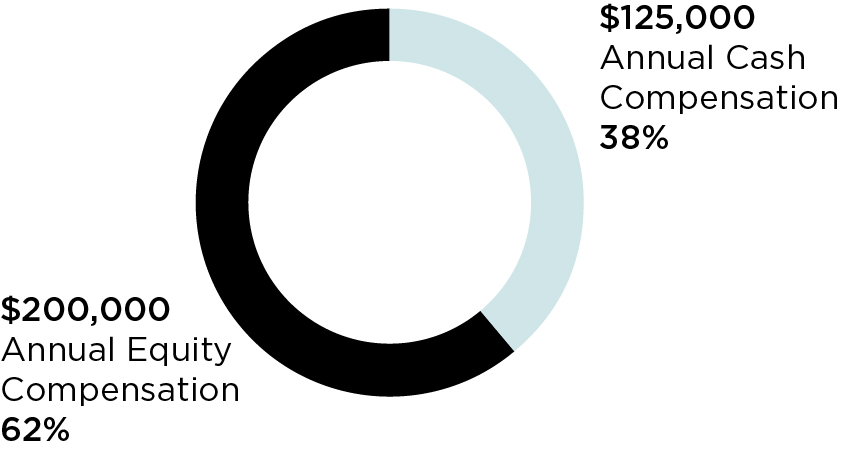

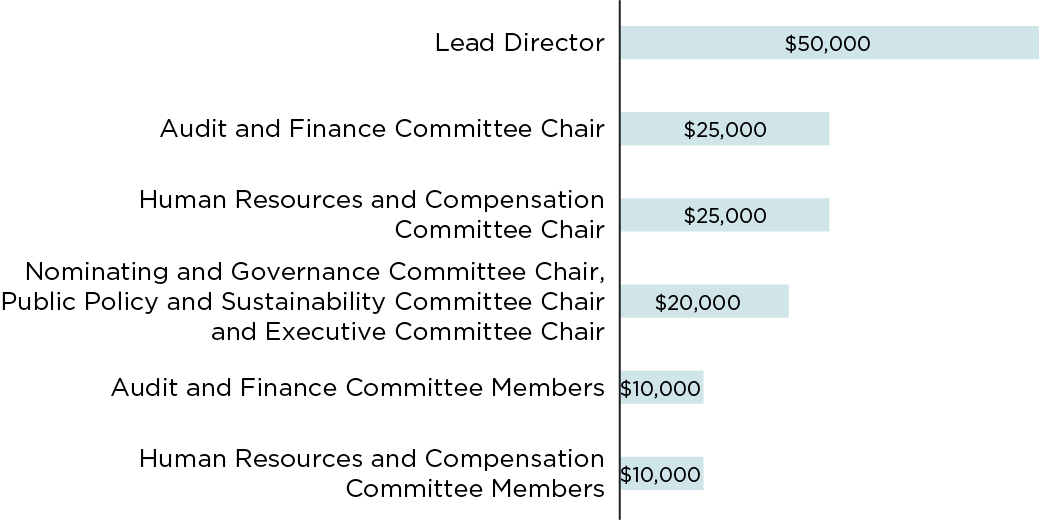
2021,2023, each non-employee director received a grant of RSUs with an aggregate value of $200,000 on the date of grant. Restrictions on the units issued to a non-employee director will lapse in the event of retirement, disability, death, or a change of control, unless the director has elected to receive the underlying shares after aan earlier stated period of time. Directors forfeit the units if, prior to the lapse of restrictions, the Board finds sufficient cause for forfeiture (although no such finding can be made after a change in control). Before the restrictions lapse, directors cannot sell or otherwise transfer the units, but the units are credited with dividend equivalents in the form of additional RSUs. When restrictions lapse, directors will receive unrestricted shares of Company stock as settlement of the RSUs.Cash Compensation2021,2023, each non-employee director received $125,000 in cash compensation for service as a director. Non-employee directors serving in specified committee or leadership positions also received additional cash compensation as indicated in the chart above.37Director Compensation 45 Deferral of Compensationnon-EmployeeNon-Employee Directors (the “Director Deferral Plan”). Deferred amounts are deemed to be invested in various mutual funds and similar investment choices (including Phillips 66 common stock) selected by the director from a list of available investment choices availablechoices. Amounts deferred under the Director Deferral Plan.The future payment of any compensation deferred by non-employee directors of Phillips 66Plan may be funded inthrough a grantor trust designed for this purpose.Directors’ Matching Gift Programaan annual maximum during any one calendar year of $15,000 per donor for active directors and $7,500 per donor for retired directors, to charities and educational institutions (excluding certain religious, political, fraternal, or collegiate athletic organizations) that are tax-exempt under Section 501(c)(3) of the IRCInternal Revenue Code ("IRC") or meet similar requirements under the applicable law of other countries. Amounts representing theseThese matching contributions are containedreflected in the “All Other Compensation” column of the Director Compensation Table.Other CompensationAmounts representing this reimbursementThese reimbursements are containedreflected in the “All Other Compensation” column of the Director Compensation Table.Stock OwnershipActual sharesShares of stock owned outright, Restricted Stock orand RSUs, including deferred stock units, may be counted in satisfying the stock ownership guidelines.All current directors are in compliance, or are on track to comply, with the stock ownership guidelines.3846 2022 2024 Proxy StatementPhillips 66DIRECTOR COMPENSATION TABLE its non-employee director compensation design and pay levels against a group ofPhillips 66's compensation peer companies. The CompanyN&GC targets the median of this peer group for all elements of non-employee director compensation.for 2021in 2023 (for compensation paid to our sole employee director, Mr.directors, Messrs. Garland and Lashier, please see Executive Compensation Tables). Name ($) ($) ($) ($) Gary K. Adams 135,000 200,045 20,742 355,787 Julie L. Bushman 135,000 200,045 15,036 350,081 Lisa A. Davis 135,000 200,045 494 335,539 Charles M. Holley 135,000 200,045 2,951 337,996 John E. Lowe 150,000 200,045 — 350,045 Harold W. McGraw III(5) 33,750 200,045 — 233,795 Denise L. Ramos 155,000 200,045 30 355,075 Denise R. Singleton(4) 62,782 93,028 16,339 172,149 Douglas T. Terreson(4) 62,782 93,028 15,169 170,979 Glenn F. Tilton 205,000 200,045 28,484 433,529 Victoria J. Tschinkel(5) 33,750 200,045 28,168 261,963 Marna C. Whittington 150,000 200,045 16,990 367,035 Name Gary K. Adams 135,000 200,008 10,558 345,566 Julie L. Bushman 135,000 200,008 — 335,008 Lisa A. Davis 135,000 200,008 17,917 352,925 Gregory J. Hayes 135,000 200,008 2,757 337,765 Charles M. Holley 135,000 200,008 — 335,008 John E. Lowe 150,000 200,008 15,000 365,008 Denise L. Ramos 155,000 200,008 1,481 356,489 Denise R. Singleton 135,000 200,008 15,560 350,568 Douglas T. Terreson 135,000 200,008 21,970 356,978 Glenn F. Tilton 205,000 200,008 42,366 447,374 Marna C. Whittington 150,000 200,008 19,023 369,031 (1)Director Compensation Reflects 2021 base cash compensation of $125,000 payable to each non-employee director. In 2021, non-employee directors serving in specified committee positions also received the additional cash compensation described previously. Compensation amounts reflect adjustments related to various changes in committee assignments by Board members throughout the year, if any. Amounts shown include any amounts that were voluntarily deferred to the Director Deferral Plan, received in Phillips 66 common stock, or received in RSUs.47(2)
Amounts represent the grant date fair market value of RSUs. Under our non-employee director compensation program, non- employee directors received a 2021 grant of RSUs with an aggregate value of $200,000 on the date of grant, based on the average of the high and low prices for Phillips 66 common stock, as reported on the NYSE, on such date. These grants are made in whole shares with fractional share amounts rounded up, resulting in shares with a value of $200,045 being granted on January 15, 2021 ($93,028 granted on July 14, 2021 for Ms. Singleton’s and for Mr. Terreson’s prorated grant).(3)All Other Compensation is made up primarily of certain gifts by directors to charities and educational institutions (excluding certain religious, political, fraternal, or collegiate athletic organizations) that are tax-exempt under Section 501(c)(3) of the IRC or meet similar requirements under the applicable law of other countries that we match under our Matching Gifts Program (Mr. Adams $12,500; Ms. Bushman $15,000; Ms. Singleton $15,000; Mr. Terreson $14,500; Mr. Tilton $15,000; and Dr. Whittington $15,000). For active directors, the program matches up to $15,000 with regard to each program year. The amounts shown reflect the actual payments made by us in 2021. All Other Compensation also includes any personal flights, automobile transportation expenses, smaller gifts (such as books, ornaments, and jackets) as well as associated tax protection, and tax assistance when we request family members or other guests to accompany a director to a Company function and, as a result, the director is deemed to make personal use of Company assets such as Company aircraft and thereby incurs imputed income.(4)Amounts shown represent compensation paid to Ms. Singleton and Mr. Terreson following election to the Board in July 2021.(5)Amounts shown represent compensation paid to Mr. McGraw and Ms. Tschinkel prior to retiring from the Board in March 2021.Director Compensation 39
Company'sCompany’s named executive officers.PROPOSAL 2 (together(together with the accompanying narrative disclosures).Compensation Committee,HRCC, which is responsible for the compensation of our Chairman, CEO and Senior Officers (as defined in Role of the Compensation Committee),executive officers, oversees the development of compensation programs designed to attract, retain and motivate executives who enable us to achieve our strategic and financial goals. The Compensation Discussion and Analysis and the Executive Compensation Tables, together with the accompanying narrative disclosures, allow you to view the trends in compensation and application of our compensation philosophies and practices for the years presented. of Directors believes that the Phillips 66 executive compensation programs align the interests of our executives with those of our shareholders. Our compensation programs are guided by the philosophy that the Company’s ability to provide value is driven by superior individual performance. The Board believes that a company must offer competitive compensation to attract and retain experienced, talented and motivated employees. In addition, the Board believes employees in leadership roles within the organization are motivated to perform at their highest levels when performance-based pay represents a significant portion of their compensation. The Board believes that our philosophy and practices have resulted in executive compensation decisions that are aligned with Company and individual performance, are appropriate in value, and have benefited the Company and its shareholders.Board of Directors.Board. Nevertheless, the Compensation CommitteeHRCC and the Board will consider the outcome of the vote when evaluating future executive compensation arrangements. However, votes for or against our compensation programs will not necessarily inform the Compensation CommitteeHRCC and the Board about which elements of those programs shareholders approve or disapprove. For this reason, the Board encourages shareholders to engage with us to allow the Compensation CommitteeHRCC to understand shareholders’ views and consider that feedback when making decisions.40 Phillips 66 2022 Proxy StatementOur Named Executive Officers (“NEOs”) for 2023 were: Table of Contents 
Chief Executive Officer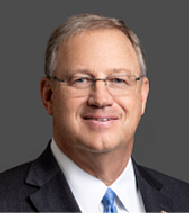

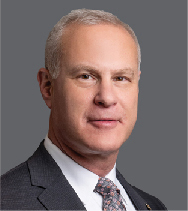
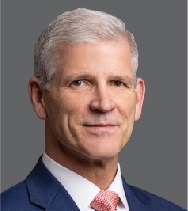
Role of the Compensation Committee67EXECUTIVE SUMMARY Named Executive Officers (“NEOs”)people are committed to achieving superior operational and financial performance which is assessed relative to rigorous goals that reflect a continuous improvement mindset. Consistent with our ‘pay for 2021 were:performance’ philosophy, a significant portion of NEO compensation is at risk and is only realized if we achieve performance goals aligned with the execution of our strategy and shareholder value creation.
Greg GarlandChairman andChief ExecutiveOfficer
Mark LashierPresident and ChiefOperating Officer
Kevin MitchellExecutive VicePresident, Finance andChief Financial Officer
Robert HermanExecutive VicePresident, Refining 
Tim RobertsExecutive VicePresident, Midstream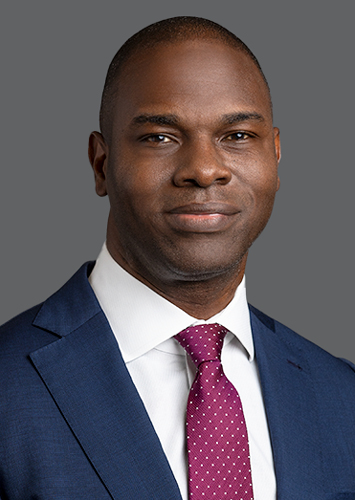
EXECUTIVE SUMMARY
Board values opportunitiesCompany’s significant outperformance relative to hear directly from our shareholders. Overpeers and the broader market over the past year is a testament to our shareholders’ confidence in our management team’s ability to execute on our strategic priorities and deliver on our commitments. The compensation program at Phillips 66 has been thoughtfully designed to cultivate success over the Chairlong term, and it has been a great honor to see that philosophy materialize in such a concrete way during my first year at the Company."Compensation Discussion and Analysis 49 The changes to the 2024 long-term incentive program put greater emphasis on performance, improve alignment with the shareholder experience and promote better "line of sight" for our executives. The changes to the 2024 VCIP are intended to drive continuous improvement at the segment level, and are responsive to shareholder feedback for more quantitative evaluation of our Lower Carbon / GHG Priorities performance, which the HRCC determined was appropriate in light of the Compensation Committee and I engaged with our shareholders, andmaturation of the committee has made changes to Phillips 66's executive compensation programs informed by the feedback we gathered.” Company's lower-carbon strategy.- Glenn Tilton, Lead Director and Member of the Compensation CommitteeOur Approach to Compensation and Governance50 Since our inception2012, our strategy is unchangedstock options, 25% in restricted stock units and we have operated with clear objectives50% in performance share unitsenable our high-performing workforce to execute our corporate strategy efficiently2023 Annualized Target Direct Compensation of $10,100,000. Unchanged from level and effectively, while remaining vigilantstructure set when he assumed the role in 2022focused on safety and operating excellence,50% in order to deliver profitable growth, enhance returns, and provide a secure, competitive and growing dividend. As a result, we have built a resilient company, positioned for long-term performance even in the midst of difficult market conditions.share unitsPay-For-Performance We Do…
We Do…Consistent with our philosophy that executive compensation should be linked to Company performance and directly aligned with shareholder value creation, a significant portion We Do Not…
We Do Not… Target the majority of NEO compensation
Target the majority of NEO compensation remainsto be performance based and at risk and based on Apply multiple performance metrics aligned with
Apply multiple performance metrics aligned with the execution of our corporate strategy.ShareholderEngagementAfter reviewing the results of the 2021 Annual Meeting, our Compensation Committee sought to better understand shareholder perspectives on our executive compensation programstrategy Cap maximum payouts for VCIP and
Cap maximum payouts for VCIP and practices. We have a well-established shareholder engagement program, including more in-depth conversations following the Annual Meeting to ensure a clear understanding of key considerations driving our shareholders' votes.ResponsiveChangesThe Compensation Committee leveraged specific insights from shareholders to build a set of potential executive compensation program changes that we discussed in depth with them in the fall of 2021. In those conversations, we solicited additional perspectives on our executive compensation practices and found that our shareholders strongly supported the proposed changes.41Stakeholder Engagement on 2021 Say-on-Pay Vote Outcome
“We integrate shareholder perspectives in the design and delivery of our executive compensation programs, which are linked to our strategy, align pay and performance, and help us attract and retain executives. In addition to evaluating our executive compensation program design, we reviewed and enhanced our disclosures to align with shareholder feedback and expectations.” – Marna Whittington, Chair, Human Resources and Compensation CommitteeResponding to the 2021 Say-on-Pay Vote OutcomeThe Compensation Committee viewed the results of the 2021 say-on-pay vote as an opportunity to have more in-depth conversations with shareholders to understand their perspectives on our executive compensation practices and programs, and the Company’s approach to GHG emissions reduction targets and Climate Lobbying Disclosures. We leveraged those valuable insights to help build a set of potential compensation programs changes for 2022. Following the 2021 Annual Meeting two separate rounds of engagement discussions took place, the first of which was in September 2021 and focused on our compensation program design, the relative degree of alignment between Company performance and rewards, and potential program enhancements in response to shareholder feedback. The second round of engagement discussions, which took place in November 2021, provided opportunity to discuss investor perspectives on climate and the Company’s approach to the energy transition, in addition to capturing any further perspectives regarding compensation matters.SPRING 2021Lead-Up to the2021 AnnualMeetingIn the lead-up to the 2021 Annual Meeting, we undertook a significant effort to speak with our shareholders and hear their feedback on our compensation program, among other topics of interest. We contacted 59% of shares outstanding and engaged with shareholders representing a combined 31% of shares outstanding. We leveraged those valuable insights to help build a set of potential compensation program changes for 2022.
SPRING 2021 Annual Meeting
SEPTEMBER 2021 Compensation-Focused Engagement:Gathered investor feedback on compensation programs and previewed potential enhancements
EvaluatingInvestor Feedback49% ofshares outstandingcontacted 40% ofshares outstandingengaged34% of shares outstandingengaged with Lead Director and Chairof the Compensation CommitteeThe Compensation Committee reviewed shareholder feedback and approved a slate of meaningful executive compensation program changes outlined on page 43.Shareholders were supportive of our proposed changes to our performance-based programs (PSP and VCIP), which were meaningful, and planned disclosure enhancements, including around goal-setting, metric selection, and peer group selection. See Taking Action in Response to Investor Feedback for additional detail. The feedback we heard directly informed the Compensation Committee’s decision-making regarding program changes for 2022.
NOVEMBER 2021 Follow Up Engagement:Solicited additional investor perspectives on a full range of ESG topicsFollowing the compensation-focused discussions, we held conversations with over 20 shareholders representing a combined 40% of outstanding shares to discuss the Company’s business and ESG strategy, continuing Phillips 66’s long-standing shareholder engagement program. Outreach in this round of engagement included nearly all investors contacted in the compensation-focused engagement, and because of this, we met with a number of investors twice in fall 2021. Shareholders were supportive of responsive actions taken on climate matters, including setting robust GHG emissions reduction targets and publishing a climate lobbying report.42 Phillips 66 2022 Proxy StatementTaking Action in Response to Investor Feedback The table below details feedback we heard from our shareholders and the actions the Compensation Committee took to address shareholders’ views on our executive compensation program. The changes implemented in 2021 reflect our Board’s strong commitment to shareholder engagement. What We HeardActions Taken in ResponseImplementedfor 2021Performance Year
Individual VCIPModifier●Individual VCIP modifier allows for too much discretion●Removed positive individual performance modifier from VCIP for all NEOs
Disclosureof RigorousPerformance Goals &Metric Selection●●Explain how performance goals are set each year to ensure goals remain rigorous even if targets decrease on absolute termsProvide more explanation around the weighting and selection of VCIP metrics and rationale for payouts●●Enhanced disclosures on goal setting, particularly where targets decrease on a year-over-year basisEnhanced disclosures of the weighting and selection of VCIP metrics and the rationale for payouts


ConsiderAbsolute TSR●Relative TSR drives 50% of the PSP, but there is no cap on payouts in the event of negative absolute TSR performance●Capped Cap payout at 100% on the TSR portion of the PSP if absolute TSR is negative
Cap payout at 100% on the TSR portion of the PSP if absolute TSR is negative
Rigor of Relative Require TSR
Require TSR Goal●Relative TSR pays at target for median performance●Require performance above the 50th percentile relative to peer group to achieve target payout Employ a “double trigger” for change in control severance benefits and equity award acceleration
Employ a “double trigger” for change in control severance benefits and equity award acceleration Include absolute and relative metrics in our LTI programs
Include absolute and relative metrics in our LTI programs Maintain robust stock ownership guidelines for executives — CEO and Executive Chairman 6x base salary; other NEOs 4x base salary
Maintain robust stock ownership guidelines for executives — CEO and Executive Chairman 6x base salary; other NEOs 4x base salary Balance, monitor and manage compensation risk through regular assessments and robust clawback provisions, including a new SEC-compliant clawback policy
Balance, monitor and manage compensation risk through regular assessments and robust clawback provisions, including a new SEC-compliant clawback policy Have extended vesting periods on stock awards, with a minimum one-year vesting period required for stock and stock option awards
Have extended vesting periods on stock awards, with a minimum one-year vesting period required for stock and stock option awards Maintain a fully independent compensation committee
Maintain a fully independent compensation committee Retain an independent compensation consultant
Retain an independent compensation consultant Hold an annual Say-on-Pay vote and consider shareholder feedback in the design of our compensation program
Hold an annual Say-on-Pay vote and consider shareholder feedback in the design of our compensation programChanged Provide excise tax gross-ups to our NEOs under our CICSP
Provide excise tax gross-ups to our NEOs under our CICSP Reprice stock options without shareholder approval
Reprice stock options without shareholder approval Price stock option exercise prices below grant date fair market value
Price stock option exercise prices below grant date fair market value Allow share recycling for
Allow share recycling for PSP 2022 - 2024stock options under our equity plan Include evergreen provisions in our active equity plans
Include evergreen provisions in our active equity plans Allow hedging or pledging of Company stock
Allow hedging or pledging of Company stock Pay dividends during the performance period on unearned PSPs
Pay dividends during the performance period on unearned PSPs Allow transfer of equity awards (except in the case of death)
Allow transfer of equity awards (except in the case of death) Provide separate supplemental executive retirement benefits for individual NEOs
Provide separate supplemental executive retirement benefits for individual NEOs Maintain individual change-in-control agreements
Maintain individual change-in-control agreements Have an employment agreement with the CEO
Have an employment agreement with the CEO Provide excessive perquisites
Provide excessive perquisites Provide individual performance modifier for VCIP for our executive officers
Provide individual performance modifier for VCIP for our executive officersAdjustmentsto Metrics●Limited disclosure of rationale for significant ROCE adjustment in FY20●Enhanced disclosures in proxy of rationale for any adjustments to financial results
Compensation Discussion and Analysis 51 
Selection &Rationale●Provide more explanation for the use of two peer groups and how the peers are determined●Enhanced disclosure about the peer group utilization and peer selection

“The compensation programs for our senior officers reflect the approach we have taken throughout the Company: we set well-defined goals that drive execution of our strategy and reward results.”– Sonya Reed, SVP, Human Resources and Corporate CommunicationsConsistent withphilosophy that executiveuse of performance- and equity-based awards, the compensation berealized by our executives is directly linked to our performance. In order for NEOs to earn and sustain competitive levels of compensation, the Company performancemust meet its strategic objectives, perform well relative to peers, and aligned with shareholder value creation, thedeliver market-competitive returns to shareholders.ensures that a significant portion of NEO compensation is 90% at risk and based on72% performance metrics tied to our corporate strategy.based. Based on its evaluation of performance, the Compensation CommitteeHRCC has the authority to reduce and even awardCompensation Discussion and Analysis 43nothing for,or eliminate the performance-based payouts.payouts that may be awarded under the PSP and VCIP. Stock options can expire with zero value if the CompanyCompany's stock price does not appreciate above the grant date price over the 10-year term of the options. RSUs may lose value depending on stock price performance. Therefore, for NEOs to earn and sustain competitive compensation, the Company must meet its strategic objectives, perform well relative to peers, and deliver market-competitive returns to shareholders.Compensation Program Mix The CEO’s target compensation mix is 90% at risk and 71% performance-based. The average target mix for the other NEOs is 84%83% at risk and 67%66% performance-based. Further, LTI awards make up 74% of the CEO and 69% of other NEOs target compensation mix. The target mix of the compensation program elements for the CEO and other NEOs is shown below. The charts below outline the relative size, in percentage terms, of each element of the 2023 annualized target compensation.Key Elements of Pay CEO Delivered via Performance Drivers (and Weightings)Weightings Base Salary Cash ●






Annual Incentive Variable Cash Incentive Program (VCIP) 50% Operational Sustainability 

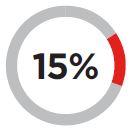

●●●50% Financial Sustainability ●●Adjusted Controllable Costs (10%)Long-Term Incentives Long-TermIncentives (LTI)●Return on Capital Employed (50%)●



3-year performance periodOption Program(1)●Unit (RSU) Program
Units (RSUs) vestvesting●(1)The Compensation Committee believes that stock options are inherently performance-based, as options have no initial value and grantees only realize benefits if the value of our stock increases after the date of grant. This practice is intended to ensure that the interests of our NEOs are aligned with those of our shareholders.44 Phillips 66 2022 Proxy Statement2021 Operating, Financial and Company Highlights Demonstrating Resilience in the Face of Challenging Market Conditions52 Our improved performance results2021 reflectPhillips 66. We made significant progress toward achieving our management team’s significant effortsstrategic priority targets and strategic decisionsrealizing our vision of being the leading integrated downstream energy provider. We continued to navigate the current market environment. Although the pandemic challenged oursee strong operational and financial environment, we demonstrated our resilience asperformance in 2023 across a company. Duringrange of different measures. We are proud to have maintained industry-leading personal safety performance in 2023, with injury rates among the past two years, we maintained our focus on operating excellence, while also acting swiftly to improve liquidity and manage controllable costs, and as a result, we have returned to profitability. In 2021, we strengthened our balance sheet, leveragedlowest in the valueCompany's history.diversestrategy. Our TSR was 33% during the year, and we increased our quarterly dividend by 8%. Our diversified and integrated portfolio delivered strong returns on capital employed, bolstered by our commitment to disciplined capital allocation. Our average return on capital employed since our formation in 2012 was 13% as of year-end, almost double our cost of capital. Our TSR since inception reflects the cyclical nature of our industry and advanced major projects, allthe resilience of our business over the long term. The diversity of our portfolio provides us with a focusthe unique advantage to maximize value throughout the commodity cycles.COMBINED TOTAL RECORDABLE RATE (TRR) TIER 1 AND 2 PROCESS SAFETY EVENT RATE 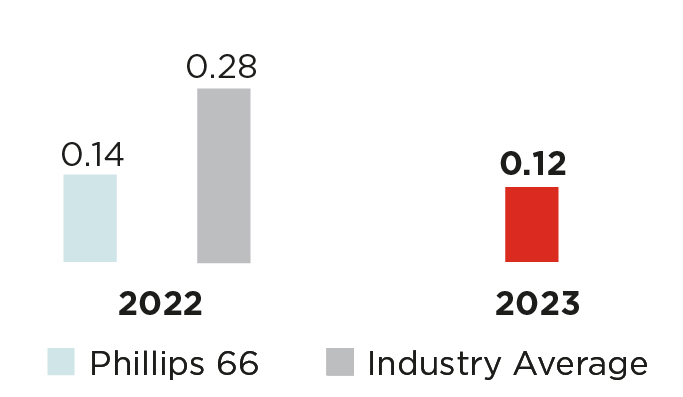
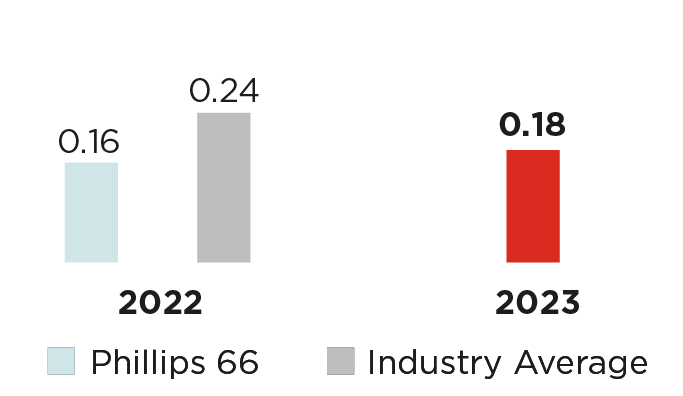
NET INCOME ($MM) ($MM) (%) 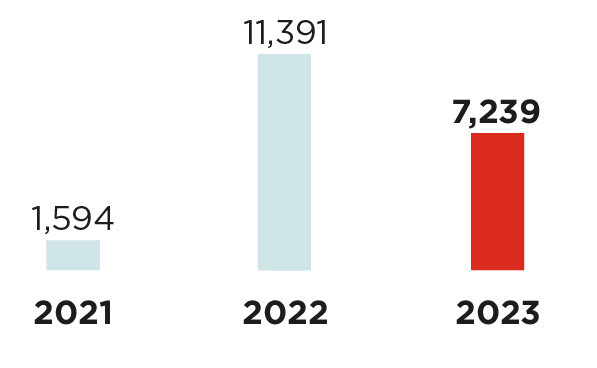
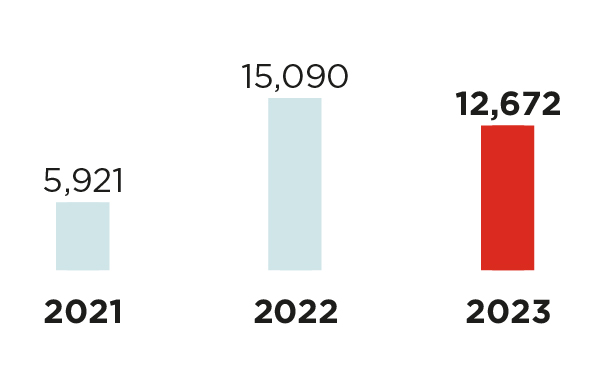
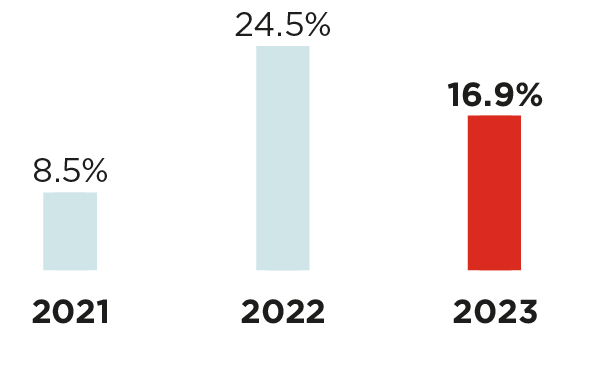

lower-carbon future.Our 2021 results, illustrated bysimple average basis using the blue bars, build2023-2025 performance peer group . Dividends assumed to be reinvested in common stock. Phillips 66's common stock initiated trading on our sustained operating and financial performance over the past years.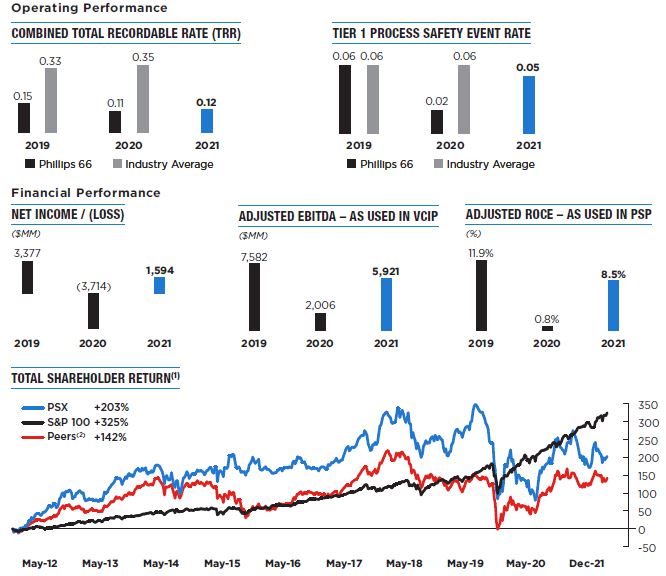
(1)Dividends assumed to be reinvested in stock. Source: Bloomberg.(2)Peer average includes Performance Peer Group for 2021(3)Company stock initiated trading in May 2012.Compensation Discussion and Analysis 4553 Company Performance
Operating Excellence●Maintained strong industry-leading personal safety performance; injury rate of 0.12 is second best in Company history●Best-ever Tier 1 + Tier 2 combined process safety event rate at 0.13●Advanced sustainability efforts: Established greenhouse gas emissions intensity reduction targets for Scope 1, 2, and 3●On target to achieve AdvantEdge66 program value targets; unlocked value through digital transformation 
Growth●Midstream delivered record pre-tax income; completed C2G Ethane Pipeline project; advancing construction of Sweeny Frac 4●Reached agreement to buy-in public ownership of Phillips 66 Partners LP●Chemicals delivered record pre-tax income; continued to advance USGC II and RLPP●Began production of renewable diesel at the San Francisco Refinery●Developed Emerging Energy strategy, made investments in renewable feedstocks and battery value chain
Returns●Marketing & Specialties delivered record pre-tax income; acquired approximately 200 sites via US JV, upgraded over 1,000 sites globally●Converted almost 600 California marketing sites to sell Renewable Diesel (RD), acquired a mobile RD refueler●Expanded roll out of the Value Chain Supply Optimization engine to enhance general interest decision making
Distributions●Returned $1.6 billion in dividends to shareholders●Increased dividend by 2%; first increase since the beginning of the pandemic and the ninth consecutive year with a higher annual dividend payout●Paid down $1.5 billion of debt, progressing towards pre-pandemic debt levels
High-Performing Organization●Improvements in employee engagement, manager effectiveness and performance enablement; established baseline metrics for Our Energy In Action and inclusive culture●Advanced leader-led I&D efforts by increasing engagement and transparency through metrics that will drive sustainable results●Recognized externally as a great place to work●Continued to support the local communities where we operate through Company and employee-led volunteerism and contributions46 Phillips 66 2022 Proxy Statement2021 Compensation Decisions 2019-2021 PayoutAligning Performance Outcomes and Executive Pay with Shareholder ExperienceCompany’sPSP awards directly link our performance against rigorous targets, bothon an absolute and relative reflect our commitmentbasis to link pay and performance of our NEOs with the experience of our shareholders.% OF TARGET COMPENSATIONCEO
Other NEOs
Results under our long-term program, reflect the challenging environment that existed during the 2019-2021 performance period — for both our shareholders and our Company. As a result, a below-target payout of 61% was earned.PayoutThresholdTarget100% PayoutMaximumReturn on Capital Employed (50% Weighting)
Absolute ROCE (25%)Relative ROCE (25%)Total Shareholder Return (50% Weighting)TSR2019-2021 REALIZED VALUE
56%of Initial Target ValueDue to the combined impact of the below target payout of the PSP program and the share price depreciation over the 3-year performance period, our NEOs realized 56% of the initial target value.2021 - 2023 PSP Metrics and Weightings Performance Result Weight Payout Above Maximum 50% 200% 7th out of 14 peers 50% 100% Total 2021 - 2023 PSP Payout 150% Compensation Discussion and Analysis 4720212023 VCIP PayoutDemonstrating Resilience and Delivering Improved Performance2021,2023, we remained focused on our operational and financial performance while pursuing returns-focused lower-carbon projects aligned with our long-term strategy. Overall payout of the 2023 VCIP reflected our strong operational and operatingfinancial performance including navigating the pandemic and thinking long-term about the energy transition. While we realized a strong recovery year, actual results were scrutinized relative to prior year performance, and negative discretion was applied to the payout. Theacross our established metrics. There is no individual performance modifier for all NEOs was removed in 2021 based on shareholder feedback, therefore, noexecutive officers under the 2023 VCIP. No additional compensation above companythe formulaic payout was deliveredawarded.NEOs.only metric that was earned below target.% OF TARGET COMPENSATIONPayout CEO
Other NEOs
Threshold Our financial and operating performance in 2021 resulted in a 155% of target payout of our VCIP due to strong safety and operating excellence performance that positioned us to deliver strong financial performance as market conditions improved.Target
100% PayoutPayoutThresholdTarget100% PayoutMaximum

(1) 48 Phillips 66 2022 Proxy Statement(1)Peer Group Overview Peer Group Selection & RationaleDuesizenearest GAAP financial measures.complexity of our Company and diversification of assets, we utilize both (1) a compensation peer group and (2) afor more details regarding the Company's performance peer group. The Compensation Committee thoughtfully selectsrelative to the peers in each peer group, evaluates their inclusion2023 VCIP performance metrics, seeVariable Cash Incentive Program (VCIP)- 2023 Payoutbeginning on an annual basis, and makes adjustments as necessary.page 63.2021 COMPENSATION PEER GROUP2019 - 2021 PERFORMANCE PEER GROUPUsed to evaluate and determine compensation levels for our NEOs, including base salary levels and targets for our annual bonus and LTI programs54Used to evaluate our relative ROCE and relative TSR performance for our 2019 – 2021 Performance Share ProgramCompanies● Archer-Daniels-Midland Company● Chevron Corporation● ConocoPhillips● Dow Inc.● Exxon Mobil Corporation● Ford Motor Company● General Motors Company● Halliburton Company● Honeywell International Inc.● LyondellBasell Industries N.V.● Marathon Petroleum Corporation● Occidental Petroleum Corporation● Schlumberger Limited● The Williams Companies, Inc.● Valero Energy CorporationCompaniesRefining and Marketing● Delek US Holdings, Inc.● HollyFrontier Corporation● Marathon Petroleum Corporation● PBF Energy Inc.● Valero Energy CorporationMidstream● Enterprise Products Partners L.P.● ONEOK, Inc.● Targa Resources Corp.Chemicals● Celanese Corporation● Eastman Chemical Company● LyondellBasell Industries N.V.● Huntsman Corporation● Westlake CorporationCriteria for SelectionOur compensation peer group includes companies that are comparable to Phillips 66 based on three primary criteria – assets, market capitalization, and business operations. Revenue is an additional, secondary criterion. The compensation peer group primarily consists of large companies with which we compete for talent. While some of our compensation peers fall outside our industry, the Compensation Committee believes their size, significant capital investments, and similarly complex international operations make them appropriate peers against which to benchmark our compensation levels and practices. At the time the compensation peer group was thoughtfully determined, Phillips 66 was at the 43rd percentile in assets, 63rd percentile in market value, and 65th percentile in revenue.Criteria for SelectionPhillips 66 is uniquely positioned in the energy industry, with a large refining and marketing base, a growing midstream/NGL business and significant petrochemical operations. To reflect our unique portfolio of assets, we include companies operating in each of our three major segments – Refining and Marketing, Midstream and Chemicals. The performance peer group is used to assess relative ROCE and TSR performance. We believe that our performance peer group is representative of the companies that investors use for relative performance comparisons.In addition to our performance peer group, we include the S&P 100 Index in the assessment of our relative TSR performance. The Compensation Committee believes the S&P 100 is an appropriate comparison for performance purposes as the index reflects companies with which we compete for capital in the broader market.Compensation Discussion and Analysis 49EXECUTIVE COMPENSATION PROGRAM DETAILS Total Rewards Philosophy and Guiding Principles form the foundation upon which our programs are developed in alignmentaligned with our corporate vision, strategy and values. The Compensation CommitteeHRCC regularly reviews our Philosophy and Guiding Principles. Our programs are designed to attract, retain, develop and reward a high-performing workforce to successfully execute our corporate strategy by:●Compensating all employees equitably regardless of race, gender, or other personal characteristics● a long-term perspective●Providing competitive Total Rewards aligned with market practice●Responding to the priorities of our evolving workforceBase Salary % OF TARGET COMPENSATIONCEO
Other NEOs
Base salary is designed to provide a competitive and fixed rate of pay recognizing employees’ different levels of responsibility and performance. As the majority of our NEO compensation is performance-based and tied to long-term programs, base salary represents a less significant component of total compensation. In setting each NEO’s base salary, the Compensation Committee considers factors including, but not limited to, the responsibility level for the position held, market data from the compensation peer group for comparable roles, experience and expertise, individual performance and business results.Below is a summary of the annualized base salary for each NEO for 2021. Because these amounts reflect each NEO’s annualized salary as of the dates indicated, this information may vary from the information provided in the Summary Compensation Table, which reflects actual base salary earnings in 2021, including the effect of salary changes during the year.Name Salary as of
1/1/2021
($) Salary as of
12/31/2021
($)Greg Garland 1,675,008 1,675,008 (1) Mark Lashier N/A 1,100,000 Kevin Mitchell 903,432 903,432 Robert Herman 870,432 870,432 Tim Roberts 887,424 887,424 (1)Mr. Garland’s base salary has remained unchanged since March 1, 2017.The Executive Leadership Team deferred the annual merit increase for all eligible employees in 2021 in response to challenginglong-term perspectiveconditions duepracticeongoing impactspriorities of the COVID-19 pandemic.50 Phillips 66 2022 Proxy Statement2021 Target Setting Methodology Compensation CommitteeHRCC establishes targets and goals that demand strong performance relative to peers, are aligned with corporate strategy, and protectcreate and createprotect shareholder value. In addition, our compensation program is used to educate, reinforce and focus our employees on areas important to key stakeholders — shareholders, customers, directors, management and our local communities.operatingoperational and financial environment, so targets may declinevary year-over-year and relative to prior year performance while still representingmaintaining rigor and driving a comparable level of challengecontinuous improvement mindset for our executive team.EMPHASIZING THE IMPORTANCE OF RETURNS – EMBEDDING WACC IN OUR TARGET SETTING PROCESSWe use Weighted Average Cost of Capital (WACC) as part of our target-setting practice in our VCIP to set the Adjusted EBITDA targets and in our PSP to set the Adjusted ROCE targets. WACC represents our blended cost of capital across our businesses. Performance or results above our WACC reflect the ability of our executives to effectively manage capital and capture market opportunities, which results in value creation for our shareholders. Our executives must deliver results that are at least 1.5 percentage points above our WACC to receive a target payout in either the EBITDA metric in VCIP or the ROCE metric in PSP.Compensation Discussion and Analysis 5155 Long-Term Incentives – Program Design 

Base salary is designed to provide a competitive and fixed rate of pay recognizing employees’ different levels of responsibility and performance. As the majority of our NEO compensation is performance based and tied to long-term programs, base salary represents a less significant component of total compensation. Name Salary as of
1/1/2023
($)Salary as of
12/31/2023
($)Mark Lashier 1,500,000 1,600,000 Greg Garland 1,000,000 1,000,000 Kevin Mitchell 961,704 995,363 Brian Mandell 820,050 856,952 Tim Roberts 940,226 977,835 56 % OF TARGET COMPENSATION 




50% 25% 25% 52 Phillips 66 2022 Proxy StatementPerformance Share Program - Metrics(PSP)shares may be adjusted during the performance period for promotions that occur during the performance period. 

Compensation Discussion and Analysis 57 % OF TARGET COMPENSATION 



The performance metrics used for the 2021-2023 PSP 2019-2021 are after-taxnon-GAAP absolute adjusted return on capital employed (ROCE)(Adjusted PSP ROCE) and relative total shareholder return (TSR) based on a 20-trading day average closing price.
Threshold 25% 25% 50% Compensation Discussion3.4% Delivers sustaining capital and Analysis 53Performance Share Program – 2019 to 2021 Payout dividend payments over 3-year performance period Target 8.2% Delivers WACC +1.5% over 3-year performance period Maximum 9.7% Delivers WACC +3.0% over 3-year performance period Aligned with peer practices, we have historically adjusted ROCE for “special items” that are not representative of our underlying operating performance. The HRCC carefully evaluates all such adjustments to understand the impacts the adjustment would have on compensation outcomes and how the item factored into the Company’s operating and financial outcomes. 
Threshold 15th percentile of Performance Peers (rank of 12 out of our 14 peers) Target 54th percentile of Performance Peers (rank of 7 out of 14 peers) Maximum 92nd percentile of Performance Peers (rank of 1 or 2 out of 14 peers) Stock price depreciation over the performance period, coupled with the 61% performance multiplier, resulted in a realized value of 56% of the initial target value, consistent with our pay for performance philosophy. This represents the lowest payout in Company history and reflects the challenging market conditions in which we have operated for the past two years.58 Compensation CommitteeHRCC considered the following results when approving the payout of 61%the 2021-2023 PSP at 150% of target.RELATIVE ROCE (25% WEIGHTING)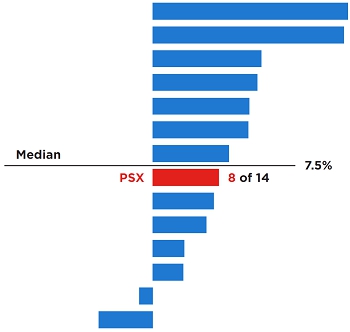
RELATIVE TSR (50% WEIGHTING)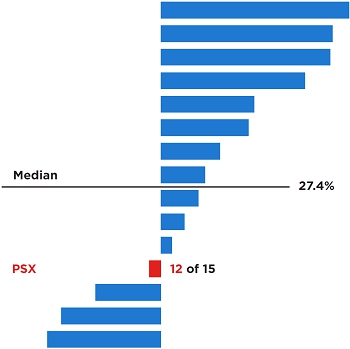
ABSOLUTE ROCE (25% WEIGHTING)
PSP 2019-2021 PAYOUTMetric Weight Payout Relative ROCE 25% 86% Absolute ROCE 25% 79% Relative TSR 50% 40% Payout (as a percent of target) 61% Key HighlightsRETURN ON CAPITAL EMPLOYED●The Compensation Committee determined that it was appropriate to increase the Company’s 2021 ROCE earnings used in the ROCE calculations by $1 billion after-tax. This increase primarily relates to removing the after-tax impact of asset impairment charges partially offset by removing the after-tax unrealized increase in value of our investment in NOVONIX. ROCE, as used in our PSP program, is a non-GAAP financial measure.54 Phillips 66 2022 Proxy StatementRELATIVE TSR●Relative TSR performance for the three-year performance period was -6.1% and 12th of 15 peers, including 13 peer companies, the S&P 100 Index and Phillips 66. This resulted in a payout of 40% of target for relative TSR performance, weighted at 50%.The Compensation Committee approved payouts for our NEOs forthe 2021-2023 PSP 2019-2021. The payment was made in February 20222024, and payout of the award is described further below and in the footnotes to the 2021 - 2023 PSP Metrics and Weightings Performance Result Weight Payout Above Maximum 50% 200% 7th out of 14 peers 50% 100% Total 2021 - 2023 PSP Payout 150% Adjusted PSP ROCE Performance Metric Threshold (3.4%) Target (8.2%) Maximum (9.7%) Adjusted PSP ROCE 

Compensation Discussion and Analysis 59  In 2023, we narrowed the potential adjustment for target PSP award grants based on individual performance from +/-50% to +/-30%, which aligns with our RSU and stock option grants
In 2023, we narrowed the potential adjustment for target PSP award grants based on individual performance from +/-50% to +/-30%, which aligns with our RSU and stock option grants Beginning in 2024, we eliminated stock options as a component of our LTI program and increased the weighting of PSPs from 50% to 70%, and RSUs from 25% to 30% of the LTI program
Beginning in 2024, we eliminated stock options as a component of our LTI program and increased the weighting of PSPs from 50% to 70%, and RSUs from 25% to 30% of the LTI program This change in our LTI program provides better “line of sight” to executives and places greater focus on relative TSR and absolute ROCE performance
This change in our LTI program provides better “line of sight” to executives and places greater focus on relative TSR and absolute ROCE performanceSummary Compensation Table.New PSP Developments for 2021
Capped payout at 100% on TSR portion if absolute TSR is negativeNew PSP Developments for 2022
Based on shareholder input and in order to create more challenging goals, starting with PSP 2022-2024, we will require relative TSR performance above the 50th percentile relative to peer group to achieve target payout
For Absolute ROCE, threshold achievement level will be set as historical average ROCE of 3.5% to cover sustaining capital & dividends
Target and maximum achievement levels for Absolute ROCE will be set at 1.5 and 3.0 percentage points above historical average WACC of 7.0%
The historical average WACC will be reviewed on an annual basis by senior management to determine if it needs to be adjusted for current market conditionsLong-Term Incentives The Compensation CommitteeNEOs. After considering individual achievements, the HRCC approved the following LTI target award values for the NEOs for 2021. The Compensation Committee considered the individual performance of each NEO as outlined above when determining the target values.2023. These values may not match the accounting values presented in the Name PSP
2021-2023
($) Stock
Options
($) RSUs
($) Total
Target(1)
($)Greg Garland 6,281,280 3,140,640 3,140,640 12,562,560 Mark Lashier 3,025,000 1,512,500 1,512,500 6,050,000 Kevin Mitchell 2,493,472 1,038,947 1,246,736 4,779,155 Robert Herman 1,880,133 783,389 940,067 3,603,589 Tim Roberts 1,916,836 798,682 958,418 3,673,936 Name
($)Stock
Options
($)RSUs
($)
Target(1)
($)Mark Lashier 6,000,000 3,000,000 3,000,000 12,000,000 Greg Garland 3,750,000 1,875,000 1,875,000 7,500,000 Kevin Mitchell 2,433,110 1,216,555 1,216,555 4,866,220 Brian Mandell 1,771,308 885,654 885,654 3,542,616 Tim Roberts 2,030,888 1,015,444 1,015,444 4,061,776 (1)60PSP 2021 – 2023 and RSU targets include individual adjustments for Mr. Mitchell (+20%), Mr. Herman (+20%), and Mr. Roberts (+20%). The Compensation Committee did not approve any adjustments to stock option targets. Mr. Garland’s LTI target decreased approximately $800,000 or 5% in 2021 to better align with our compensation peer group and the challenging market conditions.Compensation Discussion and Analysis 55Variable Cash Incentive Program (VCIP) – Program Design % OF TARGET COMPENSATION 



The VCIP, which is our annual incentive program, is designed to provide variabilitymotivate and differentiation based on corporate performance. Through ourreward for exceptional operational and financial metrics, we designed our VCIP program to align annual awards with shareholder interestsperformance. The HRCC reviews and execution of our corporate strategy. We do not tie NEO VCIP awards toapproves the performance goals annually to ensure these are rigorous and incorporate a mindset of any individual business unit. We believe this structure serves the best interests of shareholderscontinuous improvement. The performance measures are equally weighted between operational and financial goals as it promotes collaboration across the organization.strong operational performance drives financial performance.which isdefined as base salary earned during the year, are multiplied by a VCIP target percentage that is based on each NEO’s salary grade level to derive the NEO’s target VCIP award. At the end of the performance period, the Compensation CommitteeHRCC reviews the Company’s performance against established metrics to determine the Corporatepayout percentage, which may range from 0% to 200% of target.Percentage. This percentage is based on a mix of operational and financial metrics, the details and weighting of which are described below. The Compensation Committee can award a Corporate Payout Percentage of zero up to the maximum of 200%.Formulax×x×Corporate= Weighting 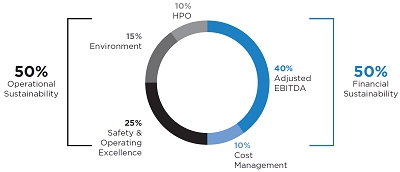
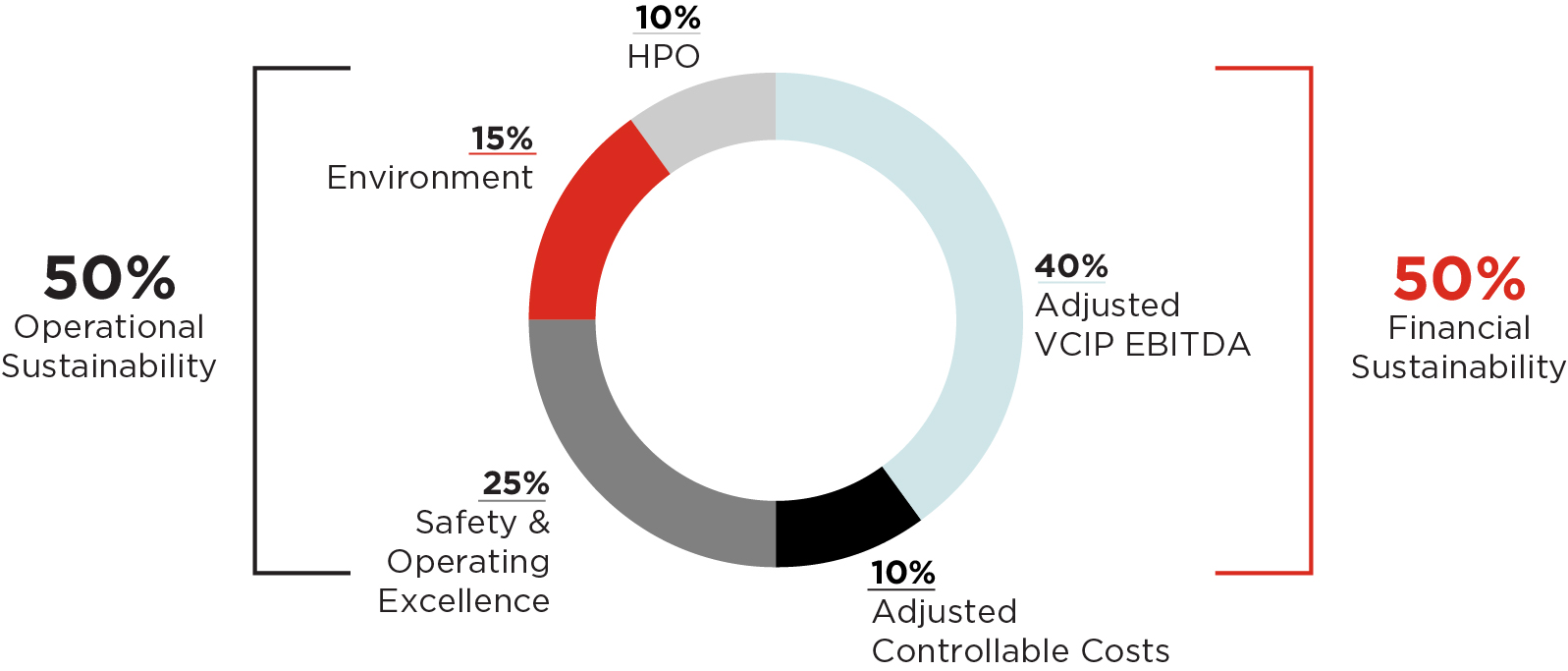
56 Phillips 66 2022 Proxy StatementVariable Cash Incentive Program (VCIP) – Metrics and Targets Operational Sustainability 50%: Half of our VCIP is based on Operational performance because strong safety, reliability and operating excellence are fundamental to protecting shareholder value. It also enables the Company to maximize market opportunities, generate higher returns and create shareholder value.25% 15% 10% Compensation Discussion and Analysis 5761 Financial Sustainability 50%: The other half of our VCIP is based on Financial performance to ensure our executives effectively manage costs and deliver financial results above our WACC40% 10% 58 Phillips 66 2022 Proxy StatementVariable Cash Incentive Program (VCIP) – 2021 Payout 


The formulaic62 
Threshold $6.060 billion Target $5.772 billion Maximum $5.483 billion The 2023 Adjusted VCIP Controllable Costs target excludes utilities and turnaround expenses, as well as other costs that are not within management's control, and includes cost reductions realized as part of our business transformation effort. 
Threshold $4.102 billion Target Adjusted VCIP EBITDA equivalent to ROCE of WACC + 1.5 percentage points ($7.170 billion) Maximum Adjusted VCIP EBITDA equivalent to ROCE of WACC + 3.0 percentage points ($8.091 billion) individual metrics less negative discretion appliedintegration of DCP's operations in 2023, our performance goals for the 2023 VCIP incorporate DCP.155%. Weight Threshold Target Maximum 2021
Actual Formulaic
Payout Final
Payout
(Discretion
Applied) 
Safety & Operating Excellence Total Recordable Rate (TRR) 5% 0.32 0.21 0.16 0.12 200% 180% Lost Workday Case Rate (LWCR) 5% 0.10 0.06 0.04 0.04 200% 150% Process Safety Event Rate – Tier 1 5% 0.06 0.05 0.04 0.05 100% 80% Availability 10% 93.9% 95.4% 96.9% 96.0% 140% 140% Environment Low Carbon Priorities 5% - - - - 100% 100% GHG Priorities �� 5% - - - - 100% 100% Environmental Events 5% < 121 114 < 105 115 93% 93% High Performing Organization 10% - - - - 175% 175% 
Adjusted Controllable Costs($MM) 10% $6,946 $6,743 $6,541 $6,566 188% 150% Adjusted EBITDA ($MM) 40% $3,468 $5,389 $6,027 $5,921 183% 183% TOTAL 163% 155% Key Highlights($MM) Weight Threshold Target Maximum 2023 Actual
Payout
Safety & Operating Excellence Total Recordable Rate (TRR) 7.5 % 0.18 0.16 0.13 0.12 150 % Process Safety Event Rate – Tier 1 & 2 7.5 % 0.26 0.21 0.16 0.18 160 % Asset Availability 10 % 94.6 % 96.0 % 97.4 % 98.0 % 200 % Environment Lower-Carbon / GHG Priorities 10 % - - - - 100 % Environmental Performance 5 % 0.131 0.114 0.097 0.083 200 % High-Performing Organization 10 % - - - - 125 % 
10 % $6,060 $5,772 $5,483 $6,024 56 % 40 % $4,102 $7,170 $8,091 $12,672 200 % TOTAL 161 % Compensation Discussion and Analysis 63 ●Total Recordable Rate: Performance of 0.12 was the second best in Company history. Negative discretion was applied given performance was impaired versus 2020.Payout●Metric and WeightingLost Workday Case Rate: Negative discretion was applied given performance was impaired versus 2020.ThresholdTarget Maximum ●Process Safety Event Rate: Negative discretion was applied given performance was impaired versus 2020.PayoutThresholdTarget100% PayoutMaximumSafety & Operating Excellence (25%) 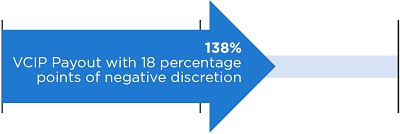

Compensation Discussion and Analysis 59ENVIRONMENTLow CarbonPriorities: In 2021, we progressed efforts in support of the energy transition and a low-carbon future including: establishingPriorities: We have set targets to reduce our Emerging Energy organization and developing its long-term strategy, executing several investment, supply and collaboration arrangements for key initiatives (e.g. Shell Rock, NOVONIX, Southwest Airlines and British Airways), progressing Rodeo Renewed activities, progressing UK renewable activities, and building renewable feedstock supply and product placement capability, and setting GHG emission intensity reduction targets for 2030 for Scope 1, 2 and 3 emissions.emissions, and in 2023, we progressed our lower-carbon initiatives by advancing our projects in renewable fuels, including Rodeo Renewed, and progressed projects in support of carbon capture and asset decarbonization through increased energy efficiency and increased use of renewable power sources.Payout Metric and Weighting Threshold Target 100% PayoutMaximum Environment (15%) 
HIGH-PERFORMING ORGANIZATION●Progressed several AdvantEdge66 initiatives with multiple successful go-lives in Digital Operations and Maintenance
●Advanced I&D efforts including Executive I&D Council, Organization Assessments, and ERG expansionPayout ●Metric and WeightingPublished inaugural Human Capital Management Report, Lobbying Activities Report and enhanced Sustainability ReportThresholdTarget Maximum ●Received external recognition as a great place to workPayoutThresholdTarget100% PayoutMaximumHigh-Performing Organization (10%) 
ADJUSTED CONTROLLABLE COSTS●In 2021, Adjusted Controllable Costs were 3% improved versus our target but above 2020 levels. As a result, negative discretion was applied.
●Adjusted Controllable Costs as used in VCIP is a non-GAAP financial measure.64 Payout Metric and Weighting Threshold Target
100% PayoutMaximum Adjusted VCIP Controllable Costs (10%) 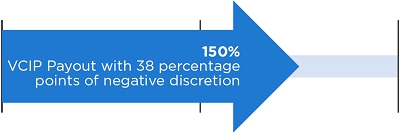
60 Phillips 66 2022 Proxy Statement
ADJUSTED EBITDA●In 2021, despite challenging market conditions for our industry, we achieved record adjusted EBITDA in Midstream, Marketing & Specialties, and Chemicals.●Adjusted EBITDA includes a $370 million downward adjustment attributable to removing the unrealized increase in value of our investment in NOVONIX as part of our Emerging Energy strategy.Payout ●Metric and WeightingAdjusted EBITDA used for VCIP is a non-GAAP financial measure.Threshold Target
100% PayoutPayoutMaximum ThresholdTarget100% PayoutMaximumAdjusted VCIP EBITDA (40%) 

2021
Removed positive individual performance modifier for all NEOsNew VCIP Developments for 2022
The corporate metrics used2024:VCIP will continuetarget setting approach for our Operational and Environmental metrics to reflect 50% operational sustainability metricsincrease their rigor and 50% financial sustainability metrics, but the Compensation Committee has approved changesobjectivity to the individual metric weightings to reinforce our commitment to best-in-class safety and achievement of low-carbon initiatives:
Within the elevate performance.Excellence component, Total Recordable RateExcellence: In setting the targets, we adopted the API recommended practice for the discrete segments of our operations – API 754 for Refining, Plants & Terminals and Process Safety Event RateAPI 1186 for Pipelines. This will now each be weighted at 7.5% of the total VCIP,enable us to set appropriate targets and Process Safety Event Ratebetter measure performance. Targets are based on historical performance and will include both Tier 1increase in rigor over time to drive continuous improvement.Tier 2 eventsmaximum across three performance categories: greenhouse gas intensity reductions, lower-carbon intensity investments and project ideation.
GHG Priorities and Low Carbon Priorities will be combined into a singular metric weighted at 10% to properly reflect how the Company progresses its low carbon initiatives (Agency Reportable Environmental Events will remain at 5% weighting, for a total of 15% Environmental Metrics)Totalpayoutspayout for each of our NEOs areis shown in the table below.Name 2021 Eligible
Earnings
($) Target VCIP
Percentage
(%) Corporate
Payout
Percentage
(%) Total
Payout
($)Greg Garland 1,675,008 160% 155% 4,154,020 Mark Lashier 825,000 110% 155% 1,406,625 Kevin Mitchell 903,432 100% 155% 1,400,320 Robert Herman 870,432 90% 155% 1,214,253 Tim Roberts 887,424 90% 155% 1,237,956 Name
EarningsTarget VCIP
Percentage
(%)
Percentage
Payout(a) (b) (c) (d) = (a)*(b)*(c) 1,583,333 158 % 161 % 4,036,181 Greg Garland 1,000,000 160 % 161 % 2,576,000 Kevin Mitchell 989,753 100 % 161 % 1,593,503 Brian Mandell 850,802 90 % 161 % 1,232,812 Tim Roberts 971,567 90 % 161 % 1,407,800 Compensation Discussion and Analysis 6165 Authority and
Responsibility of the HRCC

HRCC Oversight 

A significant portion66 CEO pay is deliveredcontinuous improvement in long-term incentives, which are designedexercising its responsibilities. To that end, the HRCC:tie share pricethe Board.achievementeffectiveness, and seeks ideas to improve its processes and oversight.Independent
Compensation
Consultantlong-term financial goals. Mr. Garland’s payCompany and diversification of assets, the HRCC utilizes both (1) a compensation peer group and (2) a performance peer group. The HRCC thoughtfully selects the peers in each peer group, evaluates their inclusion on an annual basis, and makes adjustments as reported in the Summary Compensation Table (“SCT”) reflects the accounting value of long-term incentives at the time of grant and not the actual value received from these grants. When evaluatingnecessary. The HRCC uses the compensation program each year,peer group to evaluate and determine compensation levels for our NEOs, including base salary levels and targets for our annual bonus and LTI programs. The HRCC uses the Compensation Committee reviews outstanding awards and the value earnedperformance peer group to evaluate our relative TSR performance under the long-term incentive program in prior periods to confirm that the payouts are aligned with performance and intended incentives. As such, we believe it is useful to compare Mr. Garland’s “Adjusted SCT Pay” in the context of his “Realized Pay” to provide a clear pictureour PSP program. The criteria for selection of the value being delivered to Mr. Garland and how it relates to Company performance.For purposes ofcompanies in each peer group are explained on the information in this section, we define:●Compensation Discussion and Analysis “Adjusted SCT Pay”672021 - 2023 PERFORMANCE PEER GROUP Used to evaluate and determine compensation levels for our NEOs, including base salary levels and targets for our annual bonus and LTI programs Used to evaluate our relative TSR performance for our 2021 – 2023 Performance Share Program compensation disclosedindex reflects companies with which we compete for capital in the Summary Compensation Table, adjusted to exclude “Changes in Pension Value and Nonqualified Deferred Compensation Earnings” and “Other Compensation.”broader market.●Realized Pay” assum of (a) base salary and VCIP paid; (b)2021-2023 performance peer group from the amount reported as W-2 taxable earningspeer group for the vesting of RSUs, exercise of any stock options, and vesting of PSPs with2020-2022 performance periods that endedperiod.applicable year (i.e., PSP 2017-2019 for 2019, PSP 2018-2020 for 2020, and PSP 2019-2021 for 2021).reduction of our performance peer group by one peer.As demonstrated in the chart below, Adjusted SCT Pay and Realized Pay differ meaningfully and demonstrate the intended link between our compensation program and outcomes for shareholders. During periods of strong stock price performance, our equity-linked long-term incentives may deliver more value to executives than is rendered in the Summary Compensation Table. When our share price declines, the value of our executive’s equity-linked long-term compensation declines and realized compensation may lag the value rendered in the Summary Compensation Table, consistent with the intended alignment between investor outcomes and compensation outcomes.The charts and information included below are not substitutes for the information included in the Summary Compensation Table, but are meant to provide additional insight into our CEO pay: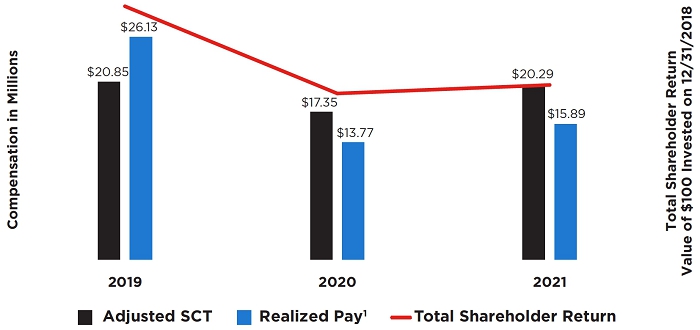
(1)68 We have not included the Performance Share Programs that had a 5-year restriction period after the performance period for Realized Pay purposes. Specifically, we did not include the lapsing of restrictions of PSP 2011-2013 in 2019, and PSP 2012-2014 in 2020.BROAD-BASED EMPLOYEE BENEFIT PROGRAMSADDITIONAL EXECUTIVE PERQUISITESCOMPREHENSIVE SECURITY PROGRAMMr.Messrs. Garland and Mr. Lashier were the only NEOs in 20212023 designated by the Board as requiring increased security under this program. The program allows for certain additional security measures in specific situations when the senior executive is traveling by car or airplane. An additional security review of the NEO’s personal residences is also included. Any additional costs to the Company for these activities are reported as All Other Compensation and included in the Summary Compensation Table.EXECUTIVE RETIREMENT PLANSNEOs.●Phillips 66 Key Employee Deferred Compensation Plan (KEDCP) — This voluntary deferred compensation plan provides tax-efficient retirement savings by allowing executives to voluntarily defer both the receipt and taxation of a portion of their base salary and annual bonus until a specified date or when they leave the Company. Further information is provided in the Nonqualified Deferred Compensation table.●Phillips 66 Defined Contribution Make-Up Plan (DCMP) — This defined contribution restoration plan restores benefits capped under our qualified defined contribution plan due to Internal Revenue Code (IRC) limits. Further information is provided in the Nonqualified Deferred Compensation table.●Phillips 66 Key Employee Supplemental Retirement Plan (KESRP) — This defined benefit restoration plan restores Company-sponsored benefits capped under the qualified defined benefit pension plan due to IRC limits. Further information is provided in the Pension Benefits as of December 31, 2021 table.EXECUTIVE LIFE INSURANCEEXECUTIVE SEVERANCE AND CHANGE IN CONTROL PLANSCompensation Discussion and Analysis 69 ●ensuring shareholder interests are protected during business transactions by providing benefits that promote senior management stability;●providing and preserving an economic motivation for participating executives to consider a business combination that might result in an executive’s job loss; and●competing effectively in attracting and retaining executives in an industry that features frequent acquisitions and divestitures.Compensation Discussion and Analysis 63participate inreceive benefits under both plans as a result of the same severance event. Among other benefits, the ESP provides a payment equal to one and one-half or two times the executive’s base salary, depending on the executive's salary grade level, and the executive’s current target annual bonus if he or she is involuntarily terminated without cause. The CICSP provides a payment equal to two or three times the sum of the executive’s base salary and the greater of his or her target bonus or average of the last two bonus payments, depending on salary grade level.level, and accelerated vesting of equity awards. The executive must be involuntarily terminated without cause in connection with a change in control or terminate employment for good reason within two years after the change in control to be eligible for a CICSP payment. We believe this “double trigger” requirement is in the best interest of shareholders and is considered a best practice.gross-upgross-up protections.PERSONAL USE OF COMPANY AIRCRAFTExecutive Compensation Governance CLAWBACK PROVISIONSCompensation CommitteeHRCC and the Audit and Finance Committee.STOCK OWNERSHIP70 Compensation CommitteeHRCC believes requiring executives to retain shares of Phillips 66 common stock helps align executive performance with shareholder value creation and mitigates compensation risk. Our stock ownership guidelines require executives to own Phillips 66 common stock, valued as a multiple of the executive’s base salary, within five years from the date the executive becomes subject to the guidelines, asguidelines. The multiple applicable to each NEO is shown below:Executive LevelRequired Salary Multiple Chairman and CEOMark Lashier66xExecutive Vice PresidentGreg Garland3-56xKevin Mitchell 4x Brian Mandell 4x Tim Roberts 4x includedcounted when determining whether an executive has met the required ownership levels. Compliance with the stock ownership guidelines is reviewed annually.annually by the HRCC. All NEOs currently comply with these stock ownership guidelines or are on track to comply within the applicable five-year period.TAX CONSIDERATIONS—INTERNAL REVENUE CODE SECTION 162(m)IRC Section 162(m) places a $1 million limit on compensation that we may deduct for federal income tax purposes in any one year with respect to certain “covered employees.” Prior to the passage of the Tax Cuts and Jobs Act in December 2017, such covered employees included our chief executive officer and our three other most highly compensated executive officers (excluding our chief financial officer). The $1 million deduction limitation was subject to an exemption for performance-based compensation.With the enactment of the Tax Cuts and Jobs Act, the Section 162(m) performance-based compensation exemption has been repealed and the $1 million deduction limit now applies to our chief financial officer, as well as our chief executive officer and our three other most highly compensated executive officers. Further, once an executive officer becomes a “covered employee” the $1 million deduction limit64 Phillips 66 2022 Proxy Statementcontinues to apply to compensation paid to such executive officer at any time, including any future roles within the Company, any termination or retirement payments, and payments occurring after their death. The Tax Cuts and Jobs Act rules generally applied to us starting with our taxable year that commenced January 1, 2018, but do not apply to compensation provided pursuant to written binding contracts in effect on November 2, 2017, that are not materially modified after that date.We monitor the application of Section 162(m) and the associated Treasury regulations on an ongoing basis and the advisability of qualifying executive compensation for deductibility. Notwithstanding the repeal of the exemption for “performance-based compensation,” the Committee intends to maintain its commitment to structuring the Company’s executive compensation programs in a manner designed to align pay with performance.TRADING POLICYall employees and directors from trading Company stockin the Company's securities while in possession of material, non-public information. This policy requires executivesexecutive officers and directors as well as employees with regular access to insider information, to follow specificcertain pre-clearance procedures before entering into transactions ininvolving our stock.HEDGING OR PLEDGING OF COMPANY STOCKCOMPENSATION RISK ASSESSMENTCompensation CommitteeHRCC oversees management’s risk assessment of all elements of our compensation programs, policies and practices for all employees. Management has concluded that our compensation programs, policies and practices are not reasonably likely to have a material adverse effect on the Company. Relevant provisions of our programs include, but are not limited to:●VCIP and LTI metrics are aligned with our corporate strategy to ensure continued focus on actions that drive shareholder value.●Compensation Discussion and AnalysisVCIP and LTI compensation targets increase with each pay grade, further emphasizing long-term value creation and alignment with shareholder interests.●Maximum payouts under VCIP and PSP programs are appropriately limited to balance risk-taking with long-term strategic goals.●Maintaining a level of discretion in the performance-based programs, which enables the Compensation Committee to award zero payouts to executives who perform poorly or when warranted by Company performance.●Clawback provisions that allow for reduction in awards for executives who expose the Company to undue risk.●LTI design that provides incentives for executive retention and Company and individual performance.●Stock ownership guidelines, anti-pledging policies, and anti-hedging policies that align executive interests with those of shareholders.71Compensation CommitteeHRCC considers senior management succession planning a core part of the Company’s risk management program. The Compensation CommitteeHRCC regularly reviews with the CEO succession planning for senior leadership positions (other than the CEO position, itself, for which succession planning is reviewed by the Nominating and Governance Committee)N&GC), and the timing and development required to ensure continuity of leadership over the short- and long-terms,long-term, to manage risk in this area.Compensation Discussion and Analysis 65Our Compensation Programs are Aligned with Best Practices
 We Do…
We Do…
 We Do Not…
We Do Not…
 Target the majority of NEO compensation to be
Target the majority of NEO compensation to be performance-basedperformance based and at-risk
 Apply multiple performance metrics aligned with our corporate strategy
Apply multiple performance metrics aligned with our corporate strategy
 Cap maximum payouts for VCIP and PSP
Cap maximum payouts for VCIP and PSP
 Cap payout at 100% on the TSR portion of the PSP if absolute TSR is negative
Cap payout at 100% on the TSR portion of the PSP if absolute TSR is negative
 Require TSR performance above the 50th percentile relative to peer group to achieve target payout
Require TSR performance above the 50th percentile relative to peer group to achieve target payout Employ a “double trigger” for change in control severance benefits and equity
Employ a “double trigger” for change in control severance benefits and equity awards
 Include absolute and relative metrics in our LTI programs
Include absolute and relative metrics in our LTI programs
 Maintain robust stock ownership guidelines for executives — CEO and Executive Chairman 6x base salary; other NEOs
Maintain robust stock ownership guidelines for executives — CEO and Executive Chairman 6x base salary; other NEOs 3-5x4x base salary
 Balance, monitor and manage compensation risk through regular assessments and robust clawback provisions,
Balance, monitor and manage compensation risk through regular assessments and robust clawback provisions,
 Have extended vesting periods on stock awards, with a minimum one-year vesting period required for stock and stock option awards
Have extended vesting periods on stock awards, with a minimum one-year vesting period required for stock and stock option awards
 Maintain a fully independent compensation committee
Maintain a fully independent compensation committee
 Retain an independent compensation consultant
Retain an independent compensation consultant
 Hold
Hold aan annual Say-on-Pay vote annually and consider shareholder feedback in the design of our compensation program
 Provide excise tax gross-ups to our NEOs under our CICSP
Provide excise tax gross-ups to our NEOs under our CICSP
 Reprice stock options without shareholder approval
Reprice stock options without shareholder approval
 Price stock
Price stock optionsoption exercise prices below grant date fair market value
 Allow share recycling for stock options
Allow share recycling for stock options
 Include evergreen provisions in our active equity plans
Include evergreen provisions in our active equity plans
 Allow hedging or pledging of Company stock
Allow hedging or pledging of Company stock
 Pay dividends during the performance period on unearned PSPs
Pay dividends during the performance period on unearned PSPs
 Allow transfer of equity awards (except in the case of death)
Allow transfer of equity awards (except in the case of death)
 Provide separate supplemental executive retirement benefits for individual NEOs
Provide separate supplemental executive retirement benefits for individual NEOs
 Maintain individual change-in-control agreements
Maintain individual change-in-control agreements
 Have an employment agreement with the CEO
Have an employment agreement with the CEO
 Provide excessive perquisites
Provide excessive perquisites Provide individual performance modifier for VCIP for our executive officers
Provide individual performance modifier for VCIP for our executive officers72 66 Phillips 66 2022 Proxy StatementROLE OF THE COMPENSATION COMMITTEE Compensation Determination Process 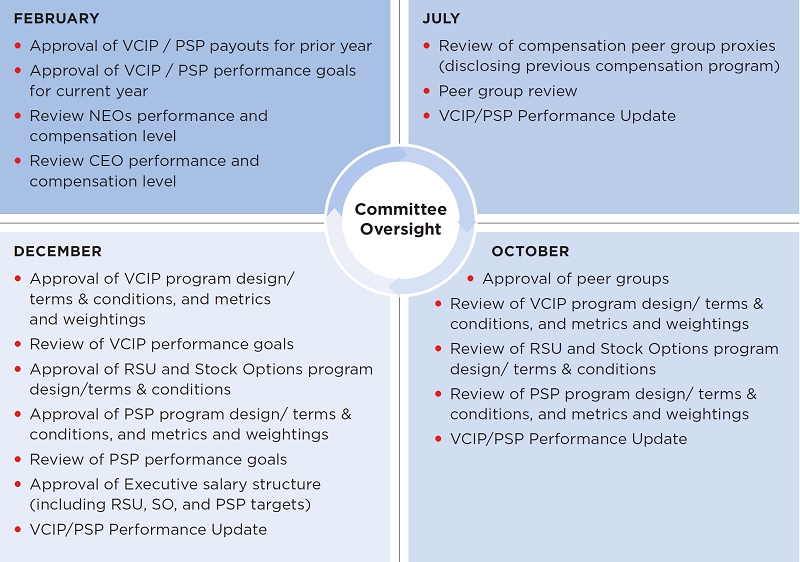
Authority andResponsibility●Provides independent, objective oversight of our executive compensation programs and determines the compensation for our CEO and anyone who meets our definition of a Senior Officer.●Acts as plan administrator of the compensation programs and benefit plans for our CEO and Senior Officers and as an avenue of appeal for current and former Senior Officers regarding disputes over compensation and benefits.●Oversees the Company’s executive compensation philosophy, policies, plans and programs for our CEO and Senior Officers.●Assists the Board in its oversight of the integrity of the Company’s Compensation Discussion and Analysis.The Compensation Committee is committed to a process of continuous improvement in exercising its responsibilities. To that end, the Compensation Committee:●receives ongoing training regarding best practices for executive compensation;●regularly reviews its responsibilities and governance practices in light of ongoing changes in the legal and regulatory arena and trends in corporate governance;●annually reviews its charter and proposes any desired changes to the Board of Directors;Compensation Discussion and Analysis 67●annually conducts a self-assessment of its performance that evaluates the effectiveness and seeks ideas to improve its processes and oversight;●regularly reviews and assesses whether the Company’s executive compensation program is having the desired effects without encouraging an inappropriate level of risk; and●regularly reviews all its activities, including its self-assessment and a compensation risk assessment, with the full Board of Directors.IndependentCompensationConsultantAdvises the Compensation Committee on:●our compensation program and processes relative to external corporate governance standards;●the appropriateness of our executive compensation program in comparison to those of our peers; and●the effectiveness of the compensation program in accomplishing the objectives set by the Compensation Committee with respect to executives.In 2021, the Compensation Committee retained Mercer as its independent executive compensation consultant. The Compensation Committee evaluated whether Mercer’s work raised any conflict of interest and determined that no such conflict existed. During 2021, fees paid to Mercer in its role as the independent compensation consultant for the Compensation Committee totaled $168,815. In addition, the Company paid fees to Mercer totaling $3.5 million during 2021 for all other services performed for the Company. These services can be broken down as 17% related to administration of pension liabilities in international locations that have been sold, 55% related to administration of ongoing international benefit plans, 7% related to Human Resources consulting engagements, and 21% related to insurance and surety bonds.Human Resources and Compensation Committee Report Human Resources and Compensation CommitteeHRCC has reviewed and discussed with management the Compensation Discussion and Analysis presented in this proxy statement.Human Resources and Compensation CommitteeHRCC has discussed with Mercer, anits independent executive compensation consulting firm,consultant, the executive compensation programs of the Company, as well as specific compensation decisions made by the Human Resources and Compensation CommitteeHRCC for 2021.2023. Mercer was retained directly by the Human Resources and Compensation Committee,HRCC, independent of the management of the Company. The Human Resources and Compensation Committee has received written disclosure from Mercer confirming the consultant’s independence, has discussed with Mercer its independence from Phillips 66, and believes Mercer to be independent of management.Human Resources and Compensation CommitteeHRCC recommended to the Board of Directors that the Compensation Discussion and Analysis be included in the Phillips 66 proxy statementProxy Statement on Schedule 14A and the Phillips 66 Annual Report on Form 10-K for the year ended December 31, 2021.HUMAN RESOURCES AND COMPENSATION COMMITTEE
Gary K. Adams
Lisa A. Davis
Douglas T. Terreson
Glenn F. Tilton68 Phillips 66 2022 Proxy StatementCompensation Discussion and Analysis 73 as of December 31, 2021,for 2023, for services to Phillips 66 or any of our subsidiaries during 2021, 20202023, 2022 and 2019.SUMMARY COMPENSATION TABLE Name,
Position,
Year
($)
Awards(2)
($)
Awards(3)
($)
Incentive Plan
Compensation(4)
($)
Pension
Value and
Nonqualified
Deferred
Compensation
Earnings(5)
($)
Compensation(6)
($)Total
($)Mark Lashier President and Chief Executive Officer 2023 1,583,333 9,620,568 3,000,816 4,036,181 413,305 755,058 19,409,262 2022 1,314,667 9,260,117 1,976,406 2,837,051 231,983 668,646 16,288,870 2021 825,000 6,830,884 1,513,217 1,406,625 71,546 230,816 10,878,088 Greg Garland Executive Chairman 2023 1,000,000 6,012,843 1,876,884 2,576,000 — 731,051 12,196,778 2022 1,337,504 9,825,510 2,500,700 3,552,411 — 1,013,792 18,229,917 2021 1,675,008 11,318,245 3,140,920 4,154,020 — 665,013 20,953,206 Kevin Mitchell Executive Vice President and Chief Financial Officer 2023 989,753 3,901,297 1,217,364 1,593,503 326,532 337,944 8,366,393 2022 951,992 4,899,887 1,040,400 1,580,306 144,483 328,542 8,945,610 2021 903,432 4,493,056 1,039,424 1,400,320 164,332 216,301 8,216,865 Executive Vice President, Marketing & Commercial 2023 850,802 2,840,101 887,604 1,232,812 1,412,212 291,960 7,515,491 2022 808,375 3,183,449 676,600 1,207,712 — 266,584 6,142,720 Tim Roberts Executive Vice President, Midstream & Chemicals 2023 971,567 3,256,304 1,016,760 1,407,800 282,320 308,396 7,243,147 2022 931,426 3,766,815 799,000 1,391,550 191,842 289,679 7,370,312 2021 887,424 3,453,979 799,832 1,237,956 342,146 182,659 6,903,996 2020 and 2019.Name,
Position,
Year Salary(1)
($) Stock
Awards(2)
($) Option
Awards(3)
($) Non-Equity
Incentive Plan
Compensation(4)
($) Change in
Pension
Value and
Nonqualified
Deferred
Compensation
Earnings(5)
($) All Other
Compensation(6)
($) Total
($) Total
Without
Change
in Pension
Value(7)
($)Greg Garland
Chairman and Chief Executive Officer2021 1,675,008 11,318,245 3,140,920 4,154,020 — 665,013 20,953,206 20,953,206 2020 1,675,008 9,237,623 3,351,180 3,082,015 6,851,884 791,664 24,989,374 18,137,490 2019 1,675,008 10,806,257 3,141,546 5,226,025 9,936,893 1,115,149 31,900,878 21,963,985 Mark Lashier
President and Chief Operating Officer2021 825,000 6,830,884 1,513,217 1,406,625 71,546 230,816 10,878,088 10,806,542 2020 — — — — — — — — 2019 — — — — — — — — Kevin Mitchell
Executive Vice President, Finance and Chief Financial Officer2021 903,432 4,493,056 1,039,424 1,400,320 164,332 216,301 8,216,865 8,052,533 2020 897,360 3,024,331 998,560 1,256,304 258,546 245,367 6,680,468 6,421,922 2019 861,172 3,542,763 937,014 1,722,344 264,245 354,754 7,682,292 7,418,047 Robert Herman
Executive Vice President, Refining2021 870,432 3,387,870 784,336 1,214,253 209,797 187,575 6,654,263 6,444,466 2020 867,028 2,320,490 766,300 1,092,455 318,450 214,446 5,579,169 5,260,719 2019 781,558 2,575,994 553,770 1,293,153 340,714 441,201 5,986,390 5,645,676 Tim Roberts
Executive Vice President, Midstream2021 887,424 3,453,979 799,832 1,237,956 342,146 182,659 6,903,996 6,561,850 2020 881,188 2,531,427 766,300 1,110,297 297,744 204,254 5,791,210 5,493,466 2019 781,558 2,385,489 553,770 1,395,244 29,621 275,030 5,420,712 5,391,091 (1)74Includes any amounts that were voluntarily deferred under our KEDCP.Name
Contributions
to Nonqualified
Defined
Contribution
Plans(a)
($)
Group Life
Insurance
Premiums(b)
($)
Executive
Health
Physical(c)
($)
Counseling(d)
($)
Contributions
under the
Tax-Qualified
Savings
Plan(e)
($)
Gift
Programs(f)
($)
Perquisites
and Tax
Protection(g)
($)
Use of
Company
Aircraft(h)
($)M. Lashier 459,092 12,540 2,150 17,088 26,400 10,000 30,138 197,650 G. Garland 474,365 15,241 — 17,088 26,400 10,000 34,132 153,825 K. Mitchell 256,054 5,107 2,150 17,088 26,400 25,000 6,145 — B. Mandell 199,760 4,390 2,150 17,088 26,400 25,000 17,172 — T. Roberts 233,261 7,695 — — 26,400 25,000 16,040 — (2)Amounts shown represent the aggregate grant date fair value of RSU and PSP awards determined in accordance with U.S. GAAP. Assumptions used in calculating these amounts are included in Note 20—Share-Based Compensation Plans in the Notes to Consolidated Financial Statements in our Annual Report on Form 10-K for the year ended December 31, 2021 (our “2021 Form 10-K”).The PSP target award included in 2019 has a performance period that ended on December 31, 2021. The PSP target award included in 2020 has a performance period that ends in 2022. The PSP target award included in 2021 has a performance period that ends in 2023.69Amounts shown relating to PSP are targets because target is the probable outcome for the applicable performance period, consistent with the accounting treatment under GAAP. If the maximum payout were used for the PSP awards, the amounts shown relating to PSP would double, although the value of the actual payout would depend on the share price at the time of the payout. If the minimum payout were used, the amounts for PSP awards would be reduced to zero. Actual payouts with regard to the targets set for the performance period that ended in 2021 were approved by the Compensation Committee at its February 2022 meeting. Those payouts were as follows (with values shown at fair market value on the date of payout): Mr. Garland, $3,536,303; Mr. Mitchell, $1,159,328; Mr. Herman, $881,885; and Mr. Roberts, $819,545.Earned payouts under the PSP 2019-2021 have been, and under the PSP 2020-2022 and PSP 2021-2023 are expected to be, made in cash at the end of the applicable performance period and will be forfeited if the NEO is terminated prior to the end of the performance period (other than for death or following disability or after a change in control). If the NEO retires after age 55 and with five years of service, the NEO is entitled to a prorated award for any ongoing program in which he or she participated for at least 12 months.(3)Amounts shown represent the aggregate grant date fair value of awards determined in accordance with GAAP. Assumptions used in calculating these amounts are included in Note 20—Share-Based Compensation Plans in the Notes to Consolidated Financial Statements in our 2021 Form 10-K.(4)These are amounts paid under our annual bonus program (VCIP), including bonus amounts that were voluntarily deferred under our KEDCP. These amounts were paid in February 2022, following the performance year.(5)Reflects the actuarial increase in the present value of the benefits under our pension plans determined using interest rate and mortality rate assumptions consistent with those used in our financial statements. There are no deferred compensation earnings reported in this column, as our nonqualified deferred compensation plans do not provide above-market or preferential earnings.(6)We offer limited perquisites to our NEOs, which, together with Company contributions to our qualified savings and nonqualified defined contribution plans, are reflected in the All Other Compensation column as summarized below: Name Company
Contributions
to Nonqualified
Defined
Contribution
Plans(a)
($) Executive
Group Life
Insurance
Premiums(b)
($) Wellness
Programs
and
Executive
Health
Physical(c)
($) Financial
Counseling(d)
($) Matching
Contributions
under the
Tax-Qualified
Savings
Plan(e)
($) Matching
Gift
Program(f)
($) Miscellaneous
Perquisites
and Tax
Protection(g)
($) Personal
Use of
Company
Aircraft(h)
($) Greg Garland 363,162 13,266 — 16,270 17,400 15,000 163,312 76,603 Mark Lashier 43,100 6,534 — — 17,400 — 47,732 116,050 Kevin Mitchell 155,379 4,662 2,150 16,270 17,400 15,000 5,440 — Robert Herman 139,631 6,894 2,150 16,270 17,400 — 5,230 — Tim Roberts 142,418 7,029 — — 17,400 15,000 812 — (a)Under the terms of our nonqualified defined contribution plans, we make contributions to the accounts of all eligible employees, including the NEOs. See the Nonqualified Deferred Compensation table and accompanying narrative and notes for more information.(b)We maintain life insurance policies and/or death benefits for all our U.S.-based salaried employees (at no cost to the employee) with a face value approximately equal to the employee’s annual salary. We maintain group life insurance policies on each of our NEOs equal to approximately two times his or her annual salary. The amounts shown are for premiums paid by us to provide the additional group life insurance above what is provided to the broad-based employees.(c)Costs associated with executive physicals.(d)Costs associated with financial counseling and estate planning services with approved provider.(e)Under the terms of our tax-qualified defined contribution plans, we make contributions to the accounts of all eligible employees, including the NEOs.(f)We maintain a Matching Gift Program under which certain gifts by employees to qualified educational or charitable institutions are matched by the Company. The program matches up to $15,000 annually. The amounts shown reflect the actual payments made by us in 2021, which due to processing delays can include contributions in 2020 that were matched by the Company in 2021 and are therefore reported in this proxy statement.(g)The amounts shown primarily reflect payments by us relating to certain taxes incurred by the NEOs. We provide tax assistance when we request family members or other guests to accompany an NEO to a Company function and, as a result, the NEO is deemed to make personal use of Company assets such as Company aircraft and thereby incurs imputed income. We believe this type of expense is appropriately characterized as a business expense and, if the NEO incurs imputed income in accordance with applicable tax laws, we will generally reimburse the NEO for any increased tax costs (Mr. Garland $2,723; Mr. Lashier $211; Mr. Mitchell $5,440; Mr. Herman $5,230; and Mr. Roberts $812).70 Phillips 66 2022 Proxy StatementAlso included are benefits required for employees covered under our Comprehensive Security Program, which currently includes Mr. Garland ($160,589) and Mr. Lashier ($47,521). Under the Comprehensive Security Program, Mr. Garland and Mr. Lashier are provided with the use of a car and driver when security deems it required and home security fees that are in excess of the cost of a system typical for homes in their neighborhoods.(h)The Phillips 66 Comprehensive Security Program requires in certain circumstances that Mr. Garland and Mr. Lashier fly on Company aircraft. The amount presented above represents the approximate incremental cost to Phillips 66 for personal use of the aircraft. Approximate incremental cost has been determined by calculating the variable costs for each aircraft during the year, dividing that amount by the total number of miles flown by that aircraft, and multiplying the result by the miles flown for personal use during the year. Incremental costs for flights to the hangar or other locations without passengers, commonly referred to as “deadhead” flights, are included in the calculation.(7)To show how year-over-year changes in pension value impact total compensation, as determined under SEC rules, we included this column to show total compensation without pension value changes. The amounts reported in this column are calculated by subtracting the change in pension value, as described in footnote 6 to this table, from the amounts reported in the Total column. The amounts reported in this column differ substantially from, and are not a substitute for, the amounts reported in the Total column.Executive Compensation Tables 7175 76 GRANTS OF PLAN-BASED AWARDS Estimated Future Payouts under Non-Equity
Incentive Plan Awards(2) Estimated Future Payouts
under Equity Incentive Plan
Awards(3) All other
Stock
Awards:
Number
of Shares
of Stock
or Units(4)
(#) All other
Option
Awards:
Number of
Securities
Underlying
Options
(#) Exercise
or Base
Price of
Option
Awards
($/SH) Grant
Date Fair
Value of
Stock and
Option
Awards(5)
($)Name Grant
Date(1) Threshold
($) Target
($) Maximum
($) Threshold
(#) Target
($) Maximum
($) Greg Garland — 2,680,013 5,360,026 — — — — — — — 2/9/2021 — — — — — — 42,043 — — 3,140,612 2/9/2021 — — — — 109,473 218,946 — — — 8,177,633 2/9/2021 — — — — — — — 263,500 74.70 3,140,920 Mark Lashier — 907,500 1,815,000 — — — — — — — 4/1/2021 — — — — — — 30,674 — — 2,512,507 4/1/2021 — — — — 52,721 105,442 — — — 4,318,377 4/1/2021 — — — — — — — 109,100 81.91 1,513,217 Kevin Mitchell — 903,432 1,806,864 — — — — — — — 2/9/2021 — — — — — — 16,690 — — 1,246,743 2/9/2021 — — — — 43,458 86,916 — — — 3,246,313 2/9/2021 — — — — — — — 87,200 74.70 1,039,424 Robert Herman — 783,389 1,566,778 — — — — — — — 2/9/2021 — — — — — — 12,585 — — 940,100 2/9/2021 — — — — 32,768 65,536 — — — 2,447,770 2/9/2021 — — — — — — — 65,800 74.70 784,336 Tim Roberts — 798,682 1,597,364 — — — — — — — 2/9/2021 — — — — — — 12,830 — — 958,401 2/9/2021 — — — — 33,408 66,816 — — — 2,495,578 2/9/2021 — — — — — — — 67,100 74.70 799,832
Incentive Plan Awards(2)
under Equity Incentive Plan
Awards(3)
Stock
Awards:
Number
of Shares
of Stock
or Units(4)
(#)All other
Option
Awards:
Number of
Securities
Underlying
Options
(#)Exercise
or Base
Price of
Option
Awards
($/SH)
Date Fair
Value of
Stock and
Option
Awards(5)
($)Name
Date(1)Threshold
($)Target
($)Maximum
($)Threshold
(#)Target
($)Maximum
($)Mark Lashier — 2,506,945 5,013,890 — — — — — — — 2/7/2023 — — — — — — 29,870 — — 2,999,993 2/7/2023 — — — — 65,919 131,838 — — — 6,620,575 2/7/2023 — — — — — — — 109,200 100.435 3,000,816 Greg Garland — 1,600,000 3,200,000 — — — — — — — 2/7/2023 — — — — — — 18,669 — — 1,875,021 2/7/2023 — — — — 41,199 82,398 — — — 4,137,822 2/7/2023 — — — — — — — 68,300 100.435 1,876,884 Kevin
Mitchell— 989,753 1,979,506 — — — — — — — 2/7/2023 — — — — — — 12,113 — — 1,216,569 2/7/2023 — — — — 26,731 53,462 — — — 2,684,728 2/7/2023 — — — — — — — 44,300 100.435 1,217,364 Brian Mandell — 765,722 1,531,444 — — — — — — — 2/7/2023 — — — — — — 8,818 — — 885,636 2/7/2023 — — — — 19,460 38,920 — — — 1,954,465 2/7/2023 — — — — — — — 32,300 100.435 887,604 Tim
Roberts— 874,410 1,748,820 — — — — — — — 2/7/2023 — — — — — — 10,110 — — 1,015,398 2/7/2023 — — — — 22,312 44,624 — — — 2,240,906 2/7/2023 — — — — — — — 37,000 100.435 1,016,760 Executive Compensation Tables (1)77The grant date shown is the date on which the Compensation Committee approved the target awards.(2)Threshold and maximum awards are based on the provisions in the VCIP. Actual awards earned can range from 0 to 200% of the target awards. Actual payouts under the annual bonus program for 2021 are calculated using base salary earned in 2021 and reflected in the “Non-Equity Incentive Plan Compensation” column of the Summary Compensation Table.(3)Threshold and maximum awards are based on the provisions of the PSP. Actual awards earned range from 0 to 200% of the target. Performance periods under the PSP cover a three-year period, and because a new three-year period commences each year, there could be three overlapping performance periods ongoing. In 2021, targets were set with respect to an award for the performance period beginning in 2021 and ending in 2023. The Compensation Committee retains authority to make awards under the PSP using its judgment, including making awards greater than the maximum payout shown in the table above, provided the award does not exceed amounts permitted under the 2013 Omnibus Stock and Performance Incentive Plan of Phillips 66.(4)RSUs were granted in 2021 and will vest in 2024.(5)For equity incentive plan awards, these amounts represent the grant date fair value at target level under the PSP as determined in accordance with GAAP. For Stock Option awards, these amounts represent the grant date fair value of the option awards using a Black-Scholes-Merton-based methodology. Actual value realized upon option exercise depends on market prices at the time of exercise. For other stock awards, these amounts represent the grant date fair value of the RSU awards determined in accordance with GAAP. See Note 20—Share-Based Compensation Plans in the Notes to Consolidated Financial Statements in our 2021 Form 10-K, for a discussion of the relevant assumptions used in this determination.OUTSTANDING EQUITY AWARDS AT FISCAL YEAR END72 Phillips 66 2022 Proxy StatementOUTSTANDING EQUITY AWARDS AT FISCAL YEAR END2021. Option Awards(1) Stock Awards Name Grant
Date Number of
Securities
Underlying
Unexercised
Options
Exercisable(2)
(#) Number of
Securities
Underlying
Unexercised
Options
Unexercisable
(#) Option
Exercise
Price
($) Option
Expiration
Date Number
of Shares
or Units
of Stock
that
Have not
Vested(3)
(#) Market
Value of
Shares
or Units
of Stock
that
Have not
Vested
($) Equity
Incentive
Plan
Awards:
Number of
Unearned
Shares,
Units or
Other
Rights that
Have not
Vested(4)
(#) Equity
Incentive
Plan
Awards:
Market or
Payout
Value of
Unearned
Shares,
Units or
Other
Rights that
Have not
Vested ($)Greg Garland 2/6/2014 126,300 — 72.255 2/6/2024 — — — — 2/3/2015 146,700 — 74.135 2/3/2025 — — — — 2/2/2016 169,400 — 78.620 2/2/2026 — — — — 2/7/2017 174,000 — 78.475 2/7/2027 — — — — 2/6/2018 147,000 — 94.850 2/6/2028 — — — — 2/5/2019 119,133 59,567 94.968 2/5/2029 — — — — 2/4/2020 70,700 141,400 89.570 2/4/2030 — — — — 2/9/2021 — 263,500 74.700 2/9/2031 — — — — — — — — 108,316 7,848,577 350,410 25,390,708 Mark Lashier 4/1/2021 — 109,100 81.91 4/1/2031 — — — — — — — — 30,117 2,182,278 140,066 10,149,182 Kevin Mitchell 2/3/2015 9,900 — 74.135 2/3/2025 — — — — 2/2/2016 30,800 — 78.620 2/2/2026 — — — — 2/7/2017 31,700 — 78.475 2/7/2027 — — — — 2/6/2018 43,600 — 94.850 2/6/2028 — — — — 2/5/2019 35,533 17,767 94.968 2/5/2029 — — — — 2/4/2020 21,066 42,134 89.570 2/4/2030 — — — — 2/9/2021 — 87,200 74.700 2/9/2031 — — — — — — — — 38,292 2,774,638 129,956 9,416,612 Robert Herman 2/7/2013 12,300 — 62.170 2/7/2023 — — — — 2/6/2014 11,400 — 72.255 2/6/2024 — — — — 2/3/2015 23,500 — 74.135 2/3/2025 — — — — 2/2/2016 28,800 — 78.620 2/2/2026 — — — — 2/7/2017 30,700 — 78.475 2/7/2027 — — — — 2/6/2018 26,000 — 94.850 2/6/2028 — — — — 2/5/2019 21,000 10,500 94.968 2/5/2029 — — — — 2/4/2020 16,166 32,334 89.570 2/4/2030 — — — — 2/9/2021 — 65,800 74.700 2/9/2031 — — — — — — — — 75,292 5,455,658 98,560 7,141,658 Tim Roberts 4/4/2016 28,400 — 85.973 4/4/2026 — — — — 2/7/2017 30,700 — 78.475 2/7/2027 — — — — 2/6/2018 25,900 — 94.850 2/6/2028 — — — — 2/5/2019 21,000 10,500 94.968 2/5/2029 — — — — 2/4/2020 16,166 32,334 89.570 2/4/2030 — — — — 2/9/2021 — 67,100 74.700 2/9/2031 — — — — — — — — 29,012 2,102,209 102,842 7,451,931
2023.Stock Awards Name Grant
Date
Securities
Underlying
Unexercised
Options
Exercisable(2)
(#)Number of
Securities
Underlying
Unexercised
Options
Unexercisable
(#)Option
Exercise
Price
($)Option
Expiration
DateEquity
Incentive
Plan
Awards:
Market or
Payout
Value of
Unearned
Shares,
Units or
Other
Rights that
Have not
Vested ($)Mark Lashier 4/1/2021 72,733 36,367 81.910 4/1/2031 — — — — 2/8/2022 29,666 59,334 89.050 2/8/2032 — — — — 7/1/2022 8,766 17,534 82.680 7/1/2032 2/7/2023 — 109,200 100.435 2/7/2033 — — — — — — — — 70,243 9,352,153 292,060 38,884,868 Greg Garland 2/7/2017 174,000 — 78.475 2/7/2027 — — — — 2/6/2018 147,000 — 94.850 2/6/2028 — — — — 2/5/2019 178,700 — 94.968 2/5/2029 — — — — 2/4/2020 212,100 — 89.570 2/4/2030 — — — — 2/9/2021 175,666 87,834 74.700 2/9/2031 — — — — 2/8/2022 49,033 98,067 89.050 2/8/2032 — — — — 2/7/2023 — 68,300 100.435 2/7/2033 — — — — — — — — 85,472 11,379,742 246,924 32,875,461 Kevin Mitchell 2/6/2018 43,600 — 94.850 2/6/2028 — — — — 2/5/2019 53,300 — 94.968 2/5/2029 — — — — 2/4/2020 63,200 — 89.570 2/4/2030 — — — — 2/9/2021 58,133 29,067 74.700 2/9/2031 — — — — 2/8/2022 20,400 40,800 89.050 2/8/2032 — — — — 2/7/2023 — 44,300 100.435 2/7/2033 — — — — — — — — 41,205 5,486,034 135,510 18,041,801 Brian Mandell 2/2/2016 9,800 — 78.620 2/2/2026 — — — — 2/7/2017 14,100 — 78.475 2/7/2027 — — — — 2/6/2018 12,100 — 94.850 2/6/2028 — — — — 2/5/2019 25,500 — 94.968 2/5/2029 — — — — 2/4/2020 42,800 — 89.570 2/4/2030 — — — — 2/9/2021 37,800 18,900 74.700 2/9/2031 — — — — 2/8/2022 13,266 26,534 89.050 2/8/2032 2/7/2023 — 32,300 100.435 2/7/2033 — — — — — — — — 26,814 3,570,016 92,226 12,278,970 Tim Roberts 2/9/2021 — 22,367 74.700 2/9/2031 — — — — 2/8/2022 — 31,334 89.050 2/8/2032 — — — — 2/7/2023 — 37,000 100.435 2/7/2033 — — — — — — — — 32,444 4,319,594 107,698 14,338,912 78 Executive Compensation Tables 73Table(3)Awards are subject to forfeiture if, prior to the lapsing of Contents(1)All options shown in the table have a maximum term for exercise of ten years from the grant date. Under certain circumstances, the terms for exercise may be shorter, and in certain circumstances, the options may be forfeited and cancelled. All awards shown in the table have associated restrictions upon transferability.(2)The options shown in this column vested and became exercisable in 2021 or prior years (although under certain termination circumstances, the options may still be forfeited). Options become exercisable in one-third increments on the first, second and third anniversaries of the grant date.(3)Restrictions on PSP awards for performance periods that ended on or before December 31, 2010, lapse upon separation from service. Awards are subject to forfeiture if, prior to lapsing, the NEO separates from service for a reason other than death, disability, layoff, retirement after reaching age 55 with five years of service, or after a change of control, although the Compensation Committee has the authority to waive forfeiture. The awards have no voting rights, but do entitle the holder to receive dividend equivalents in cash. The value of the awards reflects the closing price of our common stock, as reported on the NYSE, on December 31, 2021 ($72.46).(4)Reflects potential awards from ongoing performance periods under the PSP for performance periods ending December 31, 2022 and December 31, 2023. These awards are shown at maximum; however, there is no assurance that awards will be granted at, below or above target after the end of the relevant performance periods, as the determination to make a grant and the amount of any grant is within the judgment of the Compensation Committee. Until an actual grant is made, these unearned awards pay no dividend equivalents. The value of these unearned awards reflects the closing price of our common stock, as reported on the NYSE, on December 31, 2021 ($72.46).OPTION EXERCISES AND STOCK VESTED FOR 202374 Phillips 66 2022 Proxy StatementOPTION EXERCISES AND STOCK VESTED FOR 20212021: Option Awards Stock Awards(1) Name Number of Shares
Acquired on Exercise
(#) Value Realized
Upon Exercise
($) Number of Shares
Acquired on Vesting
(#) Value Realized
Upon Vesting
($)Greg Garland 158,500 4,172,814 81,633 5,886,144 Mark Lashier — — 557 39,789 Kevin Mitchell — — 28,065 2,034,924 Robert Herman — — 18,749 1,350,895 Tim Roberts — — 18,093 1,303,917 Option Awards Name Number of Shares
Acquired on Exercise
(#)Value Realized
Upon Exercise
($)Number of Shares
Acquired on Vesting
(#)Value Realized
Upon Vesting
($)Mark Lashier — — 110,484 14,204,088 Greg Garland 169,400 5,559,111 200,912 25,058,810 Kevin Mitchell 72,400 3,349,149 77,427 9,721,010 Brian Mandell 3,000 113,130 47,131 5,892,556 Tim Roberts 166,299 4,996,522 60,356 7,556,957 (1)Executive Compensation TablesStock awards include RSUs that vested during the year, as well as the PSP 2019-2021 award that vested on December 31, 2021 and was paid out in cash in early 2022. The PSP awards were as follows: Mr. Garland, 49,238 units valued at $3,536,303; Mr. Mitchell, 16,142 units valued at $1,159,328; Mr. Herman, 12,279 units valued at $881,885; and Mr. Roberts, 11,411 units valued at $819,545.79PENSION BENEFITS AS OF DECEMBER 31, 2023 covering NEOs, the Phillips 66 Retirement Plan (the "Retirement Plan"), consists of multiple titles with different terms. NEOs are only eligible to participate in one title at any time but may have frozen benefits under one or more other titles.Title I Title IV Current Eligibility Mr. Garland Mr. Lashier, Mr. Mitchell, Mr. Roberts Mr. Mandell Mr. Herman(4), Mr. RobertsNormal Retirement Age 65 Age 65 Age 65 Age 55 with five years of service or if laid off during or after the year in which the participant reaches age 50 Executives may receive their vested benefit upon termination of employment at any age Age 50 with ten years of service Calculated as the product of 1.6% times years of credited service multiplied by the final average eligible earnings Based on monthly pay and interest credits to a nominal cash balance account created on the first day of the month after an executive’s hire date. Pay credits are equal to a percentage of total salary and annual bonus.bonusCalculated as the product of 1.6% times years of credited service multiplied by the final average eligible earnings Final Average
Earnings
CalculationCalculated using the three highest compensation years in the last ten calendar years before retirement plus the year of retirement N/A Calculated using the higher of the highest three years of compensation or the highest 36 months of compensation
Compensation(3)Includes salary and annual bonus Includes salary and annual bonus Includes salary and annual bonus Benefit Vesting All participants are vested in this title Employees vest after three years of service All participants are vested in this title Payment Types Allows payments in the form of several annuity types or a single lump sum IRS limitations Benefits under all Titles are limited by the IRC. In 2021,2023, the compensation limit was $290,000.$330,000. The IRC also limits the annual benefit available under these Titles expressed as an annuity. In 2021,2023, that limit was $230,000$265,000 (reduced actuarially for ages below 62).(1)80NEOs whose combined years of age and service total less than 44 receive a 6% pay credit, those with 44 through 65 receive a 7% pay credit and those with or more receive a 9% pay credit. Interest credits are applied to the cash balance account each month. This credit is calculated by multiplying the value of the account by the interest credit rate, based on 30-year U.S. Treasury security rates adjusted quarterly. 2024 Proxy StatementExecutive Compensation Tables 75(2)An early benefit reduction is calculated on Title I by reducing the benefit 5% for each year before age 60 that benefits are paid. An early benefit reduction is calculated on Title III by reducing the benefit 6.67% for each year before age 60 that benefits are paid, unless the participant has at least 85 points awarded, with one point for each year of age and one point for each year of service. The benefit calculation for Titles I and III is reduced by the product of 1.5% of the annual primary social security benefit multiplied by years of credited service, although a reduction limit of 50% of the primary Social Security benefit may apply.(3)Under Title I, if an executive receives layoff benefits, then the eligible compensation calculation also includes the annualized salary for the year of layoff (rather than the actual salary for that year) and years of service are increased by any period for which layoff benefits are calculated.(4)Mr. Herman has a frozen benefit under Title III from prior years of service with predecessor companies. Under Title III, normal retirement is age 65 and early retirement is age 55 with 10 years of service. Title III is similar to Title I, except that bonus is not eligible pension compensation and payout is made in the form of an annuity.2021.Name Plan Name Number of Years
Credited Service(1)
(#) Present Value of
Accumulated Benefit
($) Payments During
Last Fiscal Year
($)Greg Garland Phillips 66 Retirement Plan - Title I 32 2,071,363 — Phillips 66 Key Employee Supplemental Retirement Plan(2) — 51,112,906 — Mark Lashier Phillips 66 Retirement Plan - Title II 1 25,279 — Phillips 66 Key Employee Supplemental Retirement Plan(2) — 46,267 — Kevin Mitchell Phillips 66 Retirement Plan - Title II 8 186,914 — Phillips 66 Key Employee Supplemental Retirement Plan(2) — 920,295 — Robert Herman Phillips 66 Retirement Plan - Title II 16 462,681 — Phillips 66 Retirement Plan - Title III 23 730,045 — Phillips 66 Key Employee Supplemental Retirement Plan(2) — 1,409,064 — Tim Roberts Phillips 66 Retirement Plan - Title II 6 155,692 — Phillips 66 Key Employee Supplemental Retirement Plan(2) — 736,072 — Name Plan Name Payments During
Last Fiscal Year
($)Mark Lashier Retirement Plan - Title II 34 84,377 — 632,457 — Greg Garland Retirement Plan - Title I 34 1,748,747 — 39,141,219 — Kevin Mitchell Retirement Plan - Title II 10 250,004 — 1,328,218 — Brian Mandell Retirement Plan - Title IV 33 1,893,047 — 10,460,507 — Tim Roberts Retirement Plan - Title II 31 224,471 — 1,141,455 — Understanding the Annual Change in Pension Value (1)Years of credited service include service recognized under the predecessor ConocoPhillips plans from which these plans were spun off effective May 1, 2012. Credited Service displays the number of years the NEO was in each applicable formula. Mr. Lashier’s and Mr. Roberts’ calculations include 32 years and 29 years of prior service recognition respectively.(2)The Phillips 66 Key Employee Supplemental Retirement Plan restores Company-sponsored benefits capped under the qualified defined benefit pension plan due to IRC limits. All employees, including our NEOs, are eligible to participate in the plan.Understanding the Annual Change in Pension ValueNo modifications to pension ●20212023Change in value ●Companythe Company's control●Pension plan going forward ●Compensation CommitteeHRCC will continue to assess our pension program to ensure viability as an attraction and retention tool76 Phillips 66 2022 Proxy StatementExecutive Compensation Tables 81 NONQUALIFIED DEFERRED COMPENSATIONPhillips 66 KEDCP and the Phillips 66 DCMP.specificspecified date in the future.2021:Name Applicable Plan(1) Beginning
Balance
($) Executive
Contributions
in Last
Fiscal Year
($) Company
Contributions
in the Last
Fiscal Year(2)
($) Aggregate
Earnings in
Last Fiscal
Year(3)
($) Aggregate
Withdrawals/
Distributions
($) Aggregate
Balance at
Last Fiscal
Year End(4)
($)Greg Garland Phillips 66 Defined Contribution Make-Up Plan 2,944,579 — 363,162 302,749 — 3,610,490 Phillips 66 Key Employee Deferred Compensation Plan 1,051,822 — — 308,963 — 1,360,785 Mark Lashier Phillips 66 Defined Contribution Make-Up Plan — — 43,100 506 — 43,606 Phillips 66 Key Employee Deferred Compensation Plan — — — — — — Kevin Mitchell Phillips 66 Defined Contribution Make-Up Plan 746,937 — 155,379 134,489 — 1,036,805 Phillips 66 Key Employee Deferred Compensation Plan — — — — — — Robert Herman Phillips 66 Defined Contribution Make-Up Plan 892,236 — 139,631 126,165 — 1,158,032 Phillips 66 Key Employee Deferred Compensation Plan 2,887,620 — — 726,636 — 3,614,256 Tim Roberts Phillips 66 Defined Contribution Make-Up Plan 563,188 — 142,418 33,406 — 739,012 Phillips 66 Key Employee Deferred Compensation Plan 756,467 555,148 — 65,839 — 1,377,454 Name Beginning
Balance
($)Executive
Contributions
in Last
Fiscal Year
($)Aggregate
Withdrawals/
Distributions
($)Mark Lashier DCMP 327,763 — 459,092 94,810 — 881,666 KEDCP — — — — — — Greg Garland DCMP 4,063,784 — 474,365 655,582 — 5,193,731 KEDCP 1,921,643 — — 266,294 — 2,187,937 Kevin Mitchell DCMP 1,140,881 — 256,054 204,449 — 1,601,384 KEDCP — — — — — — Brian Mandell DCMP 894,871 — 199,760 141,554 — 1,236,185 KEDCP 3,587,675 — 739,934 — 4,327,610 Tim Roberts DCMP 824,979 — 233,261 126,086 — 1,184,326 KEDCP 2,149,021 1,335,490 — 408,957 (67,052) 3,826,418 (1)82We have two defined contribution deferred compensation programs for our executives – the DCMP and the KEDCP. As of December 31, 2021, participants in these plans had 36 investment options – 28 of the options were the same as those available in our 401(k) plan and the remaining options were other mutual funds approved by the plan administrator.Executive Compensation Tables 77POTENTIAL PAYMENTS UPON TERMINATION OR CHANGE IN CONTROL (2)These amounts represent Company contributions under the DCMP. These amounts are also included in the “All Other Compensation” column of the Summary Compensation Table.(3)These amounts represent earnings on plan balances from January 1 to December 31, 2021. These amounts are not included in the Summary Compensation Table.(4)The total reflects contributions by our NEOs, contributions by us, and earnings on balances prior to 2021; plus contributions by our NEOs, and earnings from January 1, 2021, through December 31, 2021 (shown in the appropriate columns of this table, with amounts that are included in the Summary Compensation Table). The total includes all contributions by our NEOs and by us reported in this proxy statement and our proxy statements from prior years as follows: $2,469,270 for Mr. Garland; $43,100 for Mr. Lashier, $736,076 for Mr. Mitchell; $605,647 for Mr. Herman; and $1,813,118 for Mr. Roberts.POTENTIAL PAYMENTS UPON TERMINATION OR CHANGE IN CONTROL2021, Mr. Garland, Mr. Lashier, Mr. Mitchell, Mr. Herman, and Mr. Roberts2023, all of the NEOs were retirement-eligible under both our benefit plans and our compensation programs. Therefore, as of December 31, 2021,2023, a voluntary resignation of Mr. Garland, Mr. Lashier, Mr. Mitchell, Mr. Herman, or Mr. Roberts,any of the NEOs would have been treated as a retirement, and each would have retained all awards earned under the current and earlier programs. As such, awards under these programs are not included in the amounts reflected in the table below. Please see the Outstanding Equity Awards at Fiscal Year Endtable for more information.term.2021,2023 through the Phillips 66 ESP due to an involuntary termination without cause or through the Phillips 66 CICSP due to a change in control event. Benefits that would be available generally to all or substantially all salaried employees on the U.S. payroll are not included in the amounts shown. Executives are not entitled to receive benefits under both the ESP and the CICSP as a result of the same event. These two plans have the following in common:●Amounts payable under both are offset by any payments or benefits payable under any of our other plans;●Executive Compensation TablesBenefits under both may also be reduced in the event of willful and bad faith conduct demonstrably injurious to the Company; and●Both are Company plans under which awards and payments are subject to clawback provisions and to forfeiture or recoupment, in whole or in part, under applicable law, including the Sarbanes-Oxley Act and the Dodd-Frank Act.8378 Phillips 66 2022 Proxy StatementExecutive Severance Planlevel.Payments. Payments.ESP cash severance payments include:●A lump sum payment equal to one and one-half or two times the sum of the executive’s base salary and current target annual bonus;●A lump sum payment equal to the present value of the increase in pension benefits that would result from crediting the executive with an additional one and one-half or two years of age and service under the pension plan; and●A lump sum payment generally equal to the Company contribution for active employees toward the cost of certain welfare benefits for an additional one and one-half or two years.Restricted Stock,restricted stock, RSUs, and Stock Options,stock options, and maintain eligibility for prorated PSP awards for ongoing periods in which he or she had participated for at least one year.Change in Control Severance Plan●A lump sum payment equal to two or three times the sum of the executive’s base salary and the higher of the current target annual bonus or the average of the annual bonuses paid for the previous two years;●A lump sum payment equal to the present value of the increase in pension benefits that would result from crediting the executive with an additional two or three years of age and service under the pension plan; and,●A lump sum payment generally equal to the Company contribution for active employees toward the cost of certain welfare benefits for an additional two or three years.84 Executive Compensation Tables 79ContentsDeath or DisabilityFor completeness,the NEOs, the estimated payments and benefits that would behave been payable to each NEO upon separationof the NEOs as a result of disability or toDecember 31, 2023, for each NEO’s estate as a result of death are likewise provided. Executive Benefits and Payments Upon Termination Involuntary Not-For-
Cause Termination
(Not CIC)
($) Involuntary or
Good Reason
Termination (CIC)
($) Death
($) Disability
($)Greg Garland Severance Payment 12,177,187 22,687,801 — — Accelerated Equity — — — — Life Insurance — — 3,350,016 — TOTAL 12,177,187 22,687,801 3,350,016 — Mark Lashier Severance Payment 5,069,949 7,604,923 — — Accelerated Equity — — — — Life Insurance — — 2,200,000 — TOTAL 5,069,949 7,604,923 2,200,000 Kevin Mitchell Severance Payment 3,971,391 7,714,763 — — Accelerated Equity — — — — Life Insurance — — 1,806,864 — TOTAL 3,971,391 7,714,763 1,806,864 — Robert Herman Severance Payment 3,637,469 6,684,448 — — Accelerated Equity — — — — Life Insurance — — 1,740,864 — TOTAL 3,637,469 6,684,448 1,740,864 — Tim Roberts Severance Payment 3,707,999 6,924,263 — — Accelerated Equity — — — — Life Insurance — — 1,774,848 — TOTAL 3,707,999 6,924,263 1,774,848 —
the circumstances described below.Executive Benefits and Payments Upon Termination Involuntary Not-For-
Cause Termination
(Not CIC)
($)Involuntary or
Good Reason
Termination (CIC)
($)Death
($)Disability
($)Mark Lashier Severance Payment 9,122,818 13,684,227 — — Accelerated Equity — — 9,410,565 9,410,565 Life Insurance — — 3,200,000 — TOTAL 9,122,818 13,684,227 12,610,565 9,410,565 Greg Garland Severance Payment 7,666,888 18,259,978 — — Accelerated Equity — — 7,307,659 7,307,659 Life Insurance — — 2,000,000 — TOTAL 7,666,888 18,259,978 9,307,659 7,307,659 Kevin Mitchell Severance Payment 4,383,216 8,059,674 — — Accelerated Equity — — 3,889,853 3,889,853 Life Insurance — — 1,990,727 — TOTAL 4,383,216 8,059,674 5,880,580 3,889,853 Brian Mandell Severance Payment 4,108,395 7,210,693 — — Accelerated Equity — — 2,712,995 2,712,995 Life Insurance — — 1,713,905 — TOTAL 4,108,395 7,210,693 4,426,900 2,712,995 Tim Roberts Severance Payment 4,093,320 7,444,082 — — Accelerated Equity — — 3,146,755 3,146,755 Life Insurance — — 1,955,670 — TOTAL 4,093,320 7,444,082 5,102,426 3,146,755 80 Phillips 66 2022 Proxy StatementExecutive Compensation Tables 85 CEO Pay Ratio CEO.2021,2023, the annual total compensation of our CEO was 130124 times that of the median of the annual total compensation of all employees, based on annual total compensation of $20,980,867$19,436,699 for the CEO and $161,584$156,695 for the median employee.an Octobera December 1, 2020,2023, employee population of 14,215,14,179, which, in accordance with SEC rules, excluded 413a total of 453 non-U.S. employees inacross Germany (260)(296), Singapore (75)(76), Austria (42)(46), Canada (32), China (3)(27), and the United Arab Emirates (1)China (8). The median employee was identified using annual base pay, overtime pay, annual bonus, and target LTI compensation using data as of SeptemberNovember 30, 2020.2023. The annual total compensation for our CEO includes both the amount reported in the “Total” column of the Summary Compensation Tableof $20,953,206$19,409,262 and the estimated value of our CEO’s health and welfare benefits of $27,661.86 Executive Compensation Tables 81Pay versus Performance Year (a) (b) (b) (c) (c) (d) (e) (f) (g) (h) (i) 2023 19,409,262 — 34,732,785 — 8,830,452 18,432,934 145.45 170.71 7,239 16.9 2022 18,229,917 16,288,870 36,488,607 24,349,594 7,564,734 12,019,418 108.84 140.02 11,391 24.5 2021 20,953,206 — 21,535,633 — 8,163,303 7,817,258 72.45 106.53 1,594 8.5 2020 24,989,374 — 2,700,837 — 6,290,976 2,618,978 66.45 78.79 (3,714) 0.8 Compensation Actually Paid to PEO 2023
(Mr. Lashier)2022
(Mr. Garland)2022
(Mr. Lashier)2021
(Mr. Garland)2020
(Mr. Garland)Summary Compensation Table Total 19,409,262 18,229,917 16,288,870 20,953,206 24,989,374 Less, value of “Stock Awards” and “Option Awards” reported in Summary Compensation Table (12,621,384) (12,326,210) (11,236,523) (14,459,165) (12,588,803) Less, Change in Pension Value reported in Summary Compensation Table (413,305) — (231,983) — (6,851,884) Plus, year-end fair value of outstanding and unvested equity awards granted in the year 17,061,827 15,794,483 14,260,576 14,662,552 9,514,060 144,398 89,225 59,342 114,921 85,470 Plus (less), year over year change in fair value of outstanding and unvested equity awards granted in prior years 4,585,683 9,650,492 4,073,013 470,710 (6,371,181) Plus (less), change in fair value from fiscal year end until the vesting date of equity awards granted in prior years that vested in the year 6,087,396 3,803,161 910,182 (1,835,338) (7,136,027) Plus, the value of dividend equivalents or other earnings paid on equity awards in the year 306,113 398,405 178,639 394,928 357,826 Plus, pension service cost for services rendered during the year 172,796 849,133 47,478 1,233,818 702,002 Compensation Actually Paid to PEO 34,732,785 36,488,607 24,349,594 21,535,633 2,700,837 Average Compensation Actually Paid to Non-PEO NEOs 2023 2022 2021 2020 Summary Compensation Table Total 8,830,452 7,564,734 8,163,303 6,290,976 Less, value of “Stock Awards” and “Option Awards” reported in Summary Compensation Table (5,252,289) (5,081,089) (5,575,650) (3,332,826) Less, Change in Pension Value reported in Summary Compensation Table (505,266) (84,081) (196,955) (765,023) Plus, year-end fair value of outstanding and unvested equity awards granted in the year 7,100,280 6,388,526 5,407,971 2,531,727 60,090 26,925 38,733 16,332 Plus (less), year over year change in fair value of outstanding and unvested equity awards granted in prior years 3,078,890 2,188,370 102,802 (1,578,875) Plus (less), change in fair value from fiscal year end until the vesting date of equity awards granted in prior years that vested in the year 4,626,026 735,558 (359,892) (821,489) Plus, the value of dividend equivalents or other earnings paid on equity awards in the year 197,181 135,895 150,681 133,668 Plus, pension service cost for services rendered during the year 297,571 144,581 86,265 144,488 Compensation Actually Paid to Non-PEO NEOs 18,432,934 12,019,418 7,817,258 2,618,978 88 CAP versus Total Shareholder Return 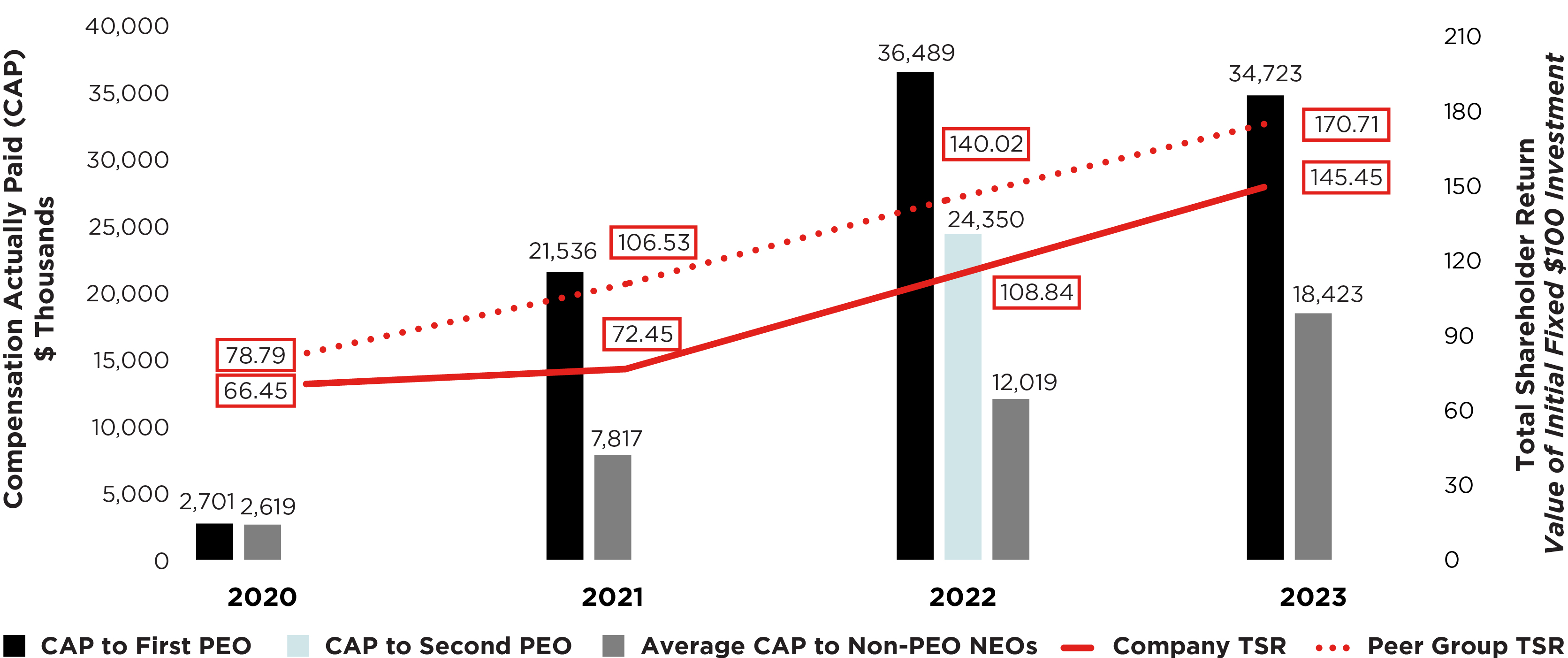
CAP versus Net Income (Loss) 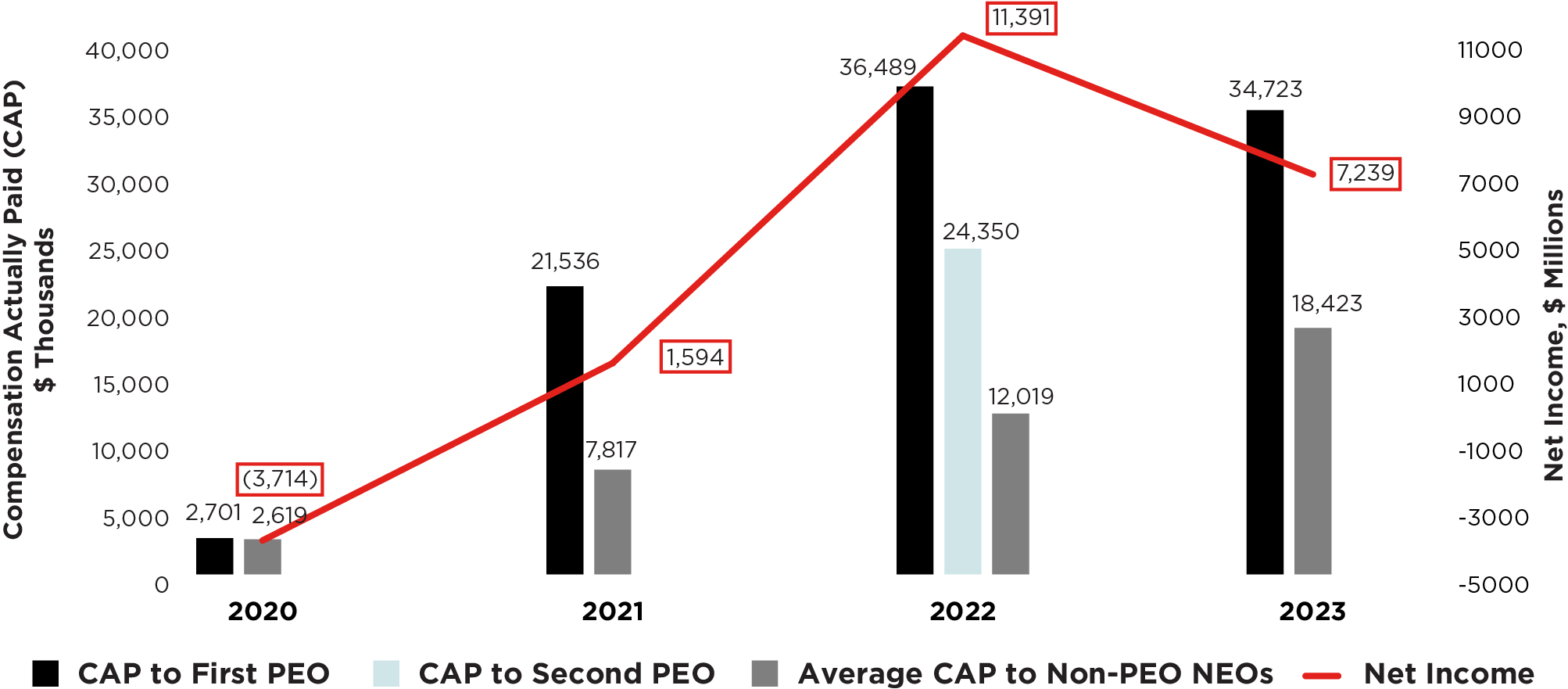
Pay versus Performance 89 CAP versus Annual Adjusted PSP ROCE 
Plan InformationMost Important Performance Measures 90 Equity Compensation Plan Information 2021:Plan Category Number of Securities to
be Issued upon Exercise
of Outstanding Options,
Warrants and Rights(1,2) Weighted-Average
Exercise Price of
Outstanding Options,
Warrants and Rights(3) Number of Securities
Remaining Available for
Future Issuance Under
Equity Compensation
Plans (Excluding
Securities Reflected in
Column (a)(4)Equity compensation plans approved by security holders 10,813,488 81.25 25,772,441 Equity compensation plans not approved by security holders — — — Total 10,813,488 81.25 25,772,441 Plan Category
be Issued upon Exercise
of Outstanding Options,
Warrants and Rights(1,2)
Exercise Price of
Outstanding Options,
Warrants and Rights(3)
Remaining Available for
Future Issuance Under
Equity Compensation
Plans (Excluding
Securities Reflected in
Column (a)(4)Equity compensation plans approved by security holders 9,642,401 87.88 12,559,687 Equity compensation plans not approved by security holders — — — Total 9,642,401 87.88 12,559,687 (1)Equity Compensation Plan InformationIncludes awards issued under the Omnibus Stock and Performance Incentive Plan of Phillips 66 and awards issued under the 2013 Omnibus Stock and Performance Incentive Plan of Phillips 66.91(2)Includes an aggregate of 6,264,206 Incentive Stock Options issued to employees, 3,990 Restricted Stock Awards granted under historical LTI plans, and 812,370 PSUs. The number of securities to be issued includes 3,732,922 RSUs, of which 147,379 were issued to non-employee directors. Some awards held by ConocoPhillips employees at our spin-off were adjusted or substituted with a combination of ConocoPhillips and Phillips 66 equity. Awards representing a total of 13,071,435 shares were issued to ConocoPhillips employees, of which 1,042,810 remain outstanding as of December 31, 2021. The awards issued to ConocoPhillips employees are included in the outstanding awards listed above.(3)The weighted-average exercise price reflects the weighted-average price for outstanding Incentive Stock Options and Nonqualified Stock Options only. It does not include stock awards outstanding.(4)Total includes forfeited shares under the Omnibus Stock and Performance Incentive Plan of Phillips 66 that are now available for grant under the 2013 Omnibus Stock and Performance Incentive Plan of Phillips 66.82 Phillips 66 2022 Proxy Statement

of Ernst & YoungLLP.LLP for fiscal year 2024.Audit CommitteeA&FC is directly responsible for the appointment, compensation, retention and oversight of the independent registered public accounting firm retained to audit the Company’s financial statements. The Audit CommitteeA&FC has appointed Ernst & Young LLP to serve as the Company’s independent registered public accounting firm for fiscal year 2022.2024. Ernst & Young has acted as the Company’s independent registered public accounting firm continuously since 2011.Audit CommitteeA&FC annually considers the independence of the Company’s independent auditors prior to the firm’s engagement, and periodically considers whether a regular rotation of the independent auditors is necessary to assure continuing independence. The Audit CommitteeA&FC and its Chair are directly involved in the selection of Ernst & Young’s lead engagement partner.Audit CommitteeA&FC and the Board of Directors believe that the continued retention of Ernst & Young is in the best interests of the Company and its shareholders. We are asking you to vote on a proposal to ratify the appointment of Ernst & Young.Audit CommitteeA&FC believe it provides an opportunity for shareholders to vote on an important aspect of corporate governance. If the shareholders do not ratify the selection of Ernst & Young, the Audit CommitteeA&FC will reconsider the selection of that firm as the Company’s independent registered public accounting firm. Even if the selection is ratified, the Audit CommitteeA&FC in its discretion may select a different independent registered public accounting firm at any time during the year if it determines that such a change would be in the best interests of the Company and its shareholders.ERNST & YOUNG LLP FEES 20212023 included an audit of our consolidated financial statements, an audit of the effectiveness of the Company’s internal control over financial reporting, and services related to periodic filings made with the SEC. Additionally, Ernst & Young provided certain other services as described below. In connection with the audit of the 20212023 consolidated financial statements, we entered into an engagement agreement with Ernst & Young that set forth the terms by which Ernst & Young performed audit services for us.92 83Audit CommitteeA&FC is responsible for negotiating the audit fee associated with its retention of Ernst & Young. Ernst & Young’s fees for professional services totaled $12.2$10.0 million for 20212023 and $12.7$13.1 million for 2020,2022, which consisted of the following:Fees (in millions) 2021 2020 Audit Fees(1) $ 11.4 $ 11.4 Audit-Related Fees(2) 0.6 1.0 Tax Fees(3) — 0.1 All Other Fees 0.2 0.2 Total $ 12.2 $ 12.7 (1)Fees for audit services related to the fiscal year consolidated audit, the audit of the effectiveness of internal controls over financial reporting, quarterly reviews, registration statements, comfort letters, statutory and regulatory audits and accounting consultations. Includes audit fees of Phillips 66 Partners LP of $0.8 million for 2021 and $0.9 million for 2020, which were approved by the Audit Committee of the General Partner of Phillips 66 Partners LP.(2)Fees for audit-related services related to audits in connection with proposed or consummated dispositions, benefit plan audits, other subsidiary audits, special reports, and accounting consultations.(3)Fees for tax services related to tax compliance services and tax planning and advisory services.Fees (in millions) 2023 2022 $ 9.0 $ 12.2 $ 0.5 $ 0.5 $ — $ 0.3 $ 0.5 $ 0.1 Total $ 10.0 $ 13.1 Audit CommitteeA&FC has considered whether the non-audit services provided to Phillips 66 by Ernst & Young impaired the independence of Ernst & Young and concluded they did not.Pre-Approval PolicyAudit CommitteeA&FC has adopted a pre-approval policy that provides guidelines for the audit, audit-related, tax and other non-audit services that Ernst & Young may provide to the Company. All of the fees in the table above were approved in accordance with this policy. The policy (a) identifies the guiding principles that the Audit CommitteeA&FC must consider in approving services to ensure that Ernst & Young’s independence is not impaired; (b) describes the audit, audit-related, tax and other services that may be provided and the non-audit services that are prohibited; and (c) sets forth pre-approval requirements for all permitted services. Under the policy, the Audit CommitteeA&FC must pre-approve all services to be provided by Ernst & Young. The Audit CommitteeA&FC has delegated authority to approve permitted services to its Chair. Such approval must be reported to the entire Audit CommitteeA&FC at its next scheduled meeting.Proposal 3: Ratification of the Appointment of Ernst & Young 93 AUDIT AND FINANCE COMMITTEE REPORT Audit CommitteeA&FC assists the Board of Directors in fulfilling its responsibility to provide independent, objective oversight of the financial reporting functions and internal control systems of Phillips 66.Audit CommitteeA&FC currently consists of fivesix non-employee directors. The Board has determined that each member of the Audit CommitteeA&FC satisfies the requirements of the NYSE as to independence and financial literacy and expertise. The Board has further determined that each of Charles M. Holley, John E. Lowe, and Denise L. Ramos is an audit committee financial expert as defined by the SEC.Audit CommitteeA&FC are set forth in the written charter adopted by the Board of Directors, which is available in the “Investors”section of the Company’s website under the caption “Corporate Governance.”One of the Audit Committee’sA&FC's primary responsibilities is to assist the Board in its oversight of the integrity of the Company’s financial statements. The following report summarizes certain of the Audit Committee’sA&FC’s activities in this regard for 2021.Audit CommitteeA&FC has reviewed and discussed with management the audited consolidated financial statements of Phillips 66 included in the Company’s Annual Report on Form 10-K for the year ended December 31, 2021,2023, and management’s assessment of the effectiveness of the Company’s internal control over financial reporting as of December 31, 2021,2023, included therein.84 Phillips 66 2022 Proxy StatementAudit CommitteeA&FC has discussed with Ernst & Young LLP, independent registered public accounting firm for Phillips 66, the matters required to be discussed by the applicable requirements of the Public Company Accounting Oversight Board and the SEC. The Audit CommitteeA&FC has received the written disclosures and the letter from Ernst & Young required by applicable requirements of the Public Company Accounting Oversight Board regarding the independent accountant’s communications with the Audit CommitteeA&FC concerning independence, and has discussed with that firmErnst & Young LLP its independence from Phillips 66.Audit CommitteeA&FC recommended to the Board of Directors that the audited consolidated financial statements of Phillips 66 be included in the Company’s Annual Report on Form 10-K for the year ended December 31, 2021.AUDIT AND FINANCE COMMITTEE94 Proposal 3: Ratification of the Appointment of Ernst & Young 85We are asking you to approve the 2022 Omnibus Stock and Performance Incentive Plan of Phillips 66 (the “2022 Plan”), as set forth in Appendix A. The 2022 Plan will only become effective upon approval by stockholders. The 2022 Plan was approved by the Board of Directors on February 9, 2022, and the 2022 Plan will, among other things, allow the issuance of up to 15 million shares of common stock for compensation to our employees and directors. The 2022 Plan will replace the Omnibus Stock and Performance Incentive Plan of Phillips 66 (the “2013 Plan”), which was approved at the 2013 Annual Meeting of Shareholders. If the 2022 Plan is approved by stockholders, the 2013 Plan will no longer be used for further awards. As of March 15, 2022, there were 23,388,404 shares of common stock available for awards under the 2013 Plan. Additionally, shares subject to awards under the 2022 Plan or the 2013 Plan may become available from time to time for awards under the 2022 Plan to the extent that such shares are not actually delivered due to forfeiture, termination or expiration of the award.The 15 million shares available for issuance under the 2022 Plan would represent approximately 3.1% of the Company’s outstanding shares as of March 15, 2022. We recognize that equity awards may have a dilutive impact on existing shareholders. We believe, however, that we have demonstrated our ability to carefully manage the growth of our equity compensation program. We further believe that our current level of dilution and the pace at which we grant equity awards (referred to as the “burn rate”) is reasonable, in line with those of our peer companies, and consistent with the Board’s preference for conservative compensation practices. We are committed to effectively monitoring our equity compensation share reserve, including our burn rate, to ensure that we maximize shareholder value by granting the appropriate number of equity awards necessary to attract, reward and retain employees.The primary objectives of the 2022 Plan are:•To attract and retain the services of employees and directors; and•To provide incentive awards to our employees and directors in a method that aligns their interests with our stockholders’ interests.In accordance with these objectives, the 2022 Plan is designed to enable our employees and directors to acquire or increase their ownership of our common stock and to compensate employees and directors for the creation of stockholder value. The 2022 Plan is also designed with the intent of placing more executive compensation at risk over the long-term. The 2022 Plan provides variable long-term compensation to employees and directors that is consistent with the compensation philosophy adopted by the Compensation Committee as set out in Compensation Discussion and Analysis beginning on page 41 of this proxy statement. This philosophy is based on the fundamental principles of pay for performance and external competitiveness, and the Board of Directors sees this proposal as a means of further aligning the goals of our employees and directors with those of our stockholders.While all of our employees and directors will be eligible to participate in the 2022 Plan according to its terms, it is expected that most awards under the 2022 Plan will be made to our key employees, typically senior officers, managers, and technical and professional personnel. As of March 15, 2022, the following86 Phillips 66 2022 Proxy Statementstock options, stock appreciation rights (SARs), restricted stock awards, and restricted stock unit awards (including those under all prior plans, whether reserves have been used or still exist to allow further issuance of awards) were outstanding under the 2013 Plan:•Options to purchase 6,887,541 shares of our common stock at a weighted average price of $82.95 and a weighted average term of 6.9 years, of which 4,667,504 shares were subject to vested options;•Restricted stock awards of 3,990 shares of our common stock;•Restricted stock units of 4,873,980 shares; and•455,078 shares of our common stock for stock purchase programs for international employees.What vote is required to approve this proposal?Approval of this proposal requires the affirmative vote of a majority of the shares present in person or represented by proxy at the Annual Meeting and entitled to vote on the proposal. Additionally, under the rules of the NYSE, approval must represent a majority of votes cast at the meeting. Broker non-votes are not considered votes cast for this purpose.What does the Board recommend?THE BOARD RECOMMENDS THAT YOU VOTE “FOR” THE APPROVAL OF OUR 2022 OMNIBUS STOCK AND PERFORMANCE INCENTIVE PLAN.Summary of Our 2022 Omnibus Stock and Performance Incentive PlanThe following summary of the 2022 Plan is qualified by reference to the full text of the 2022 Plan, which is attached as Appendix A.Corporate Governance Best PracticesThe use of stock-based incentive awards promotes best practices in corporate governance by aligning participants’ interests with the interests of Company stockholders. Specific features in the 2022 Plan that are consistent with industry best practices include, but are not limited to:•incentive and nonqualified Stock Options and Stock Appreciation Rights (SARs) must have an exercise price per share that is no less than the fair market value of the common stock on the date of grant;•there can be no repricing, replacement or regranting through cancellation or modification without stockholder approval, if the effect would be to reduce the exercise price for the shares underlying the option or SAR;•no option or SAR may be bought back with cash without shareholder approval;•shares withheld as full or partial payment of withholding or other taxes or as payment for the exercise or conversion price of an award shall not be added back to the number of shares available for issuance under the plan;•Awards valued by reference to common stock that may be settled in equivalent cash value will count as shares of common stock delivered as if the award were settled with shares;•no dividends or dividend equivalents may be extended to or made part of any unearned performance award;•no award or any other benefit under the 2022 Plan shall be assignable or otherwise transferable except by will, by beneficiary designation, or by the laws of descent and distribution or pursuant to a qualified domestic relations order as defined by the Code;•change in control provisions are subject to a “double trigger” requiring a change in control event as well as termination of employment before taking effect; and•all programs offered under the 2022 Plan are subject to clawback.Equity Compensation Plan Information 87EligibilityAll employees of the Company and its subsidiaries are eligible to participate in and receive awards under the 2022 Plan. Awards may be subject to such terms and conditions as may be established by the Compensation Committee. The Compensation Committee is responsible for designating which employees of the Company are participants in the 2022 Plan. The Compensation Committee expects to limit participation to those employees whose level of job responsibility places them within an executive, management, technical, or professional group of employees. This is consistent with our current practice under the 2013 Plan, under which approximately 2,700 of our employees received awards for the annual compensation program payouts in February 2022 (described in Compensation Discussion and Analysis). Non-employee Directors are also eligible to participate in and receive awards under the 2022 Plan.Authorized Shares and LimitsSubject to stockholder approval, we have reserved a total of 15 million shares of common stock for issuance in connection with the 2022 Plan. The number of shares authorized to be issued under the 2022 Plan is subject to adjustment for stock splits, stock dividends, recapitalizations, mergers, or similar corporate events. Upon stockholder approval of the 2022 Plan, the 2013 Plan will no longer be available for use for new awards, although prior awards will continue to be valid.The 2022 Plan contains limitations with respect to awards that may be made. If stockholders approve the 2022 Plan, the following limitations will apply to any awards made under the 2022 Plan:•No participant who is an employee of the Company or its subsidiaries may be granted, during any calendar year, awards consisting of stock options or Stock Appreciation Rights (SARs) that are exercisable for or relate to more than 2 million shares of common stock;•No participant who is an employee of the Company or its subsidiaries may be granted, during any calendar year, awards consisting of stock awards covering or relating to more than 2 million shares of common stock;•No participant who is an employee of the Company or its subsidiaries may be granted awards consisting of cash or in any other form permitted under the 2022 Plan, other than awards consisting of stock options or SARs or stock awards, for any calendar year having a value determined on the date of grant in excess of $30 million;•No participant who is a non-employee Director may be granted, during any calendar year, awards consisting of stock options or SARs that are exercisable for or relate to more than 100,000 shares of common stock; and•No participant who is a non-employee Director may be granted, during any calendar year, awards consisting of stock awards covering or relating to more than 50,000 shares of common stock.Potential DilutionOur potential dilution, or “overhang,” from outstanding awards and shares available for future awards under the 2022 Plan is approximately 5.3%. This percentage is calculated on a fully-diluted basis, by dividing the total shares underlying outstanding stock-based awards (11,765,511) plus the shares available for future awards under the 2022 Plan (15,000,000) (together, the numerator) by the total shares of Company common stock outstanding as of March 15, 2022 (481,086,327) plus the number of shares in the numerator. The closing price per share of our common stock on March 15, 2022 as reported by the NYSE corporate transaction system was $75.34.88 Phillips 66 2022 Proxy StatementTypes of Awards and Award TermsThe 2022 Plan authorizes the Compensation Committee to grant to participants the following types of awards (“Awards”): (i) restricted stock or restricted stock units; (ii) performance shares; (iii) performance units; (iv) stock options; (v) SARs; (vi) cash-based awards; and (vii) other forms of equity-based or equity-related Awards that the Compensation Committee determines to be consistent with the purposes of the 2022 Plan.The Compensation Committee determines the types of Awards made under the 2022 Plan and designates the Senior Officers who are to be the recipients of such Awards. The Compensation Committee has delegated authority to designate other recipients of Awards under the 2013 Plan to the CEO (acting as a special awards committee) and expects to continue that practice under the 2022 Plan. The Board of Directors determines the types of Awards made to non-employee Directors under the 2022 Plan. We refer to the Board of Directors or the committee authorized to grant Awards under the 2022 Plan (or the 2013 Plan) as the Granting Committee.Awards are subject to the terms, conditions, and limitations as determined by the Granting Committee. Awards may also be made in combination or in tandem with, in replacement of, or as alternatives to, grants or rights under the 2022 Plan or any of our other employee plans or our subsidiaries’ employee plans. An Award may provide for the grant or issuance of additional, replacement, or alternative Awards upon the occurrence of specified events, including the exercise of the original Award. At the discretion of the Granting Committee, a recipient of an Award may be offered an election to substitute an Award for another Award or Awards of the same or different type. All or part of an Award may be subject to conditions established by the Granting Committee, which may include, but are not limited to, continuous service with the Company, achievement of specific business objectives, increases in specified indices, attainment of specified growth rates, and other comparable measurements of performance. Upon the termination of service by a recipient, any unexercised, deferred, unvested, or unpaid Awards will be treated as set forth in the applicable Award agreement.Stock Options. A stock option granted under the 2022 Plan may consist of either an incentive stock option that complies with the requirements of Section 422 of the Internal Revenue Code or a nonqualified stock option that does not comply with those requirements. Incentive stock options and nonqualified stock options must have an exercise price per share that is not less than the fair market value of the common stock on the date of grant and, subject to certain adjustment provisions of the 2022 Plan that apply only upon occurrence of specified corporate events, the exercise price of an option granted under the 2022 Plan may not be decreased. The term may extend no more than 10 years from the grant date.Stock Appreciation Rights. A SAR may be granted under the 2022 Plan to the holder of a stock option with respect to all or a portion of the shares of common stock subject to the stock option or may be granted separately. The terms, conditions, and limitations applicable to any SARs, including the term of any SARs and the date or dates upon which they become exercisable, will be determined by the Granting Committee. The term may extend no more than 10 years from the grant date.Restricted Stock, Restricted Stock Units, and Stock Awards. Stock awards consist of restricted and non-restricted grants of common stock or units denominated in common stock. The terms, conditions, and limitations applicable to any stock awards will be determined by the Granting Committee. Without limiting the foregoing, rights to dividends or dividend equivalents may be extended to and made part of any stock award at the discretion of the Granting Committee. The Granting Committee may also establish rules and procedures for the crediting of interest or other earnings on deferred cash payments and dividend equivalents for stock awards. Subject to earlier vesting upon death, disability, layoff, retirement or change in control, stock awards that are performance-based will vest over a minimum period of one year.Equity Compensation Plan Information 89Cash Awards. Cash awards consist of grants denominated in cash. The terms, conditions, and limitations applicable to any cash awards will be determined by the Granting Committee.Unless otherwise provided in an award agreement, in the event of a change in control of the Company, followed by the termination of employment (double trigger), Awards held by a participant that were not previously vested or exercisable become fully vested and exercisable and generally remain exercisable for the remainder of their term if the participant is still in the service of the Company at the time of the change in control.The 2022 Plan is not qualified under Section 401(a) of the Internal Revenue Code and is not subject to the provisions of the Employee Retirement Income Security Act of 1974, as amended.Administration of the 2022 PlanThe Compensation Committee will administer the 2022 Plan with respect to employee Awards, as it has done under the 2013 Plan. The Compensation Committee has full and exclusive power to administer the 2022 Plan and take all actions specifically contemplated by the 2022 Plan or necessary or appropriate in connection with its administration. The Compensation Committee has the full and exclusive power to interpret the 2022 Plan and to adopt such rules, regulations, and guidelines for carrying out the 2022 Plan as the Compensation Committee may deem necessary or proper in keeping with its objectives. The Compensation Committee may delegate its duties under the 2022 Plan to our CEO and other Senior Officers with respect to Awards other than those to Senior Officers. The Compensation Committee also may engage or authorize the engagement of third-party administrators to carry out administrative functions under the 2022 Plan. The Compensation Committee may also correct any defect or supply any omission or reconcile any inconsistency in the 2022 Plan or in any Award granted under the 2022 Plan. Any decision of the Compensation Committee in the interpretation and administration of the 2022 Plan will be within its sole and absolute discretion and will be final, conclusive, and binding on all parties concerned. With respect to director Awards, the Board of Directors will have the same powers, duties and authority as the Compensation Committee has with respect to employee Awards.Term of the 2022 PlanNo Award may be made under the 2022 Plan following the 10th anniversary of the date stockholders approve the 2022 Plan.Amendment of the 2022 PlanThe Board of Directors may amend, modify, suspend, or terminate the 2022 Plan for the purpose of meeting or addressing any changes in legal requirements or for any other purpose permitted by law, except that (i) no amendment or alteration that would adversely affect the rights of any participant under any Award previously granted to such participant will be made without the consent of the participant and (ii) no amendment or alteration will be effective prior to its approval by the stockholders of the Company to the extent such approval is required by applicable legal requirements or the applicable requirements of the securities exchange on which the Company’s common stock is listed. Furthermore, without the prior approval of the Company’s stockholders, options issued under the 2022 Plan will not be repriced, replaced, or regranted through cancellation or by decreasing the exercise price of a previously granted option (except for adjustment for stock splits, stock dividends, recapitalizations, mergers, or similar corporate events).Federal Income Tax Consequences of the 2022 PlanThe following is a discussion of material U.S. federal income tax consequences to participants in the 2022 Plan. This discussion is based on statutory provisions, Treasury regulations thereunder, judicial decisions, and rulings of the Internal Revenue Service in effect on the date of this proxy statement. This discussion does not purport to be complete, and does not cover, among other things, state, local or foreign tax treatment of participation in the 2022 Plan. Furthermore, differences in participants’ financial situations may cause federal, state, local and foreign tax consequences of participation in the 2022 Plan to vary.90 Phillips 66 2022 Proxy StatementParticipants will not realize taxable income upon the grant of a nonqualified stock option or SAR. Upon the exercise of a nonqualified stock option or SAR, the employee or non-employee Director will recognize ordinary income, subject, in the case of employees, to tax withholding by the Company, in an amount equal to the excess of the amount of cash and the fair market value on the date of exercise of the common stock received over the exercise price, if any, paid therefor. The employee or non-employee Director will generally have a tax basis in any shares of common stock received pursuant to the exercise of a SAR, or pursuant to the cash exercise of a nonqualified stock option, that equals the fair market value of such shares on the date of exercise. Generally, we will be entitled to a deduction for U.S. federal income tax purposes that corresponds as to timing and amount with the compensation income recognized by the participant under the foregoing rules.Employees will not have taxable income upon the grant of an incentive stock option. Upon the exercise of an incentive stock option, the employee will not have taxable income, although the excess of the fair market value of the shares of common stock received upon exercise of the incentive stock option over the exercise price will increase the alternative minimum taxable income of the employee, which may cause such employee to incur alternative minimum tax. The payment of any alternative minimum tax attributable to the exercise of an incentive stock option would be allowed as a credit against the employee’s regular tax liability in a later year to the extent the employee’s regular tax liability is in excess of the alternative minimum tax for that year.Upon the disposition of stock received upon exercise of an incentive stock option that has been held for the requisite holding period (generally one year from the date of exercise and two years from the date of grant), the employee will generally recognize capital gain or loss equal to the difference between the amount received in the disposition and the exercise price paid by the employee for the stock. However, if an employee disposes of stock that has not been held for the requisite holding period, the employee will recognize ordinary income in the year of the disqualifying disposition to the extent that the fair market value of the stock at the time of exercise of the incentive stock option, or, if less, the amount realized in the case of an arm’s-length disqualifying disposition to an unrelated party, exceeds the exercise price paid by the employee for such stock. The employee would also recognize capital gain or, depending on the holding period, additional ordinary income, to the extent the amount realized in the disqualifying disposition exceeds the fair market value of the stock on the exercise date. If the exercise price paid for the stock exceeds the amount realized in the disqualifying disposition, in the case of an arm’s-length disposition to an unrelated party, such excess would ordinarily constitute a capital loss.We are generally not entitled to any federal income tax deduction upon the grant or exercise of an incentive stock option unless the employee makes a disqualifying disposition of the stock. If an employee makes such a disqualifying disposition, we will generally be entitled to a tax deduction that corresponds as to timing and amount with the compensation income recognized by the employee under the rules described in the preceding paragraph.An employee will recognize ordinary compensation income upon receipt of cash pursuant to a cash award or performance award or, if earlier, at the time such cash is otherwise made available for the employee to draw upon it. An employee will not have taxable income upon the grant of a stock award in the form of units denominated in common stock but rather will generally recognize ordinary compensation income at the time the employee receives common stock or cash in satisfaction of such stock unit award in an amount equal to the fair market value of the common stock or cash received. In general, a participant will recognize ordinary compensation income as a result of the receipt of common stock pursuant to a stock award or performance award in an amount equal to the fair market value of the common stock when such stock is received; provided, however, that if the stock is not transferable and is subject to a substantial risk of forfeiture when received, the participant will recognize ordinary compensation income in an amount equal to the fair market value of the common stock when it first becomes transferable or is no longer subject to a substantial risk of forfeiture, unless the participant makes an election to be taxed on the fair market value of the common stock when such stock is received.Equity Compensation Plan Information 91An employee will be subject to tax withholding for federal, and generally for state and local, income taxes at the time the employee recognizes income under the rules described above with respect to common stock or cash received pursuant to a cash award, performance award, stock award, or stock unit award. Dividends that are received by a participant prior to the time that receipt of the common stock is taxed to the participant under the rules described in the preceding paragraph are taxed as additional compensation, not as dividend income. A participant’s tax basis in the common stock received will equal the amount recognized by the employee as compensation income under the rules described in the preceding paragraph, and the employee’s holding period in such shares will commence on the date income is so recognized.Generally, we will be entitled to a deduction for U.S. federal income tax purposes that corresponds as to timing and amount with the compensation income recognized by the participant under the foregoing rules. Section 162(m) of the Internal Revenue Code provides that certain compensation received in any year by a “covered employee” in excess of $1,000,000 is non-deductible by the Company for federal income tax purposes.Participation in the 2022 PlanThe allocation of Awards for 2022 under the 2022 Plan for participants other than non-employee Directors is not currently determinable since allocation is dependent on future decisions of the Granting Committee, subject to applicable provisions of the 2022 Plan. Our executive officers and non-employee directors have an interest in this proposal because they are eligible to receive discretionary Awards under the Stock Plan. Non-employee Directors receive annual grants of restricted stock units denominated in common stock with a value on the date of grant of $200,000. For Awards that were granted under the 2013 Plan to our named executive officers, during fiscal 2021, please see the Summary Compensation Table and the Grants of Plan Based Awards Table. The following table provides information for Awards to the listed groups under the 2013 Plan during fiscal 2021: Dollar Value No. of Units All current executive officers as a group $ 41,445,815 1,097,271 All non-employee directors as a group $ 2,186,506 30,026 All other employees as a group $ 137,591,562 2,533,380 92 Phillips 66 2022 Proxy StatementWe communicate proactively and transparently on issues of interest to the Company and our shareholders, including the topics presented in the shareholder proposals on the following pages. You can read more about our engagement with our shareholders under Shareholder Outreach and Responsiveness. As discussed in that section, we communicate with shareholders throughout the year to gather feedback and enhance our disclosures or other practices on an ongoing basis. When we receive shareholder proposals, our process includes contacting the proponent to discuss the proposal, the concerns raised, and whether additional engagements could resolve the proponent’s concerns. This engagement seeks to understand the proponent’s interests and how the Company can address or alleviate concerns raised in the proposal, either by discussion of actions and efforts the Company has planned or underway, or by providing information of which the proponent may not be aware. We followed our normal practice of engagement with the proponentsproponent of the proposalsproposal included on the following pages.are shareholder proposals thatproposal will be voted on at the Annual Meeting only if properly presented by or on behalf of the shareholder proponent. These proposals contain certain assertions that we believe are incorrect, and we have not attempted to refute all of the inaccuracies.The proposals we received relate to environmental, sustainability, or governance issues, and request that we take particular action, which may include preparing a report. We share some of the concerns addressed in the proposals, and we have taken actions that we believe address many of the underlying concerns of the proposals. However, we disagree with how the proposal seeks to prescribe the manner in which we approach or report on the issue. The Board generally opposesrecommends voting against proposals requesting specially developedspecially-developed reports or initiatives as theythat it believes are overly prescriptive, since these do not necessarily add shareholder value and may not reflect the actions we are already taking to address such issues, the decisions we have made in prioritizing our initiatives, or the unique and evolving nature of our operations. Additionally, producing special reports is often not a good use of our resources when the issues are addressed through existing communications. Moreover, we believe that shareholders benefit from reading about these issues in the context of Phillips 66’s other activities rather than in isolation.limited company resources. Many of the issues raised in the following proposalsproposal are already discussed in the sustainability report issued by our 50-50 joint venture CPChem and our Sustainability Report, our Annual Report on Form 10-K, this Proxy Statement and other informationwhich is available on our website at www.phillips66.com.We encourage you to read Information on our website is not incorporated by reference into this Proxy Statement, our Annual Report on Form 10-K, our Sustainability Report and the other information presented on our website.Shareholder Proposal 9395Follow This,Anthony Fokkerweg 1, 1059 CM, Amsterdam, The Netherlands,701 Warren Wilson Rd, Swannanoa, NC 28778, has notified Phillips 66 that it intendshas appointed As You Sow to act as its agent to present the following proposal on behalf of Benta B.V. at the Annual Meeting. Follow This has indicated that Benta B.V.Warren Wilson College holds 400101 shares of Phillips 66 common stock in accordance with the requirements of Rule 14a-8.WHEREAS: We, the shareholders, must protect our assets against devastating climate change, and we therefore support companies to substantially reduce greenhouse gas (GHG) emissions.RESOLVED: Shareholders support the company to set and publish targets that are consistent with the goal of the Paris Climate Agreement: to limit global warming to well below 2°C above pre-industrial levels and to pursue efforts to limit the temperature increase to 1.5°C.These quantitative targets should cover the medium- and long-term greenhouse gas (GHG) emissions of the company’s operations and the use of its energy products (Scope 1, 2, and 3).Shareholders request that the company report on the strategy and underlying policies for reaching these targets and on the progress made, at least on an annual basis, at reasonable cost and omitting proprietary information.You have our support.SUPPORTING STATEMENT:The policies of energy companies - the largest greenhouse gas (GHG) emitters – are crucial to confronting the climate crisis. Therefore shareholders support oil and gas companies to substantially reduce their emissions.We, the shareholders, understand this support to be essential in protecting all our assets in the global economy from devastating climate change.We therefore support the Company to set emission reduction targets for all emissions: the emissions of the company’s operations and the emissions of its energy products (Scope 1, 2, and 3). Reducing Scope 3 emissions, the vast majority, is essential to limiting global heating.Scientific consensusThe world’s leading international scientific bodies recently released reports which clearly state the need for deep cuts in emissions in order to limit global warming to safe levels.Financial momentumA growing international consensus has emerged among financial institutions that climate-related risks are a source of financial risk, and therefore limiting global warming is essential to risk management and responsible stewardship of the economy.Backing from investors that insist on targets for all emissions continues to gain momentum: 2021 saw unprecedented investor support for climate resolutions. In the US, three of these climate resolutions passed with a historic majority. In Europe, support for these climate resolutions continued to build.94 Phillips 66 2022 Proxy StatementLegal riskIn 2021, a Dutch court ordered Shell to severely reduce their worldwide emissions (Scope 1, 2, and 3) by 2030. This indicates that oil majors and large investors have an individual legal responsibility to combat dangerous climate change by reducing emissions and confirms the risk of liability.We believe that the Company could lead and thrive in the energy transition. We therefore encourage you to set targets that are inspirational for society, employees, shareholders, and the energy sector, allowing the company to meet an increasing demand for energy while reducing GHG emissions to levels consistent with curbing climate change.You have our support.BOARD OF DIRECTOR’S RESPONSEThe Board has carefully considered this proposal and, for the reasons set forth below, does not believe it is in the best interests of the Company and its shareholders, and unanimously recommends a vote “AGAINST” the proposal.Phillips 66 supports the goals of the Paris Climate Agreement and is committed to being a part of the solution to help the world address climate change.Phillips 66 is well positioned to develop lower-carbon operations, make lower-carbon products and thrive in a market-based, economy-wide energy transition. The Company already has set meaningful medium- and long-term targets in the past twelve months and will report progress against those targets. Adopting this proposal and setting goals with no clear path to achieving them will not achieve a faster energy transition.We have meaningful, achievable, and comprehensive GHG emissions reduction targets for 2030 (Scope 1, 2 and 3) and 2050 (Scope 1 and 2).In support of the work of the entire Board of Directors in providing oversight of the Company and risks associated with climate change, the Public Policy and Sustainability Committee is tasked with reviewing environmental trends and related risks. This governance framework informs the Board’s oversight of target setting for the reduction of GHG emissions. Our strategy in support of the goals of the Paris Climate Agreement is also grounded in an analysis of a range of scenarios, including the International Energy Agency’s Net Zero by 2050 scenario.The Company set and published meaningful, achievable, and comprehensive GHG emissions reduction targets for 2030 and 2050.In 2021, we announced 2030 targets to reduce the GHG emissions intensity of our operations (Scope 1 and 2) and products (Scope 3) by 30% and 15%, respectively, from a 2019 baseline. These medium-term targets are tied to planned projects and projects under development that are consistent with the Company’s disciplined approach to capital allocation and focus on returns. The following are projects and reductions completed or underway that lower Scope 1, 2 and 3 absolute emissions and emissions intensity:Operations:•Utilizing renewable sources of power•Developing and executing energy efficiency projects across the portfolio•Capturing carbon from operations at various facilitiesShareholder Proposals 95Products:•Producing renewable fuels at Humber Refinery in the U.K. and San Francisco Refinery in Rodeo, CA, with plans to convert the latter into one of the world’s largest renewable fuels facilities through the Rodeo Renewed project•Manufacturing products that advance the electric vehicle battery supply chain•Improving engine energy efficiency to lower the carbon intensity of the transportation sector•Low-carbon hydrogen and technology development partnershipsOur 2050 target requires changes that are beyond our sphere of influence and control, but which we believe are achievable. Setting targets that require even more significant technological and social transformation outside our control could create reputational risk and potential harm to shareholders.Phillips 66 also recently announced a 2050 target to reduce the GHG emissions intensity of its operations (Scope 1 and 2). This long-term target is tied to our company operations, over which we have the most influence and direct control. Phillips 66 included electricity and steam purchase commitments in the 2050 target, despite having less control over electricity providers and grid development.Achieving our 2050 target will require changes beyond Phillips 66’s sphere of influence and control, such as:•Advancements enabling broad commercial deployment and use of lower-carbon technologies•Global policies that fund and incentivize development of a lower-carbon energy system•Change in consumer behavior and energy choices•Available materials throughout the supply chainAll of these are necessary to support the Paris Climate Agreement goals while we continue to provide affordable, reliable, and abundant energy that drives human progress.Based on our analysis of current technology and viable future solutions, we believe that our current target is ambitious and achievable. Phillips 66 recognizes the importance of credible disclosure to shareholders. Reputational and potential economic harm could result from setting goals outside our current understanding of economic pathways to meet those targets.Phillips 66 is investing significant capital to support the energy transitionPhillips 66 is progressing the energy transition by following an integrated approach that encompasses research, lower-carbon investments and improving the energy efficiency of existing assets. Disciplined capital allocation and a well-structured compensation program drive alignment with our energy transition goals.We fund research and feasibility assessments for near- and long-term lower-carbon energy solutions (i.e., batteries, solid oxide fuel cells and others) through our Energy Research and Innovation business unit.The Emerging Energy organization is evaluating, investing in, and commercializing lower-carbon technologies. Recent examples include:•Investment in or collaborations with Rodeo Renewed, NOVONIX, Faradion, Southwest Airlines, British Airways, H2 Energy and Plug Power to advance and supply lower-carbon energy solutions•Active participation in industry consortia to identify potential technological and implementation constraints impacting widescale adoption of lower-carbon technologies such as carbon capture and hydrogen. This collaboration includes proposing mitigation plans to be considered by policymakers, such as Humber Zero, Global CCS Institute, and Houston Carbon Capture Hub.96 Phillips 66 2022 Proxy StatementPhillips 66’s capital program includes progressing energy transition projects. The 2022 capital program of $1.9 billion includes $916 million for growth capital, of which 45% supports lower-carbon opportunities.All employees are incentivized for achieving lower carbon emissions.Our commitment to sustainability is reflected in changes to our executive compensation program. In 2021, the Compensation Committee increased the weighting of the environmental factor in our VCIP from 5 percent to 15 percent. In addition, we have added metrics for (1) advancing lower-carbon investments, optimization, and innovation and (2) reducing manufacturing emissions intensity and setting GHG emissions reduction targets. These elements are part of the annual incentive program for all employees, not just the NEOs and the CEO.We are committed to reassessing our targets in step with technology developments, policy changes and consumer energy demand trendsAs we progress toward the 2030 and 2050 emissions reduction targets, we will regularly assess our performance against the targets.Continuous improvement is inherent in our business processes. We will reevaluate our targets as technology is developed, consumer behavior changes and policies support lower-carbon solutions. Phillips 66 is on the right path in the energy transition and is transparent about its progress.Accordingly, the Board of Directors recommends voting AGAINST this proposal.Shareholder Proposals 97
PROPOSAL 6Shareholder Proposal Regarding Report on Shift to Recycled Polymer for Single Use PlasticsThe Board recommends that you vote “AGAINST” proposal 6.As You Sow, located at 2020 Milvia Street, Suite 500, Berkeley, California, has notified Phillips 66 that it intends to present the following proposal on behalf of Handlery Hotels, Inc. at the Annual Meeting. As You Sow has indicated that Handlery Hotels, Inc. holds 9,888 shares of Phillips 66 common stock in accordance with the requirements of Rule 14a-8.WhereasWHEREAS: Plastics,Plastic, with a lifecycle social cost at least ten times higher than its market price, actively threatenthreatens the world’s oceans, wildlife, and public health.1 (1)Concern about the growing scale and impact of global plastic pollution has elevated the issue to crisis levels.2 (2)Of particular concern are single-use plastics (SUPs)3 , which make up the largest componentbulk of the 1124-34 million metric tons of plastic ending up in waterways annually.4 (3)Without drastic action, this amount could triple by 2040.5virgin plastic use.6,7Several studies demonstrate that a shift away from virginis critical to curbingsupply chain. BP has recognized the flow of plastic into oceans.8 Onepotential disruption global SUP reductions could have on the oil industry, finding a global SUP ban by 2040 would reduce oil demand growth by 60 percent.(9)most robust pathways is presented in the widely respected Breaking the Plastic Wave report, which finds that plastic leakage into the ocean can feasibly be reduced 80 percent under its System Change Scenario (SCS), which is based on a global shift to recycled plastics (almost tripling demand for recycled content) coupled withSCS, including a one-third absolute demand reduction of virgin demand (mostly of virgin SUPs).9,10The future under the SCS — one built on recycled plastics and circular business models – looks drastically different than today’s linear take-make-wasteimmediate reductions in new investment in virgin production, model and would peak virgin plastic demand globally before 2030.Chemical Company (CPChem), jointly owned by Phillips 66 and Chevron, is a major producer of virgin plastics.11 Chemical’s (CPChem’s) planned investments. CPChem is estimated to be the 15th16th largest global producer of SUP-bound polymers, with 1.84.6 million metric tons produced in 2019, an estimated 42 percent of its total production.12 While CPChem has made significant investments into circular polymers,13 and states a goal to “not only end post-consumer plastic waste, but also keep plastic where it belongs,”14 its core2021. Its current business model ofprojects rapid expansion in producing virgin plastics (especially SUPs) from fossil fuels is rapidly expanding. fuels.96 a partial owner of CPChem, Phillips 66 faces growing risk from CPChem’s continued investment in virgin plastic production infrastructure.15Resolved The Company also uses pyrolysis oil from waste plastic for new plastics feedstock, a process cited as inefficient, greenhouse gas-intensive, with toxic byproducts and emissions, which increases financial and reputational risk. With board oversight, shareholdersShareholders request that PhillipPhilips 66 prepareissue a report, (atat reasonable cost and omitting proprietary information) describinginformation, addressing whether and how a significant reduction in virgin plastic demand, as set forth in Breaking the Company could shiftPlastic Wave’s System Change Scenario, would affect the Company’s financial position and the assumptions underlying its plastic resin business model from virgin to recycledfinancial statements.as a meansfor SUP markets;reducing plastic pollutionexisting and planned investments that may be materially impacted by the SCS; andthe oceans.Supporting Statement: Proponents suggest, at Company discretion, the analysis include:•Quantification (in tons and/or as a percentage of total production) of the company’s polymer production for SUP markets•Shareholder ProposalAn assessment of the resilience of the company’s portfolio of petrochemical assets under virgin to recycled transition scenarios of five and ten years, and the financial risks associated with such scenarios9798 Phillips 66 2022 Proxy Statement•The benefits of such a shift in terms of plastic pollution avoided•Any risks or benefits to the Company’s finances or operations1https://wwfint.awsassets.panda.org/downloads/wwf_pctsee_report_english.pdf2https://www.unep.org/resources/pollution-solution-global-assessment-marine-litter-and-plastic-pollution3As defined by the European Union, a global pioneer in SUP reduction, at https://eur-lex.europa.eu/legalcontent/EN/TXT/PDF/?uri=CELEX:32019L0904 &from=EN#page=84https://www.minderoo.org/plastic-waste-makers-index/findings/executive-summary/5https://www.nationalgeographic.com/science/article/plastic-trash-in-seas-will-nearly-triple-by-2040-if-nothing-done6https://www.pbs.org/newshour/science/bold-single-use-plastic-ban-kicks-europes-plastic-purge-into-high-gear7https://www.edie.net/news/5/Ellen-MacArthur-Foundation--Plastic-use-by-big-businesses-likely-to-peak-in-2021/8https://www.theguardian.com/environment/2021/jul/01/call-for-global-treaty-to-end-production-of-virgin-plastic-by-20409https://www.pewtrusts.org/-/media/assets/2020/07/breakingtheplasticwave_report.pdf10https://www.science.org/doi/full/10.1126/science.aba947511https://s22.q4cdn.com/128149789/files/doc_presentations/2021/08/Investor-Update-August-2021-VF.pdf#page=2212https://www.minderoo.org/plastic-waste-makers-index/data/flows/#/sankey/global/1013https://www.cpchem.com/AdvancedRecycling14https://www.cpchem.com/sites/default/files/2021-07/2020_Sustainability_Report1.pdf#page=3515https://www.asyousow.org/reports/plastics-the-last-straw-for-big-oilis investing to achieve a more circular economyThis proposal relates to reporting by Chevron Phillips Chemical Company LLC (CPChem)* about plastic recycling to reduce plastic pollution. Phillips 66 and CPChem are committed to keeping plastic out of the environment and progressing toward a more circular economy where plastic packaging is reused, recycled, or recovered. As a strong advocate for the responsible handling and repurposing of all plastics, CPChem has set an ambitious target to produce 1 billion pounds of circular polymers by 2030. CPChem is already supporting the developing circular plastics economy via mechanical and chemical processes, which makes this proposal unnecessary.CPChem is focused on achieving its 2030 circular polymer production target of 1 billion poundsTo achieve circular plastic production, CPChem is investing in mechanical and chemical processes. Mechanical recycling takes collected and sorted plastics and reworks them back into products. Advanced or chemical recycling converts post-use plastics into feedstocks that can be transformed into new products, such as polyethylene. Advanced recycling is a complementary approach to mechanical recycling that can be repeated, keeping plastics in a circular loop.CPChem’s actions to achieve its circular production goals include:•Becoming the first company to announce commercial-scale production of circular polymers in the U.S. using advanced recycling technology, the Marlex® Anew™ Circular Polyethylene product line.•Receiving certification of Marlex® Anew™ Circular Polyethylene from International Sustainability and Carbon Certification PLUS (ISCC PLUS).•Signing a long-term agreement with Nexus Circular LLC (Nexus) to supply pyrolysis oil. Nexus also obtained ISCC PLUS certification, which combined with CPChem’s certification, establishes Marlex® Anew™ Circular Polyethylene as an end-to-end certified circular product.Shareholder Proposals 99•Achieving the first commercial sales of Marlex® Anew™ Circular Polyethylene, delivering on CPChem’s commitment to bring a fully certified circular polyethylene product to market in the U.S.•Maintaining research and application development labs in Bartlesville, OK and Kingwood, TX that are working with technology providers to find solutions to accelerate circular productsCPChem invests in and collaborates to advance circular solutions and reduce plastic waste in the environmentCPChem is committed to operational excellence and working with stakeholders to improve the recycling and recovery of post-use plastic packaging through:•Voluntarily operating to Operation Clean Sweep® Blue standards and implementing programs to ensure it meets its goal of zero plastic loss from its facilities and sharing these best practices with the value chain•Investing in two leading circular plastics recyclers, Nexus Circular, LLC (Nexus) and Mura Technology Ltd. (Mura), which convert waste plastics into feedstock used in advanced recycling to produce circular polymers•Investing in Infinity Recycling’s circular plastics fund that will invest in advanced recycling businesses, which convert plastic waste back into virgin grade feedstock for the manufacturing of new products, focusing first in Europe with the ambition to expand globally•Investing as a founding member of Circulate Capital Ocean Fund (CCOF), which provides financing to waste management, recycling, and circular economy projects throughout India and Indonesia. CCOF has a goal of diverting at least 5 million tons by 2030•Becoming a founding member of Alliance to End Plastic Waste, which committed $1.5 billion to eliminate plastic waste via investments in infrastructure, innovation, education and engagement, and cleanup•Supporting American Chemistry Council efforts to advance a circular economy, PlasticsEurope’s position for mandatory EU recycled content target for plastics packaging of 30% by 2030, and World Plastics Council’s recognition that global action is needed to prevent leakage of plastic into the environment and achieve universal access to waste collectionCPChem reports on its recycling target, investments, and efforts to transition to circular polymer productionFor 10 years, CPChem’s Sustainability Report has followed the Global Reporting Initiative (GRI) standard. The current report includes sections addressing sustainability strategy, climate change, circularity, and plastic waste. The report can be accessed at www.cpchem.com/sustainability.CPChem usesconducts scenario analysis considering various demand outlooks to test its portfolio, assess its strategy, and evaluate financial impacts.variousclimate-related risks and assess its business resilience. CPChem also provides a summary of the results of these analyses in each of its Sustainability Report and its Climate Risk Report, both published in 2022 and publicly available at www.cpchem.com/sustainability. We encourage our shareholders to read these reports to learn more about CPChem’s sustainability programs, practices, and goals. CPChem selected the Sustainable Development Scenario and Net Zero Scenario published by the International Energy Agency (IEA), and the Increased Recycling Scenario and Advanced Circular Economy Scenario published by Bloomberg New Energy Finance (BNEF) to test its portfolio. CPChem used the IEA energy-transition scenarios as the basis for testing how potential climate-related risks and opportunities might impact CPChem under different emissions trajectories, while the BNEF scenarios were used to review potential risk implications to CPChem under a world of increasing plastics circularity. CPChem’s assets show long-term resilience under multiple market conditions through increased revenue growth.environments. Inoutcomes relevant to CPChem’s business and the 2022 report,transition risks it face. CPChem will discuss risk categoriesalso continue to assess developing scenarios for future analyses and is currently evaluating scenarios consistent with the proposed Global Plastics Treaty.a transitionCPChem’s business and will not produce decision-useful information because it implies certainty about the future of the plastics market that we believe is unlikely. Consistent with CPChem’s thoughtful selection of the scenarios it uses to circular polymer production which will covertest its portfolio, CPChem’s disclosed scenarios are relevant to CPChem’s business even though they differ from the topicsapproach in the proposal, including:•increased regulation of end-use applications•substitution of alternative products•increased stakeholder expectations, and•unsuccessful investments in new technologies100 Phillips 66 2022 Proxy StatementPlastics are valuableWe have engaged with our shareholders to society and offer solutionsunderstand the information that they would deem useful in almost every part of modern life,assessing plastics transition risk to CPChem’s business, and they do not belong in the natural environment. We believe CPChem resources are better focused on advancing polymer recycling, plastic waste collection, ocean clean-up programshave shown significant support for CPChem’s approach to conducting and reporting on business scenarios, as discussed above. A supplemental report as askedits scenario analysis and sustainability practices.does not addpresented at that meeting received approximately 11.6% support. Since 2021, we have engaged with representatives of the proponent’s agent, As You Sow, to better understand its views and to share our perspectives. While these meetings have been productive, we have been unable to reach a resolution.value.*98 66’s Chemical segment consists of the 50% equity investment in Chevron Phillips Chemical Company (CPChem), which manufactures and markets petrochemicals and plastics worldwide.66 2024 Proxy StatementBeneficial Ownership of Phillips 66 Securities Shareholder Proposals 101SECURITIES OWNERSHIP OF CERTAIN BENEFICIAL OWNERS Beneficial Ownership of Phillips 66 SecuritiesSECURITIES OWNERSHIP OF CERTAIN BENEFICIAL OWNERS2022.2024. The information is based on reports filed by such person with the SEC:Name and Address Number of Shares Percent of Class The Vanguard Group(1)
100 Vanguard Blvd.
Malvern, PA 19335 44,677,746 9.29 % BlackRock, Inc.(2)
55 East 52nd Street
New York, NY 10055 31,574,587 6.56 % State Street Corporation(3)
One Lincoln Street
Boston, MA 02111 26,629,712 5.53 % Name and Address Number of Shares Percent of Class
100 Vanguard Blvd.
Malvern, PA 1933539,690,299 9.02 %
50 Hudson Yards34,996,228 8.00 %
One Lincoln Street
Boston, MA 0211129,374,604 6.68 % (1)Beneficial Ownership of Phillips 66 SecuritiesBased solely on an Amendment to Schedule 13G filed with the SEC on March 9, 2022, by The Vanguard Group. The Amendment to Schedule 13G reports sole voting power for no shares of common stock, shared voting power for 671,847 shares of common stock, sole dispositive power for 42,891,483 shares of common stock and shared dispositive power for 1,786,263 shares of common stock.99(2)Based solely on an Amendment to Schedule 13G filed with the SEC on February 7, 2022, by BlackRock, Inc. on behalf of itself, BlackRock Life Limited, BlackRock International Limited, BlackRock Advisors, LLC, Aperio Group, LLC, BlackRock (Netherlands) B.V., BlackRock Institutional Trust Company, National Association, BlackRock Asset Management Ireland Limited, BlackRock Financial Management, Inc., BlackRock Japan Co., Ltd., BlackRock Asset Management Schweiz AG, BlackRock Investment Management, LLC, FutureAdvisor, Inc., BlackRock Investment Management (UK) Limited, BlackRock Asset Management Canada Limited, BlackRock (Luxembourg) S.A., BlackRock Investment Management (Australia) Limited, BlackRock Advisors (UK) Limited, BlackRock Fund Advisors, BlackRock Asset Management North Asia Limited, BlackRock (Singapore) Limited and BlackRock Fund Managers Ltd. The Amendment to Schedule 13G reports sole voting power for 27,660,975 shares of common stock, no shared voting power for shares of common stock, sole dispositive power for 31,574,587 shares of common stock and no shared dispositive power for shares of common stock.(3)Based solely on a Schedule 13G filed with the SEC on February 11, 2022, by State Street Corporation on behalf of itself, State Street Bank And Trust Company, SSGA Funds Management, Inc, State Street Global Advisors Limited, State Street Global Advisors, Australia Limited, State Street Global Advisors (Japan) Co., Ltd, State Street Global Advisors Asia Limited, State Street Global Advisors Singapore Limited, State Street Global Advisors Europe Limited, and State Street Global Advisors Trust Company. The Schedule 13G reports sole voting power for no shares of common stock, shared voting power for 27,699,931 shares of common stock, sole dispositive power for no shares of common stock and shared dispositive power for 29,608,366 shares of common stock.SECURITIES OWNERSHIP OF OFFICERS AND DIRECTORS102 Phillips 66 2022 Proxy StatementSECURITIES OWNERSHIP OF OFFICERS AND DIRECTORSFebruary 15, 2022,March 20, 2024, by all directors and nominees, the executive officers named in the Summary Compensation Table, and by all of our directors and executive officers as a group. Together these individuals beneficially own less than one percent of our common stock. Number of Shares or Units Name of Beneficial Owner Shares Beneficially
Owned Restricted or Deferred
Stock Units(1) Options Exercisable
within 60 Days(2)Mr. Garland 553,669 104,553 1,045,034 Mr. Lashier 1,080 48,800 198,100 Mr. Herman 36,093 29,956 218,467 Mr. Mitchell 49,720 41,855 240,500 Mr. Roberts 15,221 33,363 171,199 Mr. Adams 15,268 — — Ms. Bushman — 6,795 — Ms. Davis 5,930 — — Mr. Holley 77 9,812 — Mr. Lowe 40,000 34,139 — Ms. Ramos — 15,668 — Ms. Singleton — 3,472 — Mr. Terreson — 3,472 — Mr. Tilton 5,900 34,139 — Dr. Whittington 2,500 34,139 — Directors and Executive Officers as a Group (18 Persons) 743,400 448,047 1,998,932 Number of Shares or Units Name of Beneficial Owner Mr. Garland 624,958 52,616 1,096,132 Mr. Lashier 8,484 96,143 213,599 Mr. Mandell 26,357 24,765 198,299 Mr. Mitchell 72,268 34,439 302,866 Mr. Roberts 54,968 27,959 50,367 Mr. Adams 19,411 — — Ms. Bushman — 10,879 — Ms. Davis 9,383 — — Mr. Hayes 10,250 7,089 — Mr. Holley 77 14,143 — Mr. Lowe 40,000 40,459 — Mr. Pease 682 1,218 — Ms. Ramos — 20,477 — Ms. Singleton — 7,284 — Mr. Terreson — 7,284 — Mr. Tilton 33,516 35,259 — Dr. Whittington 15,349 32,568 — Directors and Executive Officers as a
Group (21 Persons)949,717 503,455 2,026,127 (1)100Includes RSUs or deferred stock units that may be voted or sold only upon passage of time.(2)Includes beneficial ownership of shares of common stock which may be acquired within 60 days of February 15, 2022, through stock options awarded under compensation plans.DELINQUENT SECTION 16(A) REPORTS Beneficial Ownership of Phillips 66 Securities 103Delinquent Section 16(a) Reports2021,2023, we believe that for 2021,2023, all required reports were filed on a timely basis under Section 16(a), except for one Form 4 that was filed on June 2, 2023, reporting two transactions. This report was filed late due to an administrative error.•Beneficial Ownership of Phillips 66 Securities A Form 4 was filed on February 24, 2021 for Mr. Holley relating to a purchase of 77 shares on February 10, 2021. This report was filed late due to an error by the third-party broker firm that administered the transaction.101Additional Information •A transaction on March 7, 2021, representing the withholding of 862 shares from Mr. Mitchell to satisfy FICA taxes arising from the reporting person being eligible for normal retirement, was not reported until October 7, 2021, due to an inadvertent administrative error.•Transactions on August 9, 2021, representing the withholding of shares to satisfy FICA taxes arising from the reporting person being eligible for normal retirement, were not reported until October 7, 2021, due to an inadvertent administrative error. This error resulted in delinquent filings on behalf of Messrs. Garland (1,569 shares), Herman (470 shares), Mandell (371 shares), Mitchell (623 shares), Pruitt (43 shares), and Roberts (479 shares) and Ms. Johnson (who retired at the end of 2021) (414 shares).ABOUT THE ANNUAL MEETING 104 Phillips 66 2022 Proxy Statement15, 2022,20, 2024, and Phillips 66’s Board of Directors is soliciting your proxy to vote your shares at the 2022 annual meeting of shareholders.Annual Meeting. This Proxy Statement includes information that we are required to provide to you under SEC rules and is designed to assist you in voting your shares.Greg C. Garland,Mark E. Lashier, our ChairmanPresident and CEO,Chief Executive Officer, and Vanessa L. Allen Sutherland, our Executive Vice President, Legal and Government Affairs, General Counsel and Corporate Secretary, to represent you and vote your shares at the meeting in accordance with your instructions. They also may vote your shares to adjourn the meeting and will be authorized to vote your shares at any postponements or adjournments of the meeting. 2022 Annual Meeting include the Notice of 20222024 Annual Meeting of Shareholders (the “Annual Meeting Notice”), this Proxy Statement, (the “Proxy Statement”), and Phillips 66’s Annual Report on Form 10-K for the year ended December 31, 20212023 (the “Annual Report”). If you receive a paper copy of the proxy materials, a proxy card or voting instruction form and pre-paid return envelope are also included. The Annual Meeting Notice (which is included in the Proxy Statement), Proxy Statement and Annual Report are being made available at www.proxyvote.com and are being mailed, along with the accompanying proxy card or voting instruction form, to applicable shareholders of record as of March 20, 2024 beginning on or about March 31, 2022.102 10515, 2022.20, 2024. Only shareholders of record as of the close of business on that date are entitled to vote at the meeting. Each share of common stock is entitled to one vote for all matters before the meeting. At the close of business on March 20, 2024, the record date, there were 481,086,327424,775,912 shares of common stock outstanding.If you dogive voting instructions, your broker will nevertheless be entitledpermitted to vote your shares in its discretion on the ratificationcertain proposals and may not vote on any of the appointment of the independent registered public accounting firm (Proposal 3). Absent your instructions, the broker will not be permitted, however, to vote your shares on the election of directors (Proposal 1), the advisory vote to approve named executive officer compensation (Proposal 2), the management proposal to approve the Omnibus Stock and Performance Incentive Plan (Proposal 4), or adoption of the two shareholder proposals (Proposals 5 and 6), andunless you provide voting instructions. Voting your shares will be considered “broker non-votes” on those proposals.help to ensure that your interests are represented at the meeting. See “— How will broker non-votes be treated?” below.106 Phillips 66 2022 Proxy StatementAdditional Information 103 .This materials (including this Proxy Statement, the accompanying proxy card and the Annual ReportStatement) are being made available to shareholders on the internet at www.proxyvote.com through the notice and access process. The Annual Report contains consolidated financial statements and reports of the independent registered public accounting firm, management’s discussion and analysis of financial condition and results of operations, and other information.•Vote over the internet (instructions are on the proxy card)•Vote by telephone (instructions are on the proxy card).•If you elected to receive a hard copy of your proxy materials, fill out the enclosed proxy card, date and sign it, and return it in the enclosed postage-paid envelope.•Vote over the internet (instructions are in the email sent to you or on the notice and access form).•Vote by telephone (instructions are on the notice and access form).•If you elected to receive a hard copy of your proxy materials, fill out the enclosed voting instruction form, date and sign it, and return it in the enclosed postage-paid envelope.Due to continuing concerns relating to COVID-19, we2022.2024. The meeting will be conducted exclusively via live audio webcast. You do not have to register in advance to attend the virtual meeting. To participate in the virtual meeting, please visit w ww.virtualshareholdermeeting.com/PSX2022PSX2024 and enter the 16-digit control number included in your Notice of Internet Availability, on your proxy card, or on the voting instruction form that accompanied your proxy materials. You may begin to log into the meeting platform beginning at 8:45 a.m. Central Time on May 11, 2022.15, 2024. The meeting will begin promptly at 9:00 a.m. Central Time on May 11, 2022.15, 2024. See below for additional details.15, 202220, 2024 can attend the meeting by accessing www.virtualshareholdermeeting.com/PSX2022w ww.virtualshareholdermeeting.com/PSX2024 and entering the 16-digit control number included in the proxy materials previously received.materials. Please note that the www.virtualshareholdermeeting.com/PSX2022 website will not be active until approximately two weeks before the meeting date.Additional Information 107www.virtualshareholdermeeting.com/PSX2022w ww.virtualshareholdermeeting.com/PSX2024 and enter the104 vote or examine the list of shareholders during the meetingvote if you participate as a guest. See “Virtual Meeting Information” below for additional details.10, 2022.•voting again by telephone or over the internet prior to 11:59 p.m., Eastern Time, on May 10, 2022;•signing another proxy card with a later date and returning it to us prior to the meeting; or•voting again at the meeting.brokerbank, brokerage firm, or other nominee holding the shares to obtain information regarding changing your voting instructions.may vote those shares for routine matters even if you dorather than directly to Phillips 66. Brokers are not provide the broker with voting instructions. Only the ratification of Ernst & Young LLP as our independent registered public accounting firm for fiscal year 2022, is considered to be a routine matter.If you do not give your broker instructions on howpermitted to vote your shares, the broker will return the proxy card without voting on certain proposals that are non-routine. This is a broker non-vote. Without instructions from you, the brokerand may not vote on any of the proposals unless you provide voting instructions. Therefore, unless you provide specific voting instructions, your shares may not be represented or voted at the meeting.thanproposals?ratificationaffirmative vote of Ernst & Young LLP as our independent registered public accounting firm for 2022.4, 5 and 6)4), abstentions will be treated as shares present for quorum purposes and entitled to vote, so they will have the same practical effect as votes against the proposal.Additional Information 105 you hold yourbrokers do not receive specific instructions, brokers may in some cases vote the shares in street nametheir discretion, but are not permitted to vote on certain proposals and may elect not vote on any of the proposals unless you provide voting instructions. If you do not instruct yourprovide voting instructions and the broker howelects to vote your shares youron some but not all matters, it will result in a “broker non-vote” for the matters on which the broker may vote your shares in its discretion on the ratification of the appointment of the independent registered public accounting firm (Proposal 3). Your shares will be treated as broker non-votes on all the other proposals.108 Phillips 66 2022 Proxy Statementvote. Thus, absent voting instructions from you, your broker mayvote and will not be counted in determining the outcome of the vote your shares on the election of directors (Proposal 1), the advisory vote to approve named executive officer compensation (Proposal 2), the management proposal to approve the 2022 Omnibus Stock or on Proposals 2, 3, and Performance Incentive Plan (Proposal 4), or adoption of the two shareholder proposals (Proposals 5 and 6). A broker non-vote will not affect the outcome of any of the matters. 2022 Annual Meeting will be a virtual meeting, conducted exclusively via live audio webcast at www.virtualshareholdermeeting.com/PSX2022,PSX2024, and is available to PhilipsPhillips 66’s shareholders as of the record date. Guests may also attend the virtual meeting. A replay of the annual meeting will be available on the Events and Presentations page of the Investor Relations section of our website (investors.Phillips66.com) approximately 24 hours after the meeting ends and will remain available on our website for at least one month following the meeting.FOR”FOR” the director nominees listed on the card; the approval of the 2022 Omnibus Stockcompensation of our named executive officers; and Performance Incentive Plan; the ratification of Ernst & Young LLP as the independent registered public accounting firm for Phillips 66 for fiscal year 2022; and the approval of the compensation of our named executive officers.2024. Your shares will be voted “AGAINST” the shareholder proposals. Occasionally, shareholders provide written comments on their proxy card that may be forwarded to management.Due to continuing concerns relating to COVID-19 at the time arrangements for the meeting needed to be finalized, the106 VIRTUAL MEETING INFORMATION in 2022 will be a virtual meeting, conducted exclusively via live audio webcast at www.virtualshareholdermeeting.com/PSX2022.PSX2024. There will not be a physical location for the annual meeting,Annual Meeting, and you will not be able to attend the meetingAnnual Meeting in person.www.virtualshareholdermeeting.com/PSX2022w ww.virtualshareholdermeeting.com/PSX2024 and enter the 16-digit control number included in your Notice of Internet Availability, on your proxy card, or on the voting instruction form that accompanied your proxy materials. You may begin to log into the meeting platform beginning at 8:45 a.m. Central Time on May 11, 2022.15, 2024. The meeting audio webcast will begin promptly at 9:00 a.m. Central Time on May 11, 2022.Additional Information 109annual meeting, of shareholders, subject to time constraints. If we receive substantially similar questions, we will group such questions together. Questions that we do not have time to answer during the meeting will be addressed by direct response or posted to our website following the meeting, depending on the subject matter. Questions regarding personal matters or matters not relevant to meeting matters will not be answered.www.virtualshareholdermeeting.com/PSX2022w ww.virtualshareholdermeeting.com/PSX2024 and enter the information requested on the screen to register as a guest. Please note that you will not have the ability to ask questions, vote, or examine the list of shareholders during the meeting if you participate as a guest. An archived copy of the audio webcast will be made available on our website (investors.phillips66.com)(investor.phillips66.com) after the meeting and will remain available for at least one month following the meeting.At this time, we do not intend for this to be a permanent shift from in-person meetings.GENERAL INFORMATION Phillips 66’s Annual Report on Form 10-Kyear ended December 31, 2021, which includesPrincipal Executive Officer and Senior Financial Officers (the “Code of Ethics”) that applies to our fiscal 2021 audited consolidatedprincipal executive officer, principal financial statements, accompanies this Proxy Statement. The Annual Report does not constituteofficer and controller and a partCode of Business Ethics and Conduct that applies to employees, executive officers and directors. We intend to disclose future amendments to certain provisions of the proxy solicitation materialsCode of Ethics and is not incorporated by reference into this Proxy Statement. Code of Business Ethics and Conduct, and waivers of the Code of Ethics and Code of Business Ethics and Conduct for an executive officer or director, on our website identified below.2021,2023, including the audited financial statements and the financial statement schedules, are available without charge to shareholders upon written request to Phillips 66, 411 S. Keeler, Bartlesville, Oklahoma, 74003 or via the internet at www.phillips66.com. We will furnish the exhibits to our Annual Report on Form 10-K upon payment of our copying and mailing expenses. In addition, the information on any website referenced in this Proxy Statement, including www.phillips66.com, is not deemed to be part of or incorporated by reference into this Proxy Statement.Additional Information 107 PROXY SOLICITATION $15,000$20,000 plus reimbursement of certain disbursements and expenses.110 Phillips 66 2022 Proxy StatementHOUSEHOLDING 800-579-1639,1-800-579-1639, through the internet at www.proxyvote.com, or by email at sendmaterial@proxyvote.com.SUBMISSION OF FUTURE SHAREHOLDER PROPOSALS AND DIRECTOR NOMINATIONS AND DIRECTOR NOMINATIONSShareholder Proposals for 2023 Annual Meeting20232025 annual meeting of shareholders must be received no later than December 1, 2022,4, 2024, and must comply with applicable SEC rules, including Rule 14a-8, to be eligible for inclusion in our proxy materials for next year’s meeting. Proposals should be addressed to Phillips 66, Attention: Corporate Secretary, 2331 CityWest Blvd., Houston, Texas 77042.20232025 annual meeting, including director nominations, our By-Laws require shareholders to give advance notice of such proposals. The required notice, which must include the information and documents set forth in the By-Laws (which includes information required under Rule 14a-19), must be given no more than 120 days and no less than 90 days in advance of the anniversary date of the immediately preceding annual meeting. Accordingly, with respect to our 20232025 annual meeting of shareholders, our By-laws require notice to be provideddelivered to or mailed and received by the Corporate Secretary at the address listed above, as early as January 11, 2023,15, 2025, but no later than February 10, 2023.Proxy Access Director Nominations108 By-Laws,By-Laws, must be given no more than 120 days and no less than 90 days prior to the anniversary date of the date that Phillips 66 mailed its proxy statement for the prior year’simmediately preceding annual meeting. Accordingly, with respect to our 20222025 annual meeting, our By-Laws require notice to be provided toreceived by the Corporate Secretary at the address listed above, as early as January 11, 2023,15, 2025, but no later than February 10, 2023.Additional InformationAdditional Information 111109 2022 OMNIBUS STOCK AND PERFORMANCE INCENTIVE PLAN OF PHILLIPS 66(As Established Effective May 11, 2022)RECITALSPhillips 66 has established and maintained the Omnibus Stock and Performance Incentive Plan of Phillips 66, effective May 8, 2013 (together with other stock incentive plans established and maintained by Phillips 66 or its subsidiaries or predecessors under which shares have been reserved but not yet used, such plans being set forth in the definition in Section 3 as the “Prior Plans”).Effective May 11, 2022, upon shareholder approval, Phillips 66 hereby establishes the 2022 Omnibus Stock and Performance Incentive Plan of Phillips 66 (the “Plan”). As of the effective date of the Plan, (i) any shares of Common Stock available for future awards under the Prior Plans and (ii) any shares of Common Stock represented by awards granted under the Prior Plans that are forfeited, expire, or are canceled without delivery of shares of Common Stock or which result in the forfeiture of shares of Common Stock back to the Company will not be available for Awards under the Plan and no new awards shall be granted under the Prior Plans.1.Plan. The 2022 Omnibus Stock and Performance Incentive Plan of Phillips 66 (the “Plan”) is adopted by Phillips 66, a Delaware corporation, to reward certain employees and nonemployee directors of the Company and its Subsidiaries by providing for certain cash benefits and by enabling them to acquire shares of Common Stock of the Company.Appendix A2.Objectives. The purpose of the Plan is to further the interests of the Company, its Subsidiaries and its shareholders by providing incentives in the form of Awards to employees and directors who can contribute materially to the success and profitability of the Company and its Subsidiaries. Such Awards will recognize and reward outstanding performances and individual contributions and give Participants in the Plan an interest in the Company parallel to that of the shareholders, thus enhancing the proprietary and personal interest of such Participants in the Company’s continued success and progress. This Plan will also enable the Company and its Subsidiaries to attract and retain such employees and directors.3.Definitions. As used herein, the terms set forth below shall have the following respective meanings: “Award” means an Employee Award or a Director Award.“Award Agreement” means one or more Employee Award Agreements or Director Award Agreements.“Board” means the Board of Directors of the Company.“Cash Award” means an award denominated in cash.“Change of Control” is defined in Attachment A.“Code” means the Internal Revenue Code of 1986, as amended from time to time.“Committee” means the Compensation Committee or any committee designated pursuant to Paragraph 7.“Common Stock” means Phillips 66 common stock, par value $.01 per share.“Company” means Phillips 66, a Delaware corporation.NON-GAAP FINANCIAL MEASURES112 Phillips 66 2022 Proxy Statement“Compensation Committee” means the Human Resources and Compensation Committee of the Board or any successor committee of the Board that is designated by the Board to administer certain portions of the Plan.“Director” means an individual serving as a member of the Board.“Director Award” means the grant of any Nonqualified Stock Option, SAR, Stock Award, Cash Award, or Performance Award, whether granted singly, in combination, or in tandem, to a Participant who is a Nonemployee Director pursuant to such applicable terms, conditions, and limitations as may be established in order to fulfill the objectives of the Plan.“Director Award Agreement” means one or more agreements between the Company and a Nonemployee Director setting forth the terms, conditions, and limitations applicable to a Director Award.“Dividend Equivalents” means, with respect to Restricted Stock Units or shares of Restricted Stock that are to be issued at the end of the Restriction Period, an amount equal to all dividends and other distributions (or the economic equivalent thereof) that are payable to shareholders of record during the Restriction Period on a like number of shares of Common Stock.“Employee” means an employee of the Company or any of its Subsidiaries and an individual who has agreed to become an employee of the Company or any of its Subsidiaries and is expected to become such an employee within the following six months.“Employee Award” means the grant of any Option, SAR, Stock Award, Cash Award, or Performance Award, whether granted singly, in combination, or in tandem, to an Employee pursuant to such applicable terms, conditions, and limitations (including treatment as a Performance Award) as may be established in order to fulfill the objectives of the Plan.“Employee Award Agreement” means one or more agreements between the Company and an Employee setting forth the terms, conditions, and limitations applicable to an Employee Award.“Fair Market Value” of a share of Common Stock means, as of a particular date, (i) (A) if shares of Common Stock are listed on a national securities exchange, the mean between the highest and lowest sales price per share of the Common Stock on the consolidated transaction reporting system for the principal national securities exchange on which shares of Common Stock are listed on that date, or, if there shall have been no such sale so reported on that date, on the last preceding date on which such a sale was so reported, or, at the discretion of the Committee, the price prevailing on the exchange at the relevant time (as determined under procedures established by the Committee), (B) if the Common Stock is not so listed, the mean between the closing bid and asked price on that date, or, if there are no quotations available for such date, on the last preceding date on which such quotations shall be available, as reported by Pink OTC Markets Inc., or (C) if shares of Common Stock are not publicly traded, the most recent value determined by an independent appraiser appointed by the Company for such purpose in accordance with the requirements of Section 409A of the Code, or (ii) if applicable and taking into account the requirements of Section 409A of the Code, the price per share as determined in accordance with the terms, conditions, and limitations set forth in an Award Agreement, or (iii) if applicable and taking into account the requirements of Section 409A of the Code, the price per share as determined in accordance with the procedures of a third party administrator retained by the Company to administer the Plan and as approved by the Committee.“Grant Date” means the date an Award is granted to a Participant pursuant to the Plan. The Grant Date for a substituted award is the Grant Date of the original award.“Grant Price” means the price at which a Participant may exercise his or her right to receive cash or Common Stock, as applicable, under the terms of an Award.Appendix A 113“Incentive Stock Option” means an Option that is intended to comply with the requirements set forth in Section 422 of the Code.“Nonemployee Director” means an individual serving as a member of the Board who is not an Employee.“Nonqualified Stock Option” means an Option that is not an Incentive Stock Option.“Option” means a right to purchase a specified number of shares of Common Stock at a specified Grant Price, which right may be an Incentive Stock Option or a Nonqualified Stock Option.“Participant” means an Employee or a Director to whom an Award has been granted under this Plan.“Performance Award” means an award made pursuant to this Plan that is subject to the attainment of one or more Performance Goals.“Performance Goal” means one or more standards established by the Committee to determine in whole or in part whether a Performance Award shall be earned.“Prior Plans” means the following plans:1.1986 Stock Plan of Phillips Petroleum Company2.1990 Stock Plan of Phillips Petroleum Company3.Annual Incentive Compensation Plan of Phillips Petroleum Company4.Incentive Compensation Plan of Phillips Petroleum Company5.Omnibus Securities Plan of Phillips Petroleum Company6.Phillips Petroleum Company Stock Plan for Non-Employee Directors7.2002 Omnibus Securities Plan of Phillips Petroleum Company8.Burlington Resources Inc. 1993 Stock Incentive Plan9.Burlington Resources Inc. 1997 Stock Incentive Plan10.Burlington Resources Inc. 2000 Stock Option Plan for Non-Employee Directors11.Burlington Resources Inc. 2002 Stock Incentive Plan12.1998 Stock and Performance Incentive Plan of ConocoPhillips13.1998 Key Employee Stock Performance Plan of ConocoPhillips14.2004 Omnibus Stock and Performance Incentive Plan of ConocoPhillips15.2009 Omnibus Stock and Performance Incentive Plan of ConocoPhillips16.2011 Omnibus Stock and Performance Incentive Plan of ConocoPhillips17.Omnibus Stock and Performance Incentive Plan of Phillips 6618.2013 Omnibus Stock and Performance Incentive Plan of Phillips 66“Restricted Stock” means any shares of Common Stock that are restricted or subject to forfeiture provisions.“Restricted Stock Unit” means a Stock Unit that is restricted or subject to forfeiture provisions.“Restriction Period” means a period of time beginning as of the Grant Date of an Award of Restricted Stock or Restricted Stock Units and ending as of the date upon which the Common Stock subject to such Award is no longer restricted or subject to forfeiture provisions.“Stock Appreciation Right” or “SAR” means a right to receive a payment, in cash or Common Stock, equal to the excess of the Fair Market Value or other specified valuation of a specified114 Phillips 66 2022 Proxy Statementnumber of shares of Common Stock on the date the right is exercised over a specified Grant Price, in each case, as determined by the Committee.“Stock Award” means an Award in the form of shares of Common Stock or Stock Units, including an award of Restricted Stock or Restricted Stock Units.“Stock Unit” means a unit evidencing the right to receive in specified circumstances one share of Common Stock or equivalent value (as determined by the Committee).“Subsidiary” means (i) in the case of a corporation, any corporation of which the Company directly or indirectly owns shares representing 50% or more of the combined voting power of the shares of all classes or series of capital stock of such corporation which have the right to vote generally on matters submitted to a vote of the shareholders of such corporation, (ii) in the case of a partnership or other business entity not organized as a corporation, any such business entity of which the Company directly or indirectly owns 50% or more of the voting, capital, or profits interests (whether in the form of partnership interests, membership interests or otherwise), and (iii) any other corporation, partnership or other entity that is a “subsidiary” of the Company within the meaning of Rule 405 promulgated by the Securities and Exchange Commission under the Securities Act of 1933, as amended.“Ten Percent Shareholder” means a person owning shares possessing more than ten percent of the total combined voting power of all classes of shares of the Company, any subsidiary corporation (within the meaning of Section 424(f) of the Code), or parent corporation (within the meaning of Section 424(f) of the Code).4.Eligibility.a.Employees. All Employees are eligible for the grant of Employee Awards under this Plan in the discretion of the Committee.b. Directors. Nonemployee Directors are eligible for the grant of Director Awards under this Plan.5.Common Stock Available for Awards. Subject to the provisions of Paragraph 18 hereof, no Award shall be granted if it shall result in the aggregate number of shares of Common Stock issued under the Plan plus the number of shares of Common Stock covered by or subject to Awards then outstanding under this Plan (after giving effect to the grant of the Award in question) to exceed 15,000,000.The number of shares of Common Stock that are the subject of Awards under this Plan that are forfeited or terminated, or that expire unexercised, shall again immediately become available for Awards hereunder. Shares of Common Stock delivered under the Plan as an Award or in settlement of an Award issued or made (a) upon the assumption, substitution, conversion, or replacement of outstanding awards under a plan or arrangement of an entity acquired in a merger or other acquisition or (b) as a post-transaction grant under such a plan or arrangement of an acquired entity shall not reduce or be counted against the maximum number of shares of Common Stock available for delivery under the Plan, to the extent that the exemption for transactions in connection with mergers and acquisitions from the shareholder approval requirements of the New York Stock Exchange for equity compensation plans applies.Shares of Common Stock that are tendered or withheld as full or partial payment of withholding or other taxes or as payment for the exercise or conversion price of an Award shall not be added back to the number of shares available for issuance under the Plan. Awards valued by reference to Common Stock that may be settled in equivalent cash value will count as shares of Common Stock delivered to the same extent as if the Award were settled in shares of Common Stock.The Committee may adopt and observe additional rules and procedures concerning the counting of shares against the Plan maximum or any sublimit as necessary to satisfy the requirements ofAppendix A 115any national stock exchange on which the Common Stock is listed or any applicable regulatory requirement. The Board and the appropriate officers of the Company are authorized to take from time to time whatever actions are necessary, and to file any required documents with governmental authorities, stock exchanges, and transaction reporting systems to ensure that shares of Common Stock are available for issuance pursuant to Awards.6.Administration.a.This Plan shall be administered by the Committee, except as otherwise provided herein.b.Subject to the provisions hereof, the Committee shall have full and exclusive power and authority to interpret and administer this Plan. The Committee may correct any defect or supply any omission or reconcile any inconsistency in this Plan or in any Award in the manner and to the extent the Committee deems necessary or desirable to further the Plan purposes. Any decision of the Committee in the interpretation and administration of this Plan shall lie within its sole and absolute discretion and shall be final, conclusive, and binding on all parties concerned.c.No member of the Committee or officer of the Company to whom the Committee has delegated authority in accordance with the provisions of Paragraph 7 of this Plan shall be liable for anything done or omitted to be done by him or her, by any member of the Committee, or by any officer of the Company in connection with the performance of any duties under this Plan, except for his or her own willful misconduct or as expressly provided by statute.d.The Board shall have the same powers, duties, and authority to administer the Plan with respect to Director Awards as the Committee retains with respect to Employee Awards.e.No Option or Stock Appreciation Right may be repriced, replaced, or regranted through cancellation or modified without shareholder approval (except as contemplated in Paragraph 18 of this Plan), if the effect would be to reduce the exercise price for the shares underlying such Option or Stock Appreciation Right.f.No Option or Stock Appreciation Right may be bought back with cash without shareholder approval.7.Delegation of Authority. Following the authorization of a pool of cash or shares of Common Stock to be available for Awards, the Board or the Committee may authorize a committee of one or more members of the Board, or one or more officers of the Company, to grant individual Employee Awards from such pool pursuant to such conditions or limitations as the Board or the Committee may establish consistent with Section 157(c) of the Delaware General Corporation Law, if applicable. The Committee may delegate to the Chief Executive Officer and to other employees of the Company its administrative duties under this Plan (excluding its granting authority) pursuant to such conditions or limitations as the Committee may establish. The Committee may engage or authorize the engagement of a third party administrator to carry out administrative functions under the Plan.8.Employee Awards.a.The Committee shall determine the type or types of Employee Awards to be made under this Plan and shall designate from time to time the Employees who are to be the recipients of such Awards. Each Employee Award may, in the discretion of the Committee, be embodied in an Employee Award Agreement, which shall contain such terms, conditions, and limitations as shall be determined by the Committee in its sole discretion and, if required by the Committee, shall be signed by the Participant to whom the Employee Award is granted and signed for and on behalf of the Company. Employee Awards may consist of those listed in this Paragraph 8(a) and may be granted singly, in combination, or in tandem. Employee Awards may also be granted in combination or in tandem with, in replacement of (subject to the last sentence of Paragraph 16), or as alternatives to, grants or rights under this Plan or any other employee plan of the Company or any of its Subsidiaries, including the plan of any acquired entity. Subject to the immediately following Clauses i. and ii., an Employee Award may provide for116 Phillips 66 2022 Proxy Statementthe grant or issuance of additional, replacement, or alternative Employee Awards upon the occurrence of specified events, including the exercise of the original Employee Award granted to a Participant. All or part of an Employee Award may be subject to conditions established by the Committee, which may include, but are not limited to, continuous service with the Company and its Subsidiaries, achievement of specific business objectives, items referenced in Clause v. below, and other comparable measurements of performance. Upon the termination of employment by a Participant who is an Employee, any unexercised, deferred, unvested, or unpaid Employee Awards shall be treated as set forth in the applicable Employee Award Agreement or as otherwise specified by the Committee. Notwithstanding the foregoing, any Award that constitutes a “stock right” within the meaning of Section 409A of the Code shall only be granted to Participants with respect to whom the Company is an “eligible issuer of service recipient stock” under Section 409A of the Code.i.Options. An Employee Award may be in the form of an Option, which may be an Incentive Stock Option or a Nonqualified Stock Option. The Grant Price of an Option shall be not less than the Fair Market Value of the Common Stock subject to such Option on the Grant Date, provided that in the case of an Incentive Stock Option granted to a Ten Percent Shareholder, the Grant Price shall be no less than 110 percent of the Fair Market Value of the Common Stock subject to such Option on the Grant Date. The term of the Option shall extend no more than 10 years after the Grant Date, provided that in the case of an Incentive Stock Option granted to a Ten Percent Shareholder, the term shall extend no more than five years after the Grant Date. Options may not include provisions that “reload” the Option upon exercise. Subject to the foregoing provisions, the terms, conditions, and limitations applicable to any Options awarded to Employees pursuant to this Plan, including the Grant Price, the term of the Options, the number of shares subject to the Option, and the date or dates upon which they become exercisable, shall be determined by the Committee.ii.Stock Appreciation Rights. An Employee Award may be in the form of an SAR. On the Grant Date, the Grant Price of an SAR shall be not less than the Fair Market Value of the Common Stock subject to such SAR. The holder of an SAR granted in tandem with an Option may elect to exercise either the Option or the SAR, but not both. The exercise period for an SAR shall extend no more than 10 years after the Grant Date. SARs may not include provisions that “reload” the SAR upon exercise. Subject to the foregoing provisions, the terms, conditions, and limitations applicable to any SARs awarded to Employees pursuant to this Plan, including the Grant Price, the term of any SARs, and the date or dates upon which they become exercisable, shall be determined by the Committee.iii.Stock Awards. An Employee Award may be in the form of a Stock Award. The terms, conditions and limitations applicable to any Stock Awards granted pursuant to this Plan shall be determined by the Committee.iv.Cash Awards. An Employee Award may be in the form of a Cash Award. The terms, conditions, and limitations applicable to any Cash Awards granted pursuant to this Plan shall be determined by the Committee.v.Performance Awards. Without limiting the type or number of Employee Awards that may be made under the other provisions of this Plan, an Employee Award may be in the form of a Performance Award. The terms, conditions and limitations applicable to any Performance Awards granted to Participants pursuant to this Plan shall be determined by the Committee, subject to the limitations set forth below. The Committee shall set Performance Goals in its discretion which, depending on the extent to which they are met, will determine the value and/or amount of Performance Awards that will be paid out to the Participant and/or the portion of an Award that may be exercised.Appendix A 117b.Notwithstanding anything to the contrary contained in this Plan, the following limitations shall apply to any Employee Awards made hereunder:i.no Participant may be granted, during any calendar year, Employee Awards consisting of Options or SARs (including Options or SARs that are granted as Performance Awards) that are exercisable for or in respect of more than 2,000,000 shares of Common Stock;ii.no Participant may be granted, during any calendar year, Stock Awards (including Stock Awards that are granted as Performance Awards) covering or relating to more than 2,000,000 shares of Common Stock (the limitation set forth in this clause (ii), together with the limitation set forth in clause (i) above, being hereinafter collectively referred to as the “Stock Based Awards Limitations”); andiii.no Participant may be paid an Employee Award consisting of cash (including Cash Awards that are granted as Performance Awards) during any calendar year in excess of $30,000,000.9.Director Awards.a.The Board may grant Director Awards to Nonemployee Directors of the Company from time to time in accordance with this Paragraph 9. Director Awards may consist of those listed in this Paragraph 9 and may be granted singly, in combination, or in tandem. Each Director Award may, in the discretion of the Board, be embodied in a Director Award Agreement, which shall contain such terms, conditions, and limitations as shall be determined by the Board in its sole discretion and, if required by the Board, shall be signed by the Participant to whom the Director Award is granted and signed for and on behalf of the Company.i.Options. A Director Award may be in the form of an Option; provided that Options granted as Director Awards are not Incentive Stock Options. The Grant Price of an Option shall be not less than the Fair Market Value of the Common Stock subject to such Option on the Grant Date. In no event shall the term of the Option extend more than 10 years after the Grant Date. Options may not include provisions that “reload” the option upon exercise. Subject to the foregoing provisions, the terms, conditions, and limitations applicable to any Options awarded to Participants pursuant to this Paragraph 9, including the Grant Price, the term of the Options, the number of shares subject to the Option and the date or dates upon which they become exercisable, shall be determined by the Board.ii.Stock Appreciation Rights. A Director Award may be in the form of an SAR. On the Grant Date, the Grant Price of an SAR shall be not less than the Fair Market Value of the Common Stock subject to such SAR. The holder of an SAR granted in tandem with an Option may elect to exercise either the Option or the SAR, but not both. The exercise period for an SAR shall extend no more than 10 years after the Grant Date. SARs may not include provisions that “reload” the SAR upon exercise. Subject to the foregoing provisions, the terms, conditions, and limitations applicable to any SARs awarded to Directors pursuant to this Plan, including the Grant Price, the term of any SARs, and the date or dates upon which they become exercisable, shall be determined by the Board.iii.Stock Awards. A Director Award may be in the form of a Stock Award. Any terms, conditions, and limitations applicable to any Stock Awards granted to a Nonemployee Director pursuant to this Plan, including but not limited to rights to Dividend Equivalents, shall be determined by the Board.iv.Performance Awards. Without limiting the type or number of Director Awards that may be made under the other provisions of this Plan, a Director Award may be in the form of a Performance Award. Any additional terms, conditions, and limitations applicable to any Performance Awards granted to a Nonemployee Director pursuant to this Plan shall be determined by the Board. The Board shall set Performance Goals in its discretion which, depending on the extent to which they are met, will determine the value and/or amount of Performance Awards that will be paid out to the Nonemployee Director.118 Phillips 66 2022 Proxy Statementb.Notwithstanding anything to the contrary contained in this Plan the following limitations shall apply to any Director Awards made hereunder:i.no Participant may be granted, during any fiscal year, Director Awards consisting of Options or SARs (including Options or SARs that are granted as Performance Awards) that are exercisable for or in respect of more than 100,000 shares of Common Stock; andii.no Participant may be granted, during any fiscal year, Director Awards consisting of Stock Awards (including Stock Awards that are granted as Performance Awards) covering or relating to more than 50,000 shares of Common Stock.c.Subject to the Paragraph 16, at the discretion of the Board, Director Awards may be settled by a cash payment in an amount that the Board shall determine in its sole discretion is equal to the fair market value of such Director Awards (which, in the case of Option or SARs, may be the excess, if any, of the Fair Market Value of the Common Stock subject to such Award over Grant Price of such Award).d.Each Nonemployee Director may have the option to elect to receive shares of Common Stock, including Restricted Stock or Restricted Stock Units, as prescribed by the Board, in lieu of all or part of the compensation otherwise payable by the Company to such Nonemployee Director.10.Minimum Vesting. Service-based Awards shall be subject to a vesting period of not less than one year from the applicable Grant Date, and Performance Awards shall be subject to a performance period of not less than one year. These minimum vesting and performance periods will not apply in connection with: (i) a Change of Control, (ii) a termination of employment or other service due to death, disability, or retirement, (iii) a substitute Award that does not reduce the vesting period of the Award being replaced, (iv) an Award made in payment of or exchange for other compensation already earned and payable, and (v) outstanding , exercised, and settled Awards involving an aggregate number of shares not in excess of 5% of the Plan’s share reserve.11.Change of Control. Notwithstanding any other provisions of the Plan, including Paragraphs 8 and 9 hereof, unless otherwise expressly provided in the applicable Award Agreement, in the event of a Change of Control during a Participant’s employment (or service as a Nonemployee Director) with the Company or one of its Subsidiaries, followed by the termination of employment of such Participant (or separation from service of such Nonemployee Director), (i) each Award granted under this Plan to the Participant shall become immediately vested and fully exercisable and any restrictions applicable to the Award shall lapse and (ii) if the Award is an Option or SAR, shall remain exercisable until the expiration of the term of the Award or, if the Participant should die before the expiration of the term of the Award and the Award is an Incentive Stock Option, until the earlier of (a) the expiration of the term of the Incentive Stock Option or (b) two (2) years following the date of the Participant’s death; provided, however, that with respect to any Stock Unit or Restricted Stock Unit or other Award that constitutes a “nonqualified deferred compensation plan” within the meaning of Section 409A of the Code, the settlement of such Stock Unit or Restricted Stock Unit or other Award pursuant to this Section 11 shall only occur upon the Change of Control if such Change of Control constitutes a “change in the ownership of the corporation,” a “change in effective control of the corporation” or a “change in the ownership of a substantial portion of the assets of the corporation,” within the meaning of Section 409A(a) (2)(v) of the Code. With respect to any Performance Award, Performance Goals will be deemed achieved at the greater of one hundred percent (100%) of target or the actual level of performance (if determinable).12.Non-United States Participants. The Committee may grant awards to persons outside the United States under such terms and conditions as may, in the judgment of the Committee, be necessary or advisable to comply with the laws of the applicable foreign jurisdictions and, to that end, may establish sub-plans, modified option exercise procedures, and other terms and procedures. Notwithstanding the above, the Committee may not take any actions hereunder, and no Awards shall be granted, that would violate the Exchange Act, the Code, any securities law, any governing statute, or any other applicable law.Appendix A 11913.Payment of Awards.a.General. Payment made to a Participant pursuant to an Award may be made in the form of cash or Common Stock, or a combination thereof, and may include such restrictions as the Committee shall determine, including, in the case of Common Stock, restrictions on transfer and forfeiture provisions. If such payment is made in the form of Restricted Stock, the Committee shall specify whether the underlying shares are to be issued at the beginning or end of the Restriction Period. In the event that shares of Restricted Stock are to be issued at the beginning of the Restriction Period, the certificates evidencing such shares (to the extent that such shares are so evidenced) shall contain appropriate legends and restrictions that describe the terms and conditions of the restrictions applicable thereto.b.Deferral. With the approval of the Committee and in a manner which is intended to either (i) comply with Section 409A of the Code or (ii) not cause an Award to become subject to Section 409A of the Code, amounts payable in respect of Awards may be deferred and paid either in the form of installments or as a lump-sum payment. The Committee may permit selected Participants to elect to defer payments of some or all types of Awards or any other compensation otherwise payable by the Company in accordance with procedures or a plan, program, or other arrangement established by the Committee or the Board in a manner which is intended to either (i) comply with Section 409A of the Code or (ii) not cause an Award to become subject to Section 409A of the Code, and may provide that such deferred compensation may be payable in shares of Common Stock. Any deferred payment pursuant to an Award, whether elected by the Participant or specified by the Award Agreement or the terms of the Award or by the Committee, may be forfeited if and to the extent that the Award Agreement or the terms of the Award so provide.c.Dividends, Earnings, and Interest. Rights to dividends or Dividend Equivalents may be extended to and made part of any Stock Award, subject to such terms, conditions, and restrictions as the Committee may establish. The Committee may also establish rules and procedures for the crediting of interest or other earnings on deferred cash payments and Dividend Equivalents for Stock Awards. No dividends or Dividend Equivalents may be extended to or made part of any unearned Performance Award.d.Substitution of Awards. Subject to Paragraphs 16 and 18, at the discretion of the Committee, a Participant who is an Employee may be offered an election to substitute an Employee Award for another Employee Award or Employee Awards of the same or different type, provided that, without the Participant’s consent, such substitution may not be offered in a manner which would result in accelerated or additional tax to the Participant pursuant to Section 409A of the Code.e.Cash-out of Awards. Subject to the Paragraph 16, at the discretion of the Committee, an Award may be settled by a cash payment in an amount that the Board shall determine in its sole discretion is equal to the fair market value of such Award (which, in the case of an Option or SAR, may be the excess, if any, of the Fair Market Value of the Common Stock subject to such Award over Grant Price of such Award).f.Clawback or Recoupment. Notwithstanding any other provisions in this Plan, the Company may cancel any Award, require reimbursement of any Award by a Participant, and effect any other right of recoupment of equity or other compensation provided under the Plan in accordance with any Company policies that may be adopted and/or modified from time to time (“Clawback Policy”). In addition, a Participant may be required to repay to the Company previously paid compensation, whether provided pursuant to the Plan or an Award Agreement, in accordance with the Clawback Policy. By accepting an Award, the Participant is agreeing to be bound by the Clawback Policy, as in effect or as may adopted and/.or modified from time to time by the Company in its discretion (including, without limitation, to comply with applicable law or stock exchange listing requirements).120 Phillips 66 2022 Proxy Statement14.Option Exercise. The Grant Price shall be paid in full at the time of exercise in cash or, if permitted by the Committee and elected by the optionee, the optionee may purchase such shares by means of tendering Common Stock or surrendering another Award valued at Fair Market Value on the date of exercise, or any combination thereof. The Committee shall determine acceptable methods for Participants who are Employees to tender Common Stock or other Employee Awards. The Committee may provide for procedures to permit the exercise or purchase of such Awards by use of the proceeds to be received from the sale of Common Stock issuable pursuant to an Award. Unless otherwise provided in the applicable Award Agreement, in the event the Committee allows shares of Restricted Stock to be tendered as consideration for the exercise of an Option, a number of the shares issued upon the exercise of the Option, equal to the number of shares of Restricted Stock used as consideration therefor, shall be subject to the same restrictions as the Restricted Stock so submitted as well as any additional restrictions that may be imposed by the Committee. The Committee may also provide that the option may be exercised by a “net-share settlement” method for exercising outstanding nonqualified stock options, whereby the exercise price thereof and/or any minimum required tax withholding thereon are satisfied by withholding from the delivery of the shares as to which such option is exercised a number of shares having a fair market value equal to the applicable exercise price and/or the amount of any minimum required tax withholding, canceling such withheld number, and delivering the remainder. The Committee may adopt additional rules and procedures regarding the exercise of Options from time to time, provided that such rules and procedures are not inconsistent with the provisions of this Paragraph 14.An optionee desiring to pay the Grant Price of an Option by tendering Common Stock using the method of attestation may, subject to any such conditions and in compliance with any such procedures as the Committee may adopt, do so by attesting to the ownership of Common Stock of the requisite value in which case the Company shall issue or otherwise deliver to the optionee upon such exercise a number of shares of Common Stock subject to the Option equal to the result obtained, rounded down to the nearest whole share, by dividing (a) the excess of the aggregate Fair Market Value of the shares of Common Stock subject to the Option for which the Option (or portion thereof) is being exercised over the Grant Price payable in respect of such exercise by (b) the Fair Market Value per share of Common Stock subject to the Option, and the optionee may retain the shares of Common Stock the ownership of which is attested.15.Taxes. The Company or its designated third party administrator shall have the right to deduct applicable taxes from any Employee Award payment and withhold, at the time of delivery or vesting of cash or shares of Common Stock under this Plan, an appropriate amount of cash or number of shares of Common Stock or a combination thereof for payment of taxes or other amounts required by law or to take such other action as may be necessary in the opinion of the Company to satisfy all obligations for withholding of such taxes. The Committee may also permit withholding to be satisfied by the transfer to the Company of shares of Common Stock theretofore owned by the holder of the Employee Award with respect to which withholding is required. If shares of Common Stock are used to satisfy tax withholding, such shares shall be valued based on the Fair Market Value when the tax withholding is required to be made. The Committee may provide for loans, to the extent not otherwise prohibited by law (including, without limitation, the Sarbanes-Oxley Act of 2002), on either a short term or demand basis, from the Company to a Participant who is an Employee to permit the payment of taxes required by law.16.Amendment, Modification, Suspension, or Termination of the Plan. The Board may amend, modify, suspend, or terminate this Plan for the purpose of meeting or addressing any changes in legal requirements or for any other purpose permitted by law, except that (i) no amendment or alteration that would adversely affect the rights of any Participant under any Award previously granted to such Participant shall be made without the consent of such Participant and (ii) no amendment or alteration shall be effective prior to its approval by the shareholders of the Company to the extent such approval is required by applicable legal requirements or theAppendix A 121applicable requirements of the securities exchange on which the Company’s Common Stock is listed. Notwithstanding anything herein to the contrary, without the prior approval of the Company’s shareholders, Options or SARs issued under the Plan (i) will not be repriced, replaced, or regranted through cancellation or by decreasing the Grant Price of a previously granted Option or SAR except as expressly provided by the adjustment provisions of Paragraph 18, and (ii) as to which the Fair Market Value of the Common Stock subject thereto is less than or equal to the Grant Price thereof may not be substituted for pursuant to Paragraph 13(d) or cashed out pursuant to Paragraph 9(c) or Paragraph 13(e).17.Assignability. Unless otherwise determined by the Committee and provided in an Award Agreement or the terms of an Award, no Award or any other benefit under this Plan shall be assignable or otherwise transferable except by will, by beneficiary designation, or by the laws of descent and distribution or pursuant to a qualified domestic relations order as defined by the Code, or the regulations thereunder. In the event that a beneficiary designation conflicts with an assignment by will or the laws of descent and distribution, the beneficiary designation will prevail. The Committee may prescribe and include in applicable Award Agreements or the terms of the Award other restrictions on transfer. Any attempted assignment of an Award or any other benefit under this Plan in violation of this Paragraph 17 shall be null and void.18.Adjustments.a.The existence of outstanding Awards shall not affect in any manner the right or power of the Company or its shareholders to make or authorize any or all adjustments, recapitalizations, reorganizations, or other changes in the capital stock of the Company or its business or any merger or consolidation of the Company, or any issue of bonds, debentures, preferred or prior preference stock (whether or not such issue is prior to, on a parity with or junior to the existing Common Stock), or the dissolution or liquidation of the Company, or any sale or transfer of all or any part of its assets or business, or any other corporate act or proceeding of any kind, whether or not of a character similar to that of the acts or proceedings enumerated above.b.In the event of any subdivision or consolidation of outstanding shares of Common Stock, declaration of a dividend payable in shares of Common Stock or other stock split, then (i) the number and kind of shares of Common Stock or other securities reserved under this Plan and the number of shares of Common Stock available for issuance pursuant to specific types of Awards as described in Paragraph 5, (ii) the number and kind of shares of Common Stock or other securities covered by outstanding Awards, (iii) the Grant Price or other price in respect of such Awards, (iv) the appropriate Fair Market Value and other price determinations for such Awards, and (v) the Stock Based Awards Limitations shall each be proportionately adjusted by the Board as the Board deems appropriate, in its sole discretion, to reflect such transaction. In the event of any other recapitalization or capital reorganization of the Company, any consolidation or merger of the Company with another corporation or entity, the adoption by the Company of any plan of exchange affecting Common Stock or any distribution to holders of Common Stock of securities or property (including cash dividends that the Board determines are not in the ordinary course of business but excluding normal cash dividends or dividends payable in Common Stock), the Board shall make such adjustments as it determines, in its sole discretion, appropriate to (x) the number and kind of shares of Common Stock or other securities reserved under this Plan and the number of shares of Common Stock available for issuance pursuant to specific types of Awards as described in Paragraph 5 and (y)(i) the number and kind of shares of Common Stock or other securities covered by Awards, (ii) the Grant Price or other price in respect of such Awards, (iii) the appropriate Fair Market Value and other price determinations for such Awards, and (iv) the Stock Based Awards Limitations to reflect such transaction. In the event of a corporate merger, consolidation, acquisition of assets or stock, separation, reorganization, or liquidation, the Board shall be authorized (x) to assume under the Plan previously issued compensatory awards, or to substitute new Awards for previously issued compensatory awards, including Awards, as part of such adjustment;122 Phillips 66 2022 Proxy Statement(y) to cancel Awards that are Options or SARs and give the Participants who are the holders of such Awards notice and opportunity to exercise for 15 days prior to such cancellation; or (z) to cancel any such Awards and to deliver to the Participants cash in an amount that the Board shall determine in its sole discretion is equal to the fair market value of such Awards on the date of such event, which in the case of Options or SARs shall be the excess, if any, of the Fair Market Value of Common Stock on such date over the Grant Price of such Award.c.Notwithstanding the foregoing: (i) any adjustments made pursuant to Section 18 to Awards that are considered “deferred compensation” within the meaning of Section 409A of the Code shall be made in a manner which is intended to not result in accelerated or additional tax to a Participant pursuant to Section 409A of the Code; (ii) any adjustments made pursuant to Section 18 to Awards that are not considered “deferred compensation” subject to Section 409A of the Code shall be made in such a manner intended to ensure that after such adjustment, the Awards either (A) continue not to be subject to Section 409A of the Code or (B) do not result in accelerated or additional tax to a Participant pursuant to Section 409A of the Code; and (iii) in any event, neither the Committee nor the Board shall have the authority to make any adjustments pursuant to Section 18 to the extent the existence of such authority would cause an Award that is not intended to be subject to Section 409A of the Code at the Grant Date to be subject thereto as of the Grant Date.19.Restrictions. No Common Stock or other form of payment shall be issued with respect to any Award unless the Company shall be satisfied based on the advice of its counsel that such issuance will be in compliance with applicable federal and state securities laws. Certificates evidencing shares of Common Stock delivered under this Plan (to the extent that such shares are so evidenced) may be subject to such stop transfer orders and other restrictions as the Committee may deem advisable under the rules, regulations, and other requirements of the Securities and Exchange Commission, any securities exchange or transaction reporting system upon which the Common Stock is then listed or to which it is admitted for quotation and any applicable federal or state securities law. The Committee may cause a legend or legends to be placed upon such certificates (if any) to make appropriate reference to such restrictions.20.Unfunded Plan. This Plan shall be unfunded. Although bookkeeping accounts may be established with respect to Participants under this Plan, any such accounts shall be used merely as a bookkeeping convenience, including bookkeeping accounts established by a third party administrator retained by the Company to administer the Plan. The Company shall not be required to segregate any assets for purposes of this Plan or Awards hereunder, nor shall the Company, the Board or the Committee be deemed to be a trustee of any benefit to be granted under this Plan. Any liability or obligation of the Company to any Participant with respect to an Award under this Plan shall be based solely upon any contractual obligations that may be created by this Plan and any Award Agreement or the terms of the Award, and no such liability or obligation of the Company shall be deemed to be secured by any pledge or other encumbrance on any property of the Company. Neither the Company nor the Board nor the Committee shall be required to give any security or bond for the performance of any obligation that may be created by this Plan.21.Right to Employment. Nothing in the Plan or an Award Agreement shall interfere with or limit in any way the right of the Company or its Subsidiaries to terminate any Participant’s employment or other service relationship at any time, or confer upon any Participant any right to continue in the capacity in which he or she is employed or otherwise serves the Company or its Subsidiaries.22.Successors. All obligations of the Company under the Plan with respect to Awards granted hereunder shall be binding on any successor to the Company, whether the existence of such successor is the result of a direct or indirect purchase, merger, consolidation, or otherwise, of all or substantially all of the business and/or assets of the Company.Appendix A 12323.Governing Law. This Plan and all determinations made and actions taken pursuant hereto, to the extent not otherwise governed by mandatory provisions of the Code or the securities laws of the United States, shall be governed by and construed in accordance with the laws of the State of Delaware.24.Section 409A. It is the intention of the Company that Awards granted under the Plan either (i) shall not be “nonqualified deferred compensation” subject to Section 409A of the Code, or (ii) shall meet the requirements of Section 409A of the Code such that no Participant shall be subject to accelerated or additional tax pursuant to Section 409A of the Code in respect thereof, and the Plan and the terms and conditions of all Awards shall be interpreted accordingly. Notwithstanding any other provision of the Plan to the contrary, any payments (whether in cash, shares of Common Stock, or other property) with respect to any Award that constitutes “nonqualified deferred compensation” subject to Section 409A of the Code, to be made upon a Participant’s termination of employment shall be made no earlier than (A) the first day of the seventh month following the Participant’s “separation from service” (within the meaning of Section 409A of the Code) and (B) the Participant’s death if at the time of such termination of employment the Participant is a “specified employee,” within the meaning of Section 409A of the Code (as determined by the Company in accordance with its uniform policy with respect to all arrangements subject to Section 409A of the Code).25.Effectiveness and Term. The Plan will be submitted to the shareholders of the Company for approval at the 2022 annual meeting of the shareholders, and the effectiveness of the Plan shall be subject to such approval. No Award shall be made under the Plan ten years or more after such approval. Notwithstanding anything herein to the contrary, any and all outstanding awards granted under the Prior Plans shall continue to be outstanding and shall be subject to the appropriate terms of the Prior Plan under which such award was granted and as are in effect as of the date this Plan is effective.Attachment “A”“Change of Control”The following definitions apply to the Change of Control provision in Paragraph 10 of the foregoing Plan.“Affiliate” shall have the meaning ascribed to such term in Rule 12b-2 of the General Rules and Regulations under the Exchange Act, as in effect at the time of determination.“Associate” shall mean, with reference to any Person, (a) any corporation, firm, partnership, association, unincorporated organization, or other entity (other than the Company or a subsidiary of the Company) of which such Person is an officer or general partner (or officer or general partner of a general partner) or is, directly or indirectly, the Beneficial Owner of 10% or more of any class of equity securities, (b) any trust or other estate in which such Person has a substantial beneficial interest or as to which such Person serves as trustee or in a similar fiduciary capacity, and (c) any relative or spouse of such Person, or any relative of such spouse, who has the same home as such Person.“Beneficial Owner” shall mean, with reference to any securities, any Person if:a.such Person or any of such Person’s Affiliates and Associates, directly or indirectly, is the “beneficial owner” of (as determined pursuant to Rule 13d-3 of the General Rules and Regulations under the Exchange Act, as in effect at the time of determination) such securities or otherwise has the right to vote or dispose of such securities;b.such Person or any of such Person’s Affiliates and Associates, directly or indirectly, has the right or obligation to acquire such securities (whether such right or obligation is exercisable or effective immediately or only after the passage of time or the occurrence of an event) pursuant to any agreement, arrangement, or understanding (whether or not in writing) or upon the exercise of124 Phillips 66 2022 Proxy Statementconversion rights, exchange rights, other rights, warrants, or options, or otherwise; provided, however, that a Person shall not be deemed the Beneficial Owner of, or to “beneficially own,” (i) securities tendered pursuant to a tender or exchange offer made by such Person or any of such Person’s Affiliates or Associates until such tendered securities are accepted for purchase or exchange or (ii) securities issuable upon exercise of Exempt Rights; orc.such Person or any of such Person’s Affiliates or Associates (i) has any agreement, arrangement or understanding (whether or not in writing) with any other Person (or any Affiliate or Associate thereof) that beneficially owns such securities for the purpose of acquiring, holding, voting (except as set forth in the proviso to subsection (a) of this definition) or disposing of such securities or (ii) is a member of a group (as that term is used in Rule 13d-5(b) of the General Rules and Regulations under the Exchange Act) thatThis report includes any other Person that beneficially owns such securities;provided, however, that nothing in this definition shall cause a Person engaged in business as an underwriter of securities to be the Beneficial Owner of, or to “beneficially own,” any securities acquired through such Person’s participation in good faith in a firm commitment underwriting until the expiration of 40 days after the date of such acquisition. For purposes hereof, “voting” a security shall include voting, granting a proxy, consenting or making a request or demand relating to corporate action (including, without limitation, a demand for a shareholder list, to call a shareholder meeting, or to inspect corporate books and records), or otherwise giving an authorization (within the meaning of Section 14(a) of the Exchange Act) in respect of such security.The terms “beneficially own” and “beneficially owning” shall have meanings that are correlative to this definition of the term “Beneficial Owner.”“Board” shall have the meaning set forth in the foregoing Plan.“Change of Control” shall mean any of the following occurring on or after May 11, 2022:a.any Person (other than an Exempt Person) shall become the Beneficial Owner of 20% or more of the shares of Common Stock then outstanding or 20% or more of the combined voting power of the Voting Stock of the Company then outstanding; provided, however, that no Change of Control shall be deemed to occur for purposes of this subsection (a) if such Person shall become a Beneficial Owner of 20% or more of the shares of Common Stock or 20% or more of the combined voting power of the Voting Stock of the Company solely as a result of (i) an Exempt Transaction or (ii) an acquisition by a Person pursuant to a reorganization, merger, or consolidation, if, following such reorganization, merger, or consolidation, the conditions described in clauses (i), (ii), and (iii) of subsection (c) of this definition are satisfied;b.individuals who, as of May 11, 2022, constitute the Board (the “Incumbent Board”) cease for any reason to constitute at least a majority of the Board; provided, however, that any individual becoming a director subsequent to May 11, 2022 whose election, or nomination for election by the Company’s shareholders, was approved by a vote of at least a majority of the directors then comprising the Incumbent Board shall be considered as though such individual were a member of the Incumbent Board; provided, further, that there shall be excluded, for this purpose, any such individual whose initial assumption of office occurs as a result of any actual or threatened Election Contest that is subject to the provisions of Rule 14a-11 of the General Rules and Regulations under the Exchange Act;c.the Company shall consummate a reorganization, merger, or consolidation, in each case, unless, following such reorganization, merger, or consolidation, (i) 50% or more of the then outstanding shares of common stock of the corporation, or common equity securities of an entity other than a corporation, resulting from such reorganization, merger, or consolidation and the combined voting power of the then outstanding Voting Stock of such corporation or other entity are beneficially owned, directly or indirectly, by all or substantially all of the Persons who were the Beneficial Owners of the outstanding Common Stock immediately prior to such reorganization,Appendix A 125merger, or consolidation in substantially the same proportions as their ownership, immediately prior to such reorganization, merger, or consolidation, of the outstanding Common Stock, (ii) no Person (excluding any Exempt Person or any Person beneficially owning, immediately prior to such reorganization, merger, or consolidation, directly or indirectly, 20% or more of the Common Stock then outstanding or 20% or more of the combined voting power of the Voting Stock of the Company then outstanding) beneficially owns, directly or indirectly, 20% or more of the then outstanding shares of common stock of the corporation, or common equity securities of an entity other than a corporation, resulting from such reorganization, merger, or consolidation or the combined voting power of the then outstanding Voting Stock of such corporation or other entity, and (iii) at least a majority of the members of the board of directors of the corporation, or the body which is most analogous to the board of directors of a corporation if not a corporation, resulting from such reorganization, merger, or consolidation were members of the Incumbent Board at the time of the initial agreement or initial action by the Board providing for such reorganization, merger, or consolidation; ord.(i) the shareholders of the Company shall approve a complete liquidation or dissolution of the Company unless such liquidation or dissolution is approved as part of a plan of liquidation and dissolution involving a sale or disposition of all or substantially all of the assets of the Company to a corporation with respect to which, following such sale or other disposition, all of the requirements of clauses (ii)(A), (B), and (C) of this subsection (d) are satisfied, or (ii) the Company shall consummate the sale or other disposition of all or substantially all of the assets of the Company, other than to a corporation or other entity, with respect to which, following such sale or other disposition, (A) 50% or more of the then outstanding shares of common stock of such corporation, or common equity securities of an entity other than a corporation, and the combined voting power of the Voting Stock of such corporation or other entity is then beneficially owned, directly or indirectly, by all or substantially all of the Persons who were the Beneficial Owners of the outstanding Common Stock immediately prior to such sale or other disposition in substantially the same proportion as their ownership, immediately prior to such sale or other disposition, of the outstanding Common Stock, (B) no Person (excluding any Exempt Person and any Person beneficially owning, immediately prior to such sale or other disposition, directly or indirectly, 20% or more of the Common Stock then outstanding or 20% or more of the combined voting power of the Voting Stock of the Company then outstanding) beneficially owns, directly or indirectly, 20% or more of the then outstanding shares of common stock of such corporation, or common equity securities of an entity other than a corporation, and the combined voting power of the then outstanding Voting Stock of such corporation or other entity, and (C) at least a majority of the members of the board of directors of such corporation, or the body which is most analogous to the board of directors of a corporation if not a corporation, were members of the Incumbent Board at the time of the initial agreement or initial action of the Board providing for such sale or other disposition of assets of the Company.“Common Stock” shall have the meaning set forth in the foregoing Plan.“Company” shall have the meaning set forth in the foregoing Plan.“Election Contest” shall mean a solicitation of proxies of the kind described in Rule 14a-12(c) under the Exchange Act.“Exchange Act” shall mean the Securities Exchange Act of 1934, as amended.“Exempt Person” shall mean any of the Company, any subsidiary of the Company, any employee benefit plan of the Company or any subsidiary of the Company, and any Person organized, appointed or established by the Company for or pursuant to the terms of any such plan.126 Phillips 66 2022 Proxy Statement“Exempt Rights” shall mean any rights to purchase shares of Common Stock or other Voting Stock of the Company if at the time of the issuance thereof such rights are not separable from such Common Stock or other Voting Stock (i.e., are not transferable otherwise than in connection with a transfer of the underlying Common Stock or other Voting Stock), except upon the occurrence of a contingency, whether such rights exist as of May 11, 2022 or are thereafter issued by the Company as a dividend on shares of Common Stock or other Voting Securities or otherwise.“Exempt Transaction” shall mean an increase in the percentage of the outstanding shares of Common Stock or the percentage of the combined voting power of the outstanding Voting Stock of the Company beneficially owned by any Person solely as a result of a reduction in the number of shares of Common Stock then outstanding due to the repurchase of Common Stock or Voting Stock by the Company, unless“sustaining capital,” "Refining adjusted controllable costs," “mid-cycle adjusted EBITDA,” “adjusted PSP ROCE,” “adjusted VCIP EBITDA,” “adjusted VCIP controllable costs,” and until such time as (a) such Person or any Affiliate or Associate of such Person shall purchase or otherwise become the Beneficial Owner of additional shares of Common Stock constituting 1% or more of the then outstanding shares of Common Stock or additional Voting Stock representing 1% or more of the combined voting power of the then outstanding Voting Stock, or (b) any other Person (or Persons) who is (or collectively are) the Beneficial Owner of shares of Common Stock constituting 1% or more of the then outstanding shares of Common Stock or Voting Stock representing 1% or more of the combined voting power of the then outstanding Voting Stock shall become an Affiliate or Associate of such Person.“Person” shall mean any individual, firm, corporation, partnership, association, trust, unincorporated organization, or other entity.“Voting Stock” shall mean, (i) with respect to a corporation, all securities of such corporation of any class or series that are entitled to vote generally in the election of, or to appoint by contract, directors of such corporation (excluding any class or series that would be entitled so to vote by reason of the occurrence of any contingency, so long as such contingency has not occurred) and (ii) with respect to an entity which is not a corporation, all securities of any class or series that are entitled to vote generally in the election of, or to appoint by contract, members of the body which is most analogous to the board of directors of a corporation.Appendix A 127Appendix BNON-GAAP FINANCIAL MEASURESAdjusted EarningsAdjusted earnings and adjusted earnings per share (“EPS”)“targeted net debt-to-capital ratio.” These are non-GAAP financial measures, because net income attributable to Phillips 66 is adjusted for items management does not consider to be representativesome of the underlying operating performance.which as used in certain places in this report, are forward-looking, non-GAAP financial measures. These non-GAAP financial measures are usedincluded to help facilitate comparisons of operating performance across periods and to help facilitate comparisons with other companies in our industry. A reconciliationWhere applicable, these measures exclude items that do not reflect the core operating results of our businesses in the current period or other adjustments to reflect how management analyzes results. These measures may not be defined and calculated by other companies using the same methodology or similar terminology. Reconciliations of these non-GAAP financial measures to, or further discussion of, the most comparable GAAP financial measure are included below.Phillips 66,noncontrolling interests. Net income is the most directly comparable GAAP financial measure for the consolidated company and income before income taxes is the most directly comparable GAAP financial measure for operating segments. Mid-cycle adjusted EBITDA is defined as the targeted average adjusted EBITDA over a complete economic cycle. Forward-looking adjusted EBITDA, mid-cycle adjusted EBITDA and projected Refining adjusted controllable cost savings are estimates or targets that depend on future levels of revenues and/or expenses, including amounts that will be attributable to noncontrolling interests or related to equity affiliates, which are not reasonably estimable at this time. Accordingly, we cannot provide a reconciliation of projected adjusted EBITDA or mid-cycle adjusted EBITDA to consolidated net income or projected Refining adjusted controllable cost to our consolidated or segment operating and SG&A expenses without unreasonable effort.additional informationinvestments on calculatingour consolidated statement of cash flows when realized. References to run-rate, targeted or sustainable savings represent the sum of run-rate or targeted cost savings and run-rate or targeted sustaining capital savings, or reductions.110 NON-GAAP FINANCIAL MEASURE RECONCILIATIONS EPSfor items management does not consider to be representative of the Company's underlying operating performance plus after-tax interest expense, and the denominator of which is average adjusted total equity plus total debt. A reconciliation of ROCE calculated using GAAP amounts to Adjusted PSP ROCE is set forth below.Year Ended December 31, 2021 Millions of
Dollars Reconciliation of Phillips 66 Consolidated Earnings to Adjusted Earnings Consolidated Earnings (Loss) $ 1,317 Pre-Tax Adjustments Pension settlement expense 77 Impairments 1,496 Certain tax impacts (11 ) Hurricane-related costs 45 Winter-storm-related costs 51 Alliance shutdown-related costs(1) 192 Regulatory compliance costs (88 ) Tax impact of adjustments (420 ) Other tax impacts (85 ) Noncontrolling interest (53 ) Adjusted Earnings $ 2,521 Earnings Per Share of Common Stock (dollars) $ 2.97 Adjusted Earnings Per Share of Common Stock (dollars)(2) $ 5.70 Millions of Dollars
(except as indicated)2023 2022 2021 2020 Numerator Net Income (Loss) $ 7,239 $ 11,391 $ 1,594 $ (3,714) After-tax interest expense 709 489 459 394 ROCE earnings 7,948 11,880 2,053 (3,320) Adjustments 178 (1,787) 956 3,598 ROCE earnings (as used in PSP) $ 8,126 $ 10,093 $ 3,009 $ 278 Denominator 51,153 43,691 36,751 38,174 In-process capital and other (3,008) (2,488) (1,339) (2,244) Average adjusted capital employed - as used in PSP $ 48,145 $ 41,243 $ 35,412 $ 35,930 ROCE 15.5 % 27.2 % 5.6 % (8.7 %) Adjusted PSP ROCE 16.6 % 16.9 % 24.5 % 8.5 % 0.8 % (1)Appendix ACosts related to the shutdown of the Alliance Refinery totaled $192 million pre-tax. Shutdown-related costs recorded in the Refining segment include asset retirements of $91 million pre-tax recorded in depreciation and amortization expense and pre-tax charges for severance and other exit costs of $31 million. Shutdown-related costs in the Midstream segment include asset retirements of $70 million pre-tax recorded in depreciation and amortization.(2)Based on adjusted weighted-average diluted shares of 441,418 thousand.111Net Debt-to-Capital RatioYear Ended December 31, 2021 Millions of Dollars
Except as Indicated Total Debt $ 14,448 Total Equity 21,637 Debt-to-Capital Ratio 40 % Total Cash $ 3,147 Net Debt-to-Capital Ratio 34 % 128 Phillips 66 2022 Proxy Statement – as used in VCIPAdjusted EBITDA – as used in VCIP, is a non-GAAP financial measure because it adjusts net income to exclude depreciation and amortization, net interest expense and income taxes, as well as certain items of expense or income that management does not consider representative of our operating performance. Management uses this measure as a factor in its assessment of performance for the purposes of compensation decisions. A reconciliation of net income, the most directly comparable GAAP financial measure, to adjustedAdjusted VCIP EBITDA – as used in VCIP is set forth below. Millions of Dollars Year Ended December 31 2021 2020 2019 Net Income (Loss) $ 1,594 $ (3,714 ) $ 3,377 Plus: Income tax expense (benefit) 146 (1,250 ) 801 Net interest expense 583 485 415 Depreciation and amortization (D&A) 1,605 1,395 1,341 EBITDA 3,928 (3,084 ) 5,934 Adjustments: Impairments 1,496 4,241 853 Impairments by equity affiliates — 15 47 Pending claims and settlements — (37 ) (21 ) Certain tax impacts (11 ) (6 ) (90 ) Pension settlement expense 77 81 — Lower-of-cost-or-market inventory adjustments — (55 ) 65 Hurricane-related costs 45 43 — Asset dispositions — (93 ) (17 ) Winter-storm-related costs 51 — — Alliance shutdown-related costs 31 — — Regulatory costs (88 ) — — Proportional share of selected equity affiliates income taxes, net interest and D&A 1,236 1,291 1,202 Adjusted EBITDA attributable to joint venture partners’ noncontrolling interests (81 ) (37 ) (391 ) Adjusted EBITDA attributable to public ownership interest in PSXP (393 ) (353 ) — NOVONIX Unrealized Gain(1) (370 ) — — Adjusted EBITDA – as used in VCIP $ 5,921 $ 2,006 $ 7,582 Millions of Dollars Year Ended December 31 2023 2022 2021 Net Income $ 7,239 $ 11,391 $ 1,594 Plus: Income tax expense 2,230 3,248 146 Net interest expense 628 537 583 Depreciation and amortization (D&A) 1,977 1,629 1,605 EBITDA $ 12,074 $ 16,805 $ 3,928 Adjustments: Certain tax impacts (19) — (11) Impairments — — 1,496 Pension settlement expense — — 77 Hurricane-related costs (recovery) — (21) 45 Net gain on asset disposition (123) — — Winter-storm-related costs — — 51 Alliance shutdown-related costs — 20 31 Regulatory compliance costs — 70 (88) Change in inventory method for acquired business (46) — — DCP integration restructuring costs 35 18 — Business transformation restructuring costs 177 159 — Merger transaction costs — 13 — Gain related to merger of businesses — (3,013) — Legal accrual 30 — — Proportional share of selected equity affiliates income taxes, net
interest and D&A997 1,106 1,236
interests(1)(492) (427) (81) — (82) (393) 39 442 (370) Adjusted VCIP EBITDA $ 12,672 $ 15,090 $ 5,921 (1)112Represents the change in value, including foreign exchange impacts, of our investment in NOVONIX in the third and fourth quarters of 2021.Appendix B 129ROCE – as used in PSPWe believe after-tax ROCE is an important metric for evaluating the quality of capital allocation decisions, measuring portfolio value, and measuring the efficiency and profitability of capital investments. Management uses this measure as a factor in its assessment of performance for the purposes of compensation decisions. After-tax ROCE – as used in PSPratio, the numerator of which is net income (loss) adjusted for items management does not consider to be representative of the underlying operating performance plus after-tax interest expense, and the denominator of which is average adjusted total equity plus total debt. A reconciliation of after-tax ROCE calculated using GAAP amounts to after-tax ROCE – as used in PSP is set forth below. Millions of Dollars
(except as indicated) Average
2019-2021 2021 2020 2019 Numerator Net Income (Loss) $ 1,594 (3,714) 3,377 After-tax interest expense 459 394 362 ROCE earnings (loss) - GAAP 2,053 (3,320) 3,739 Adjustments(1) 956 3,598 581 ROCE earnings - as used in PSP 3,009 278 4,320 Denominator Average capital employed(2) - GAAP 36,751 38,174 38,622 In-process capital and other (1,339) (2,244) (2,292) Average capital employed - as used in PSP $ 35,412 35,930 36,330 ROCE - GAAP 2.2% 5.6% (8.7)% 9.7% ROCE - as used in PSP 7.1% 8.5% 0.8% 11.9% (1)Primarily related to impairments. 2021 adjustment includes the removal of unrealized gains related to our investment in NOVONIX(2)Total equity plus total debt.Adjusted Controllable Costs as used in VCIPAdjusted controllable costs as used in VCIP is anon-GAAP financial measure of how effectively we manage costs versus internal targets. Management uses this measure as a factor in its assessment of performance for the purposes of compensation decisions. Adjusted controllable costs is a non-GAAP financial measure because itVCIP Controllable Costs excludes certain costs that management believes are not directly relevant to compensation decisions. A reconciliation of the sum of operating expenses and selling, general and administrative expenses, the most directly comparable GAAP measures, to adjusted controllable costsAdjusted VCIP Controllable Costs is set forth below.Year Ended December 31, 2021 Millions of Dollars Operating Expenses $ 5,147 Selling, General and Administrative Expenses 1,744 Adjustments: Certain employee benefits (113) Foreign currency and other (4) Utility Prices / Bank Card Fees (208) Adjusted Controllable Costs as used in VCIP $ 6,566 130 Phillips 66 2022 Proxy StatementYear Ended December 31, 2023 This page intentionally left blank.This page intentionally left blank. 

2331 CITYWEST BLVD.HOUSTON, TX 77042
VOTE BY INTERNETBefore The Meeting - Go to www.proxyvote.com or scan the QR Barcode aboveUse the Internet to transmit your voting instructions and for electronic delivery of information up until 11:59 p.m. Eastern Time on May 10, 2022. Have your Voting Direction card in hand when you access the web site and follow the instructions to obtain your records and to complete an electronic voting instruction form.During The Meeting - Go to www.virtualshareholdermeeting.com/PSX2022You may attend the meeting via the Internet and vote during the meeting. Have the information that is printed in the box marked by the arrow available and follow the instructions.VOTE BY PHONE - 1-800-690-6903Use any touch-tone telephone to transmit your voting instructions up until 11:59 p.m. Eastern Time on May 10, 2022. Have your Voting Direction card in hand when you call and then follow the instructions.VOTE BY MAILMark, sign and date your proxy card and return it in the postage-paid envelope we have provided or return it to Vote Processing, c/o Broadridge, 51 Mercedes Way, Edgewood, NY 11717.TO VOTE, MARK BLOCKS BELOW IN BLUE OR BLACK INK AS FOLLOWS:Millions of Dollars D69655-P70384-Z82117Operating ExpensesKEEP THIS PORTION FOR YOUR RECORDS$ 6,154 Selling, General and Administrative Expenses 2,525 Controllable Costs $ 8,679 Less: Utilities 1,006 Turnarounds & Catalyst Change-Out 588 Bank Card Fees 417 2023 Actuals DETACH AND RETURN THIS PORTION ONLY6,668 Less: Certain employee benefits 327 Foreign currency 85 Business transformation restructuring costs 124 DCP controllable costs 35 Legal settlement 30 Change in inventory method for acquired business 26 Costs related to newly acquired Marketing & Specialties business 17 Adjusted VCIP Controllable Costs $ 6,024 Year Ended December 31, 2023 Millions of Dollars
(except as Indicated)THIS VOTING DIRECTION CARD IS VALID ONLY WHEN SIGNED AND DATED.Total Debt$ 19,359 PHILLIPS 66Total Equity The Board of Directors recommends a vote "FOR" each listed nominee in item #1.$ 31,650 Debt-to-Capital Ratio 38 % Total Cash $ 3,323 Net Debt-to-Capital Ratio 1. 34 To elect four directors for a term of office expiring at the 2025 annual meeting of shareholders.The nominees for election are:ForAgainstAbstain1a. Greg C. Garland☐☐☐1b.Gary K. Adams☐☐☐1c.John E. Lowe☐☐☐1d.Denise L. Ramos☐☐☐The Board of Directors recommends a vote "FOR" each of items #2, #3 and #4.2.Advisory vote to approve our executive compensation.☐☐☐3.To ratify the appointment of Ernst & Young LLP as the Company's independent registered public accounting firm for fiscal year 2022.☐☐☐4.To approve the 2022 Omnibus Stock and Performance Incentive Plan.☐☐☐%The Board of Directors recommends a vote "AGAINST" the shareholder proposals in items #5 and #6.ForAgainstAbstain5. Shareholder proposal regarding greenhouse gas emissions targets.☐☐☐6.Shareholder proposal regarding report on shift to recycled polymers for single use plastics.☐☐☐In their discretion, the named proxies are authorized to vote upon such other matters that may properly come before the meeting or any adjournment or postponement thereof.Signature [PLEASE SIGN WITHIN BOX] Appendix ADate113Signature (Joint Owners) DateImportant Notice Regarding the Availability of Proxy Materials for the Annual Meeting:The Notice and Proxy Statement and Annual Report are available at www.proxyvote.com.D69656-P70384-Z82117
THIS PROXY IS SOLICITED ON BEHALF OF THE BOARD OF DIRECTORSANNUAL MEETING OF SHAREHOLDERSMAY 11, 2022 9:00 a.m., Central TimeThe shareholder(s) hereby appoint(s) Greg C. Garland and Vanessa Allen Sutherland, or either of them, as proxies, each with the power to appoint his or her substitute, and hereby authorize(s) them to represent and to vote, as designated on the reverse side of this ballot, all of the shares of Common Stock of Phillips 66 that the shareholder(s) is/are entitled to vote at the Annual Meeting of Shareholders virtually at www.virtualshareholdermeeting.com/PSX2022, and any adjournment or postponement thereof.This proxy card will be voted as specified or, if no choice is specified, will be voted "FOR" the election of the four director nominees named on the reverse side; "FOR" the advisory vote to approve executive compensation; "FOR" ratification of the appointment of Ernst & Young LLP; "FOR" approval of the 2022 Omnibus Stock and Performance Incentive Plan; and "AGAINST" the shareholder proposals.PLEASE MARK, SIGN, DATE AND RETURN THIS PROXY CARD PROMPTLY USING THE ENCLOSED REPLY ENVELOPE.Continued and to be signed on reverse side
2331 CITYWEST BLVD.HOUSTON, TX 77042
VOTE BY INTERNETBefore The Meeting - Go to www.proxyvote.com or scan the QR Barcode aboveUse the Internet to transmit your voting instructions and for electronic delivery of information up until 11:59 p.m. Eastern Time on May 8, 2022. Have your Voting Direction card in hand when you access the web site and follow the instructions to obtain your records and to complete an electronic voting instruction form.During The Meeting - Go to www.virtualshareholdermeeting.com/PSX2022You may attend the meeting via the Internet. Have the information that is printed in the box marked by the arrow available and follow the instructions.VOTE BY PHONE - 1-800-690-6903Use any touch-tone telephone to transmit your voting instructions up until 11:59 p.m. Eastern Time on May 8, 2022. Have your Voting Direction card in hand when you call and then follow the instructions.VOTE BY MAILMark, sign and date your proxy card and return it in the postage-paid envelope we have provided or return it to Vote Processing, c/o Broadridge, 51 Mercedes Way, Edgewood, NY 11717.TO VOTE, MARK BLOCKS BELOW IN BLUE OR BLACK INK AS FOLLOWS:D69657-P70384-Z82117KEEP THIS PORTION FOR YOUR RECORDSDETACH AND RETURN THIS PORTION ONLYTHIS VOTING DIRECTION CARD IS VALID ONLY WHEN SIGNED AND DATED.PHILLIPS 66The Board of Directors recommends a vote "FOR" each listed nominee in item #1.1. To elect four directors for a term of office expiring at the 2025 annual meeting of shareholders.The nominees for election are:ForAgainstAbstain1a. Greg C. Garland☐☐☐1b.Gary K. Adams☐☐☐1c.John E. Lowe☐☐☐1d.Denise L. Ramos☐☐☐The Board of Directors recommends a vote "FOR" each of items #2, #3 and #4.2.Advisory vote to approve our executive compensation.☐☐☐3.To ratify the appointment of Ernst & Young LLP as the Company's independent registered public accounting firm for fiscal year 2022.☐☐☐4.To approve the 2022 Omnibus Stock and Performance Incentive Plan.☐☐☐
The Board of Directors recommends a vote "AGAINST" the shareholder proposals in items #5 and #6.ForAgainstAbstain5. Shareholder proposal regarding greenhouse gas emissions targets.☐☐☐6.Shareholder proposal regarding report on shift to recycled polymers for single use plastics.☐☐☐In their discretion, the named proxies are authorized to vote upon such other matters that may properly come before the meeting or any adjournment or postponement thereof.Signature [PLEASE SIGN WITHIN BOX] DateSignature (Joint Owners) DateImportant Notice Regarding the Availability of Proxy Materials for the Annual Meeting:The Notice and Proxy Statement and Annual Report are available at www.proxyvote.com.D69658-P70384-Z82117
PHILLIPS 66 SAVINGS PLANCONFIDENTIAL VOTING DIRECTIONPHILLIPS 66 ANNUAL MEETING OF SHAREHOLDERS MAY 11, 2022 9:00 a.m., Central TimeThe undersigned hereby directs that Vanguard Fiduciary Trust Company, Trustee of the Phillips 66 Savings Plan (the "Savings Plan"), vote all shares of Common Stock of Phillips 66 (described on the back of this Voting Direction card) at the Phillips 66 Annual Meeting of Shareholders to be held at 9:00 a.m., Central Time, on May 11, 2022, virtually at www.virtualshareholdermeeting.com/PSX2022, and any adjournment or postponement thereof, in the manner indicated on the back of this card as to the matters shown and at its discretion as to any other matters that come before the meeting, all as described in the Notice and Proxy Statement.If Broadridge, the Tabulator for the Trustee, Vanguard Fiduciary Trust Company, does not receive this Voting Direction card by 11:59 p.m. Eastern Time on May 8, 2022, if you do not fill in any boxes on the back of this card, if you return this card unsigned, or if you do not vote by the Internet or telephone on or before May 8, 2022, any shares in the Savings Plan that you otherwise could have directed will be voted in proportion to the shares for which the Trustee has received direction from other Participants.Phillips 66 has acknowledged and agreed to honor the confidentiality of your voting instructions to the Trustee. The Trustee will keep your voting instructions confidential.This package contains your confidential Voting Direction card to instruct the Trustee of the Savings Plan how to vote the shares of Phillips 66 Common Stock described on the back of the card representing your interest in the Savings Plan. Also enclosed is the Company's 2021 Annual Report along with the Notice and Proxy Statement for the 2022 Annual Meeting. Please use these documents to help you decide how to direct the way the Trustee (Vanguard Fiduciary Trust Company) should vote.Continued and to be signed on reverse side